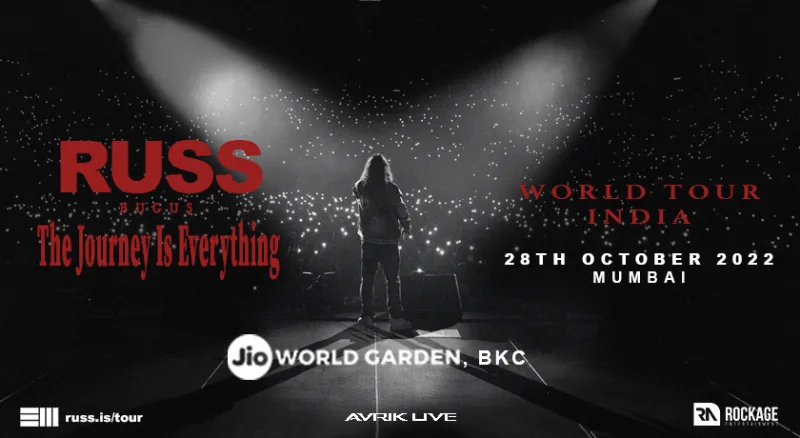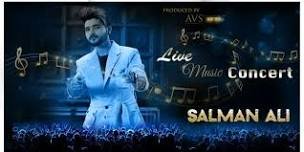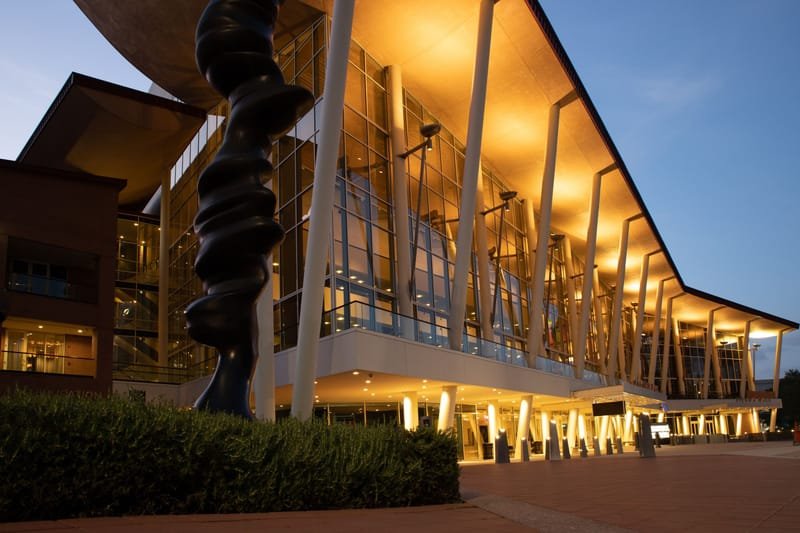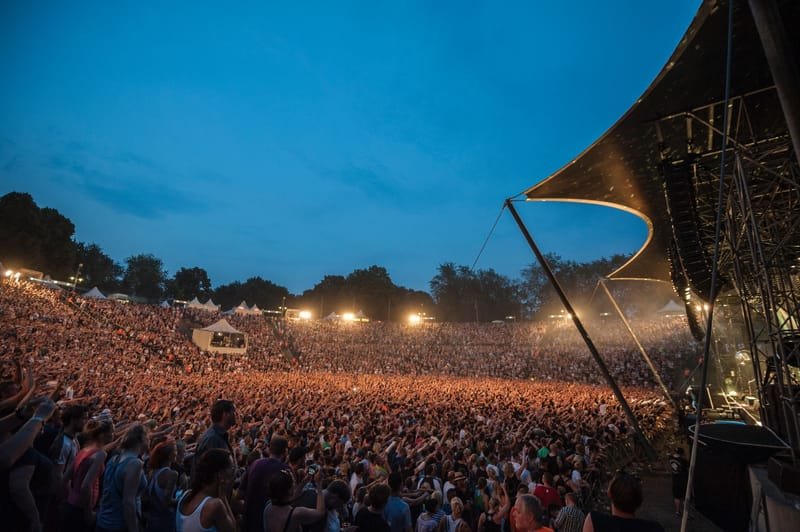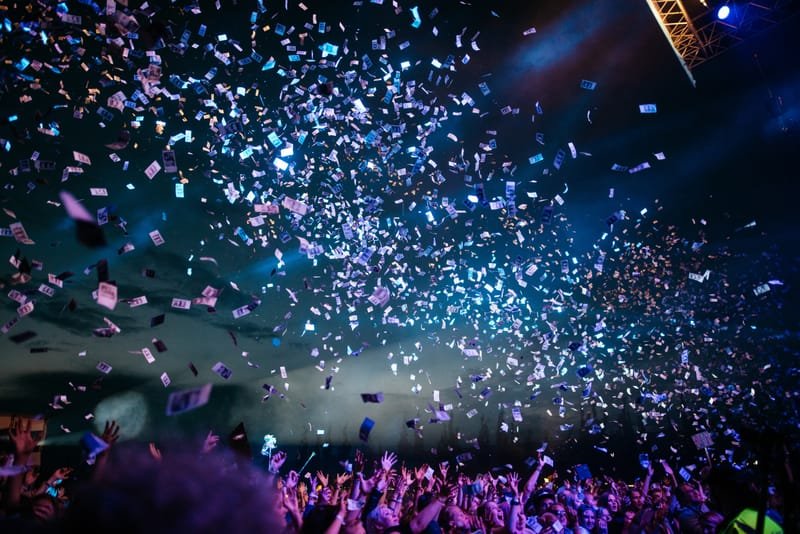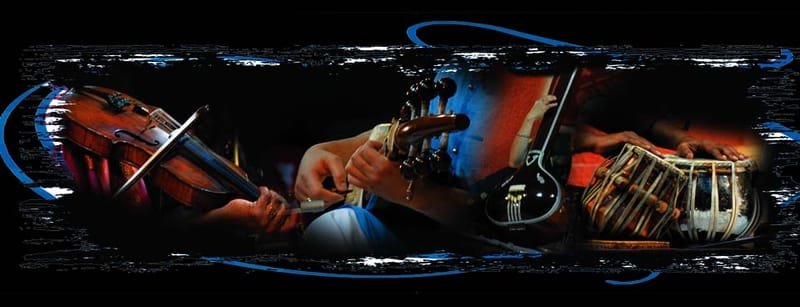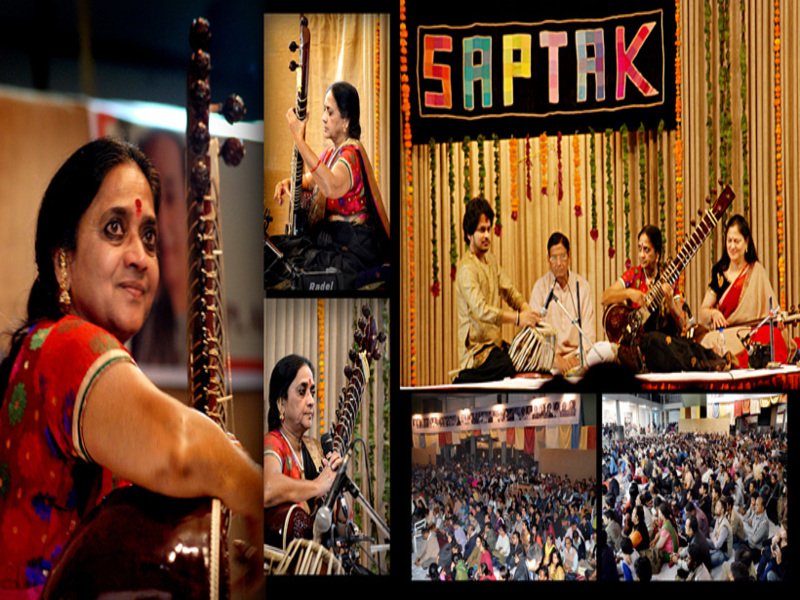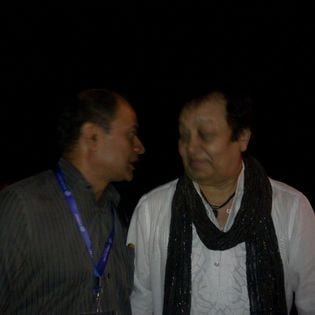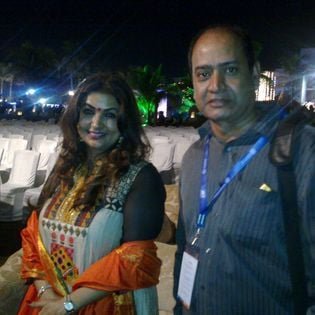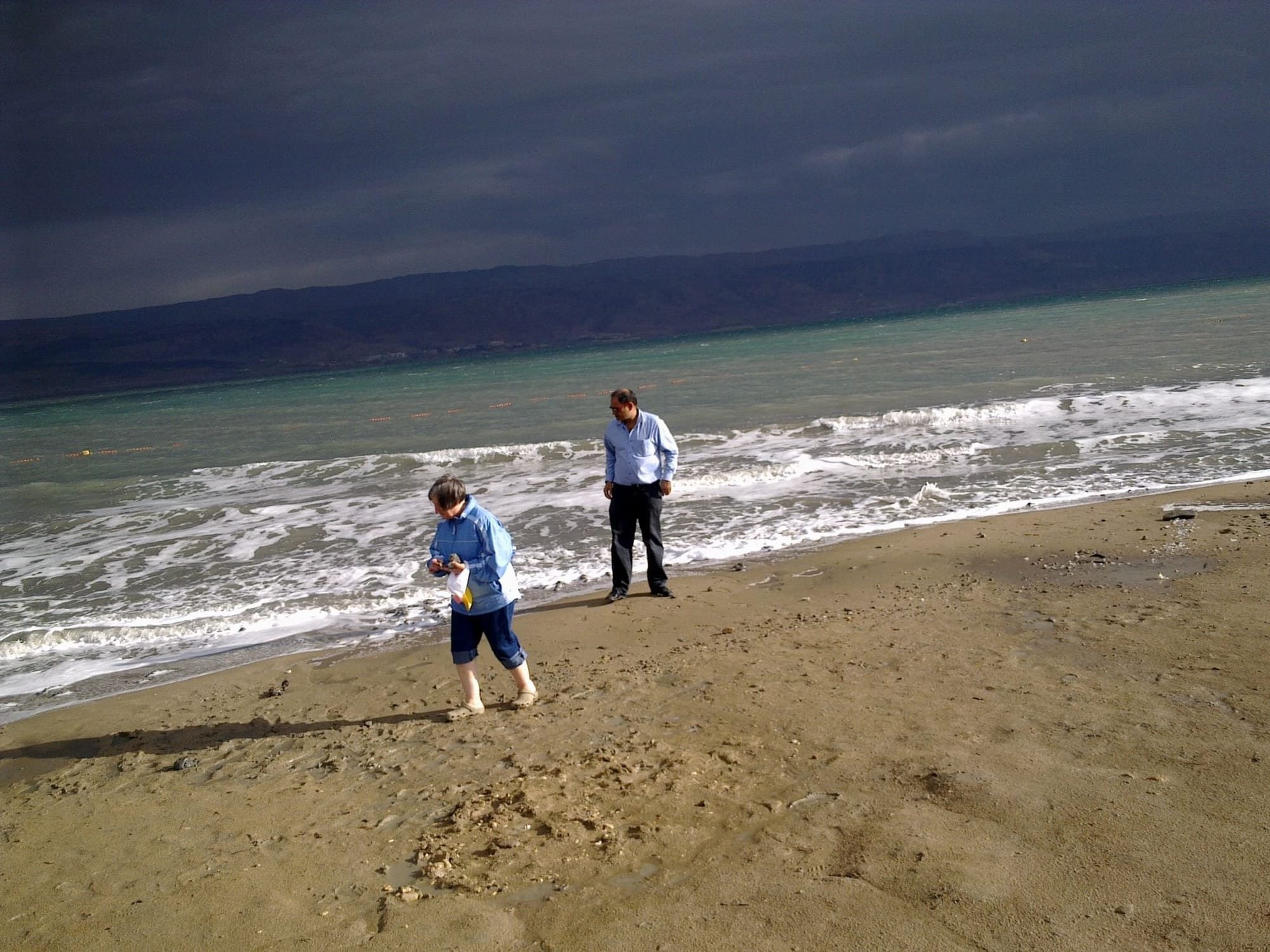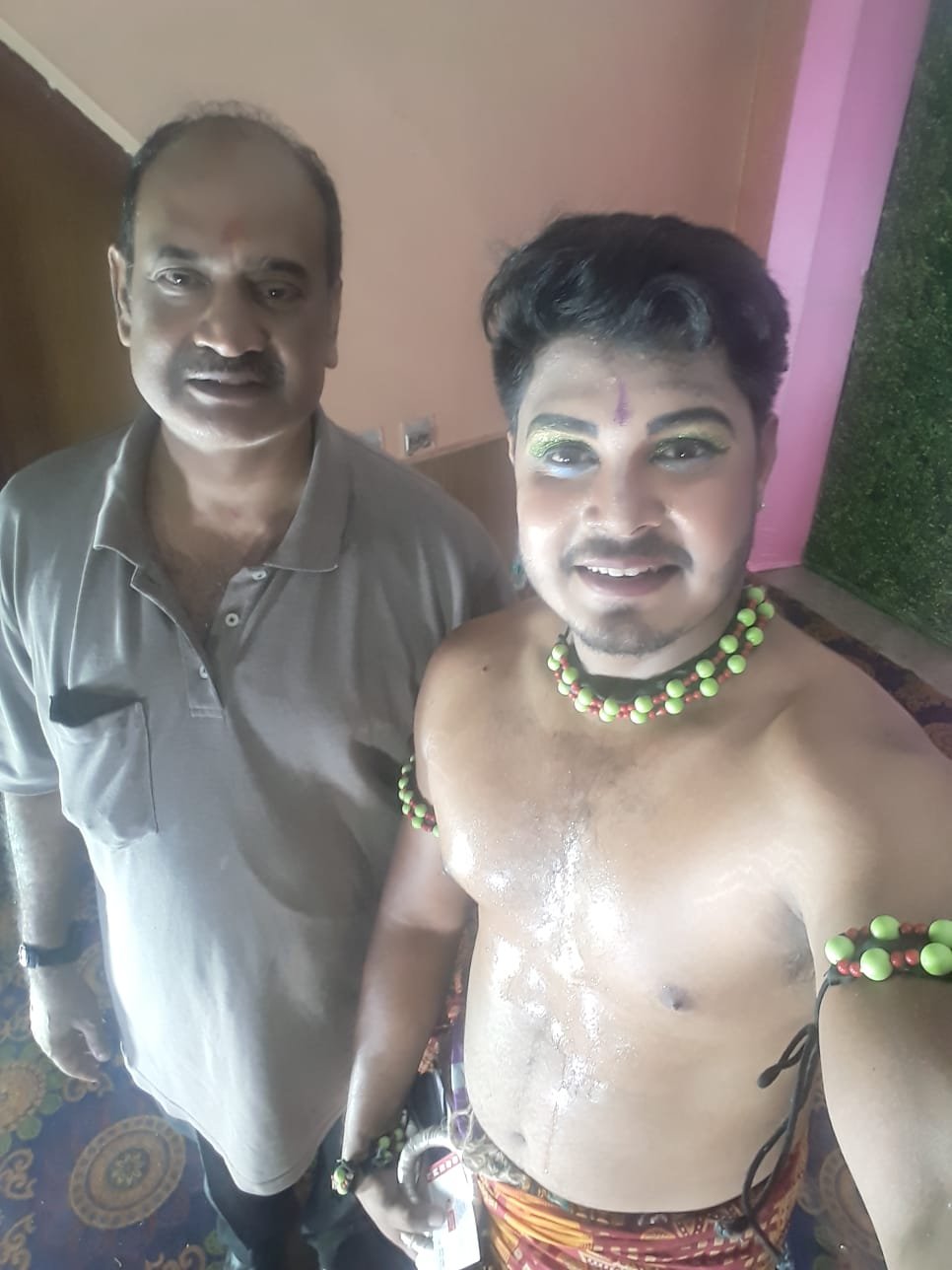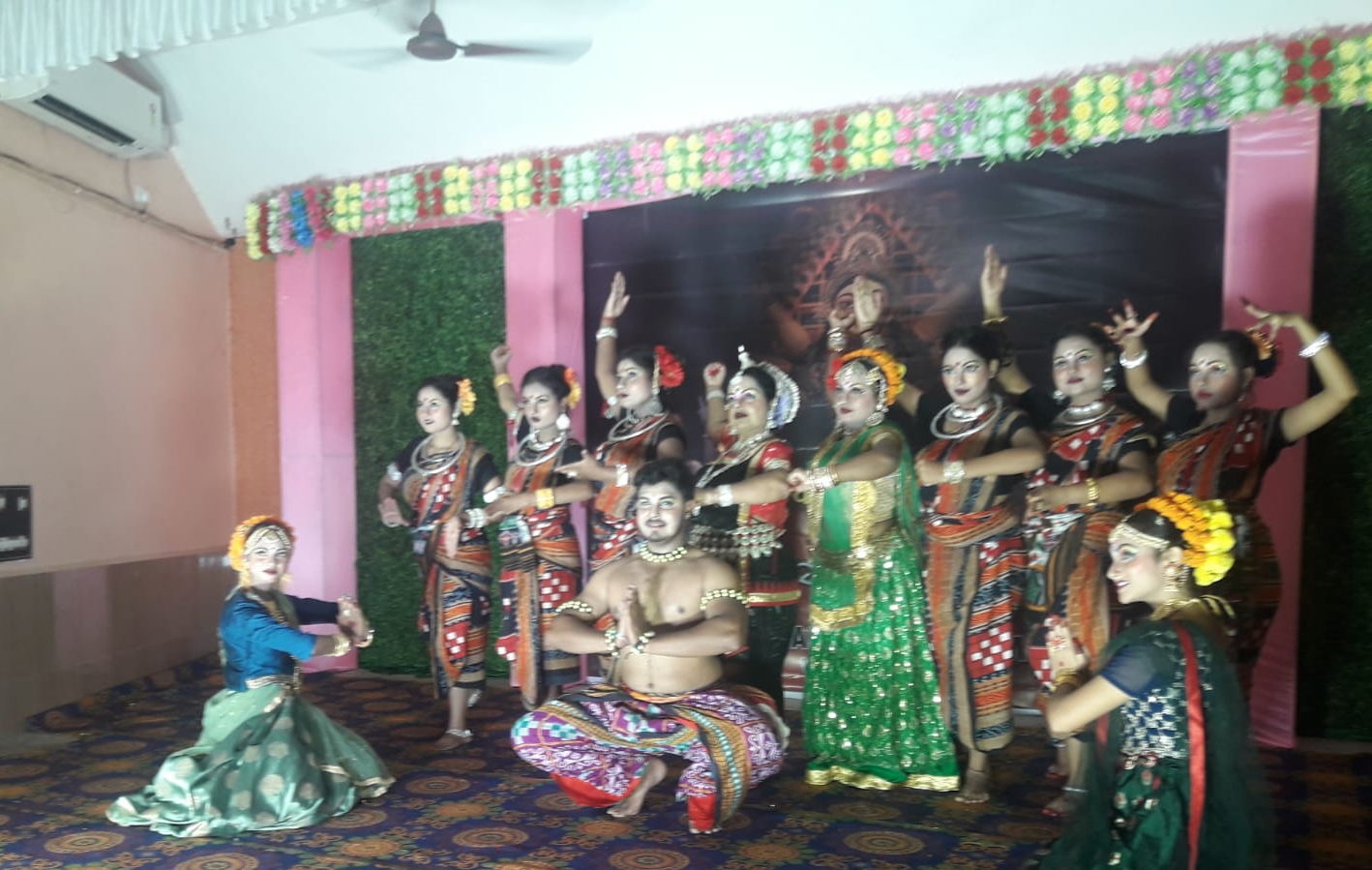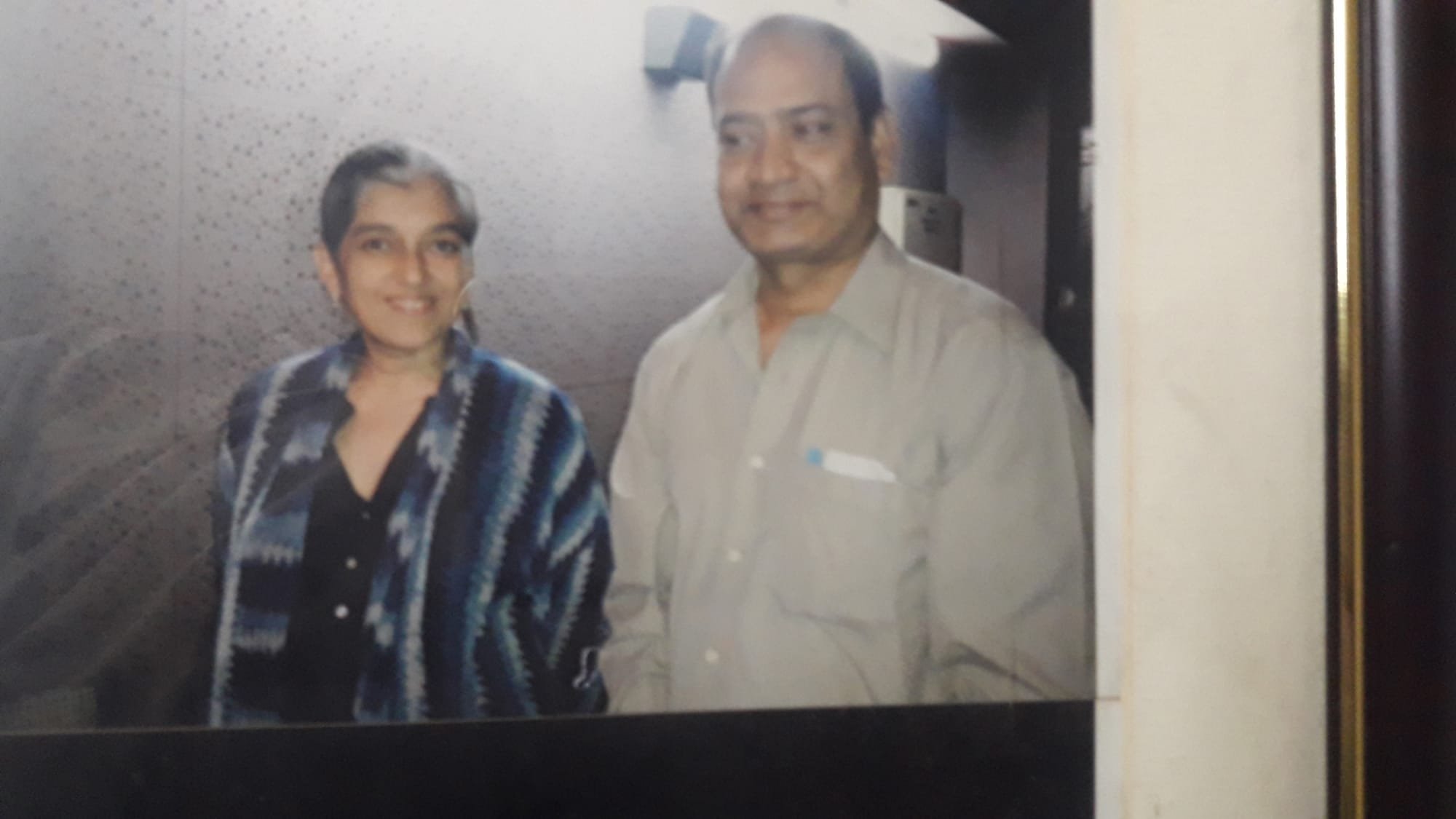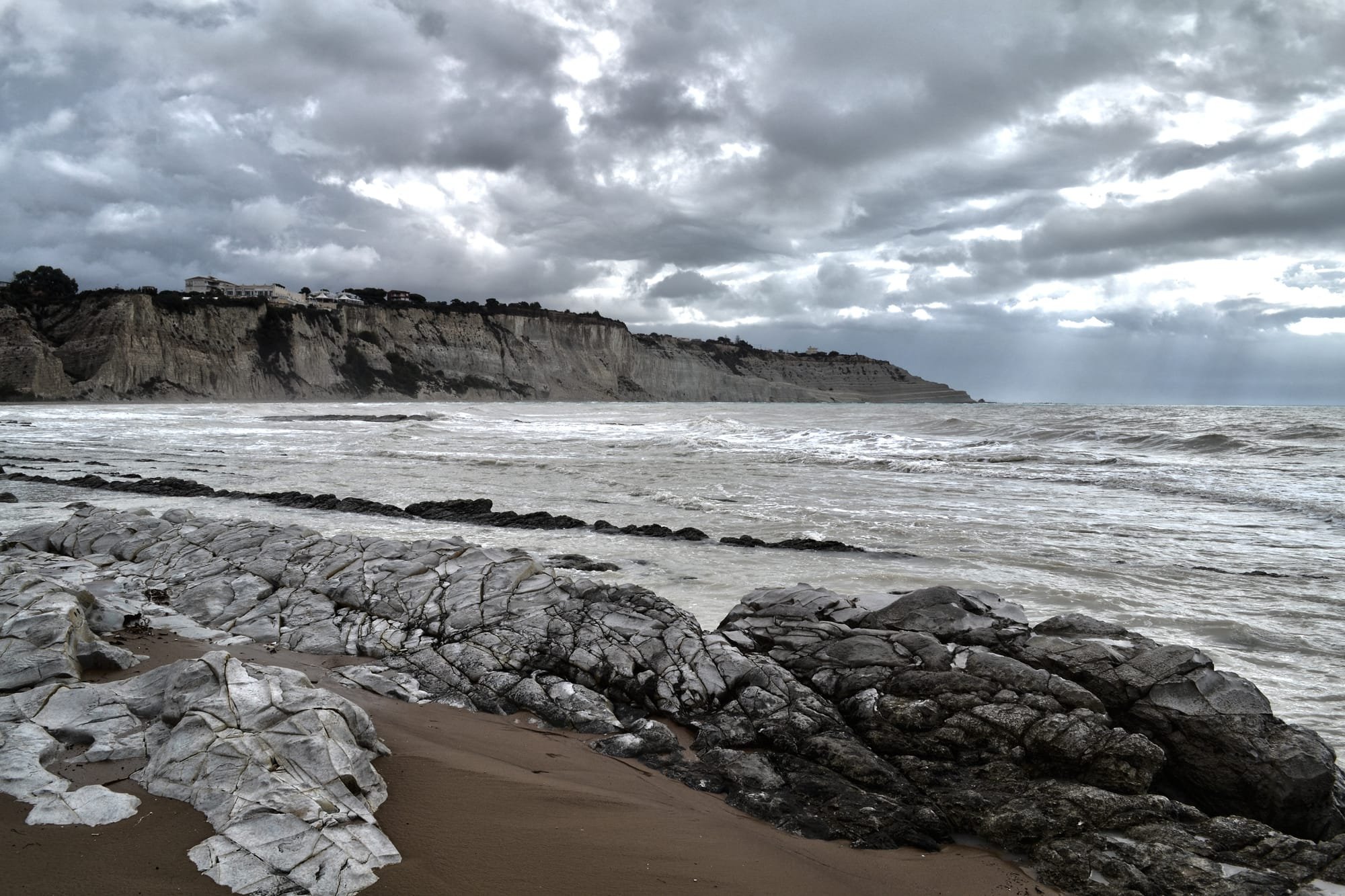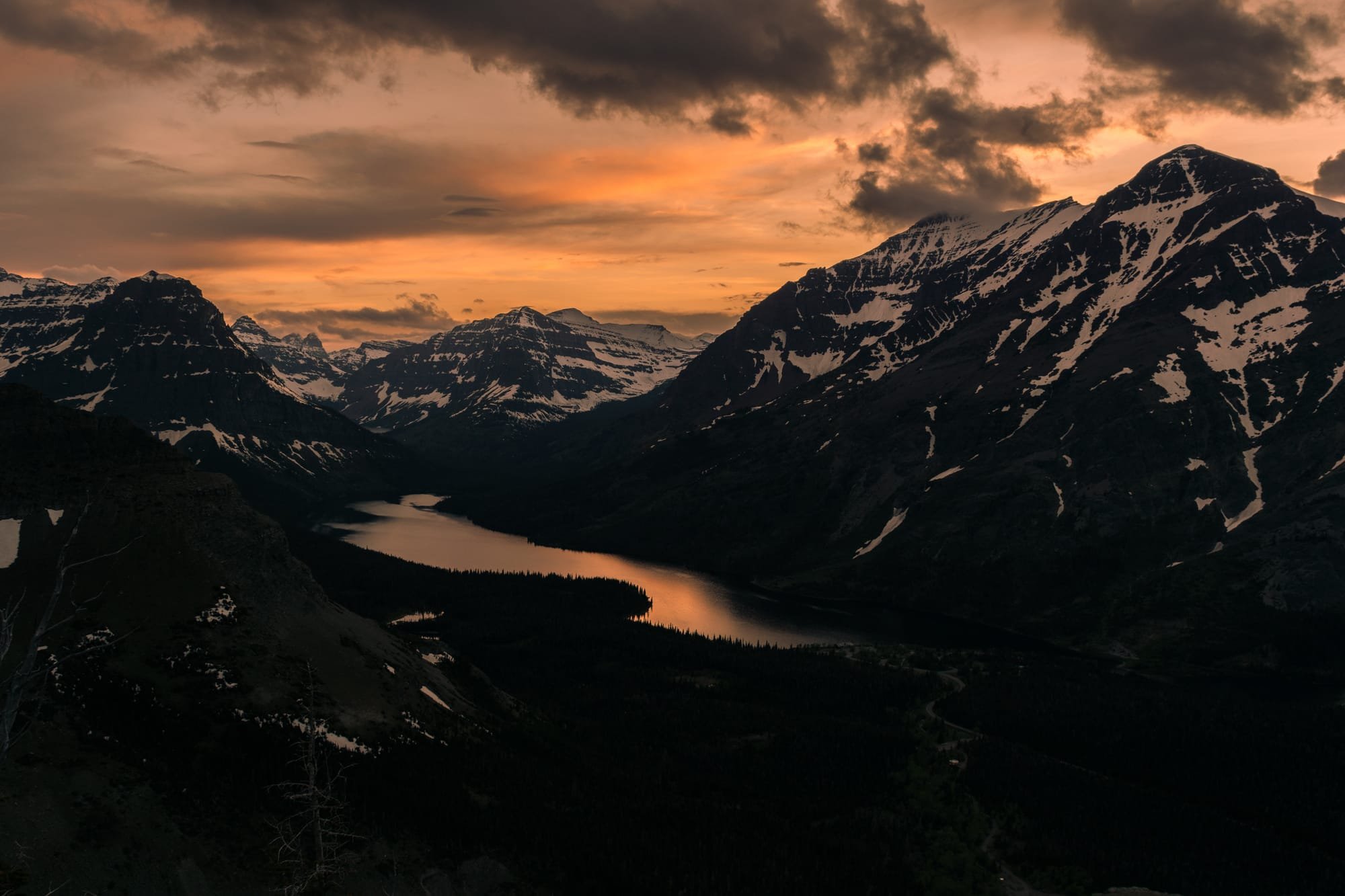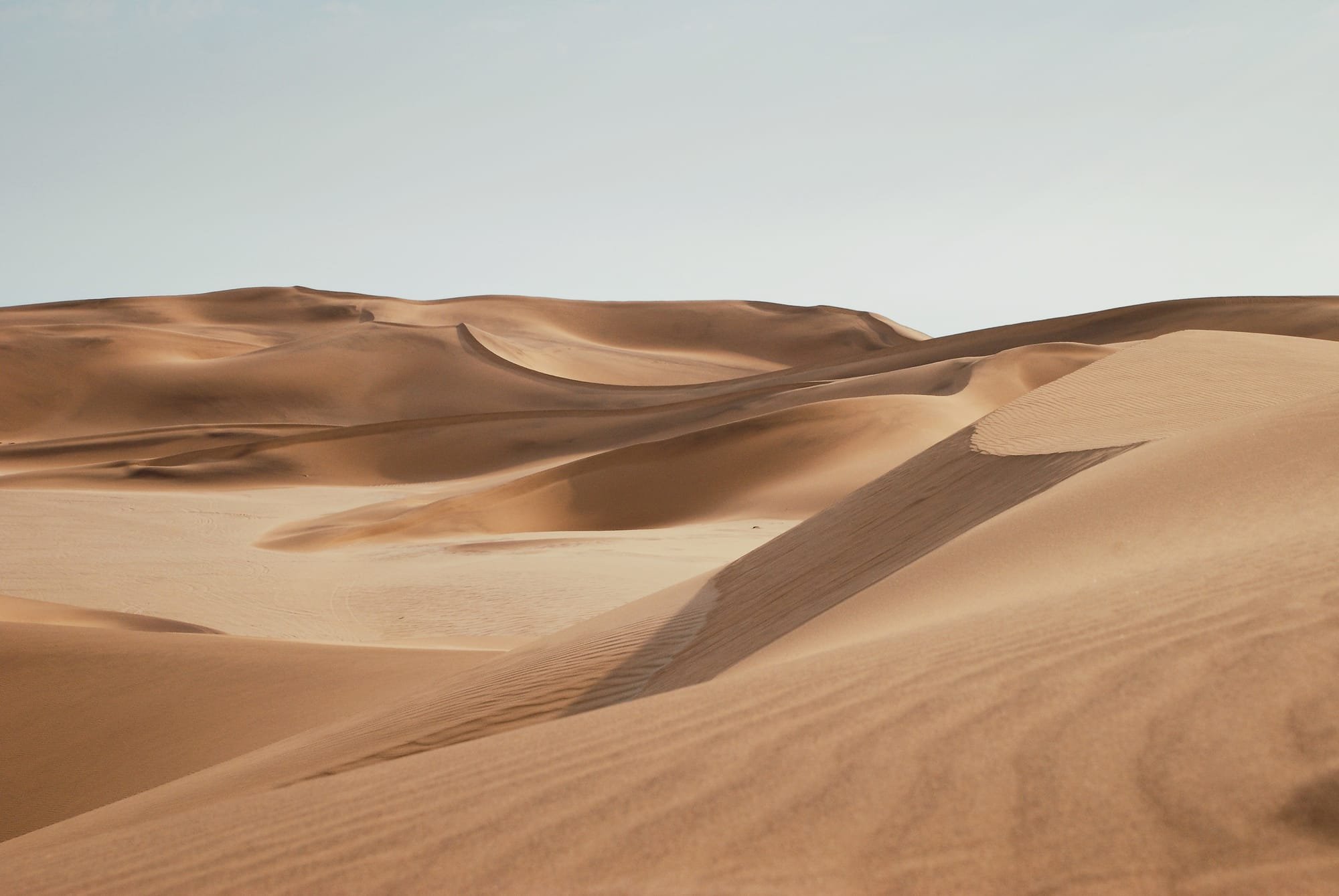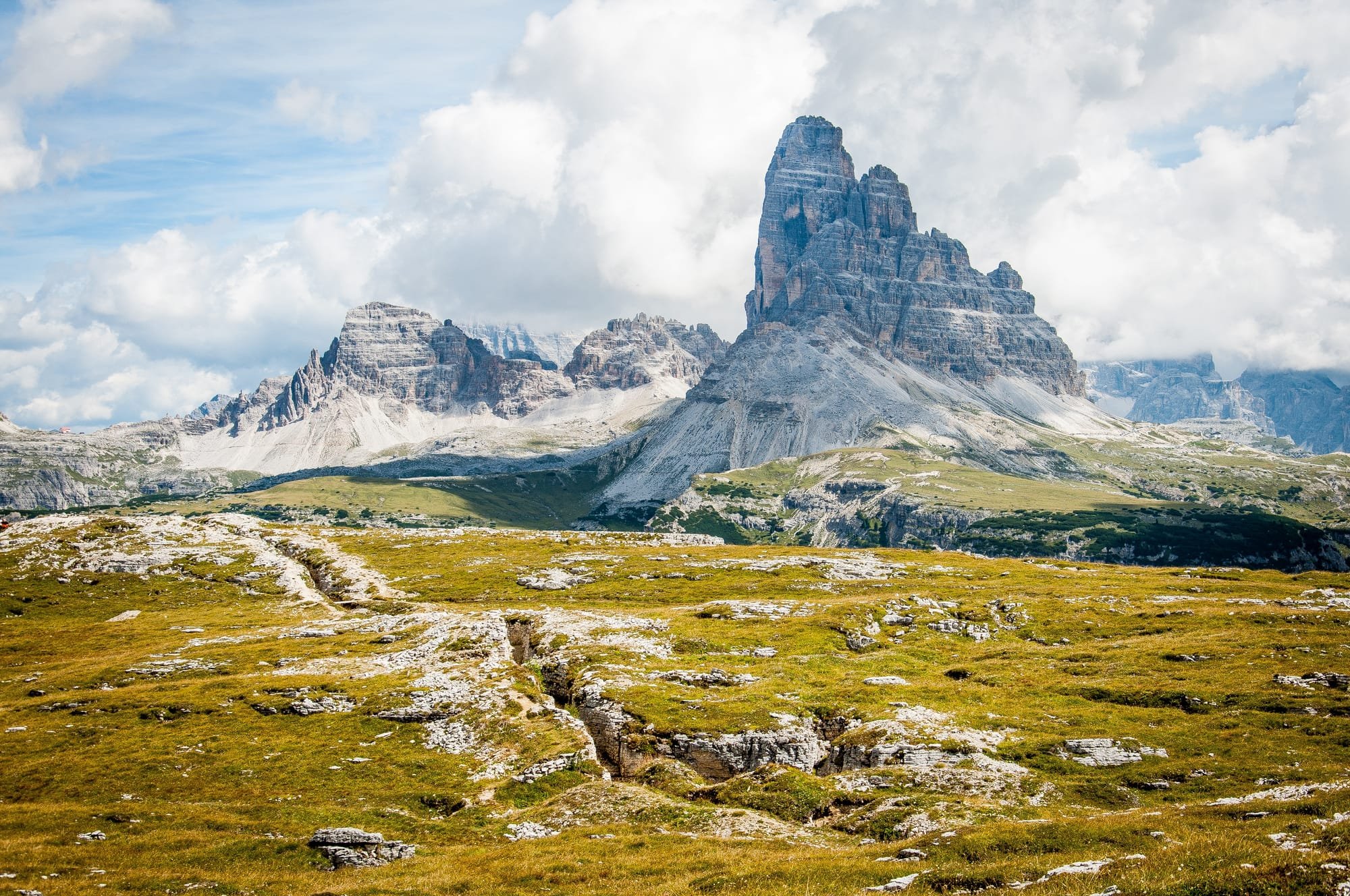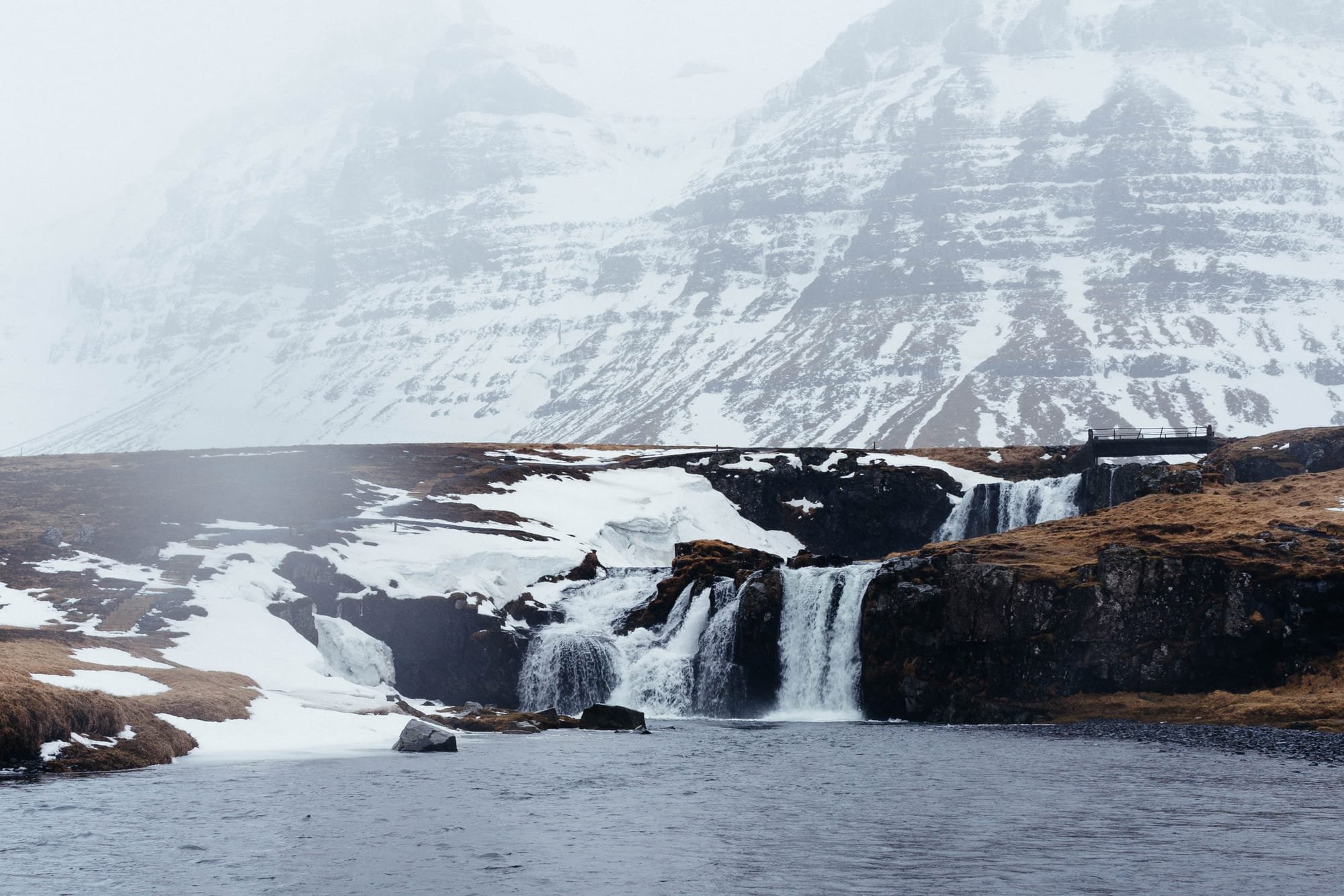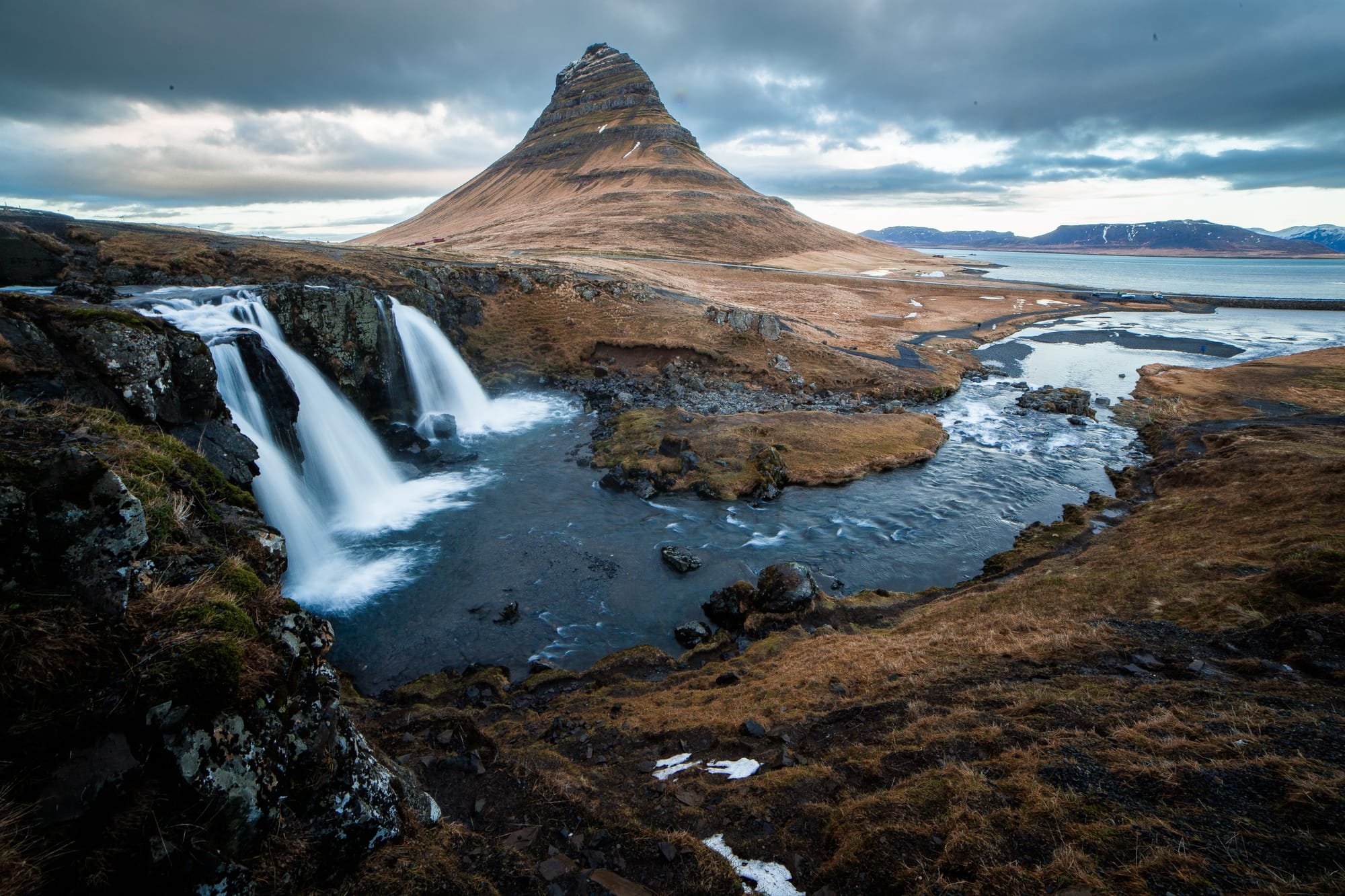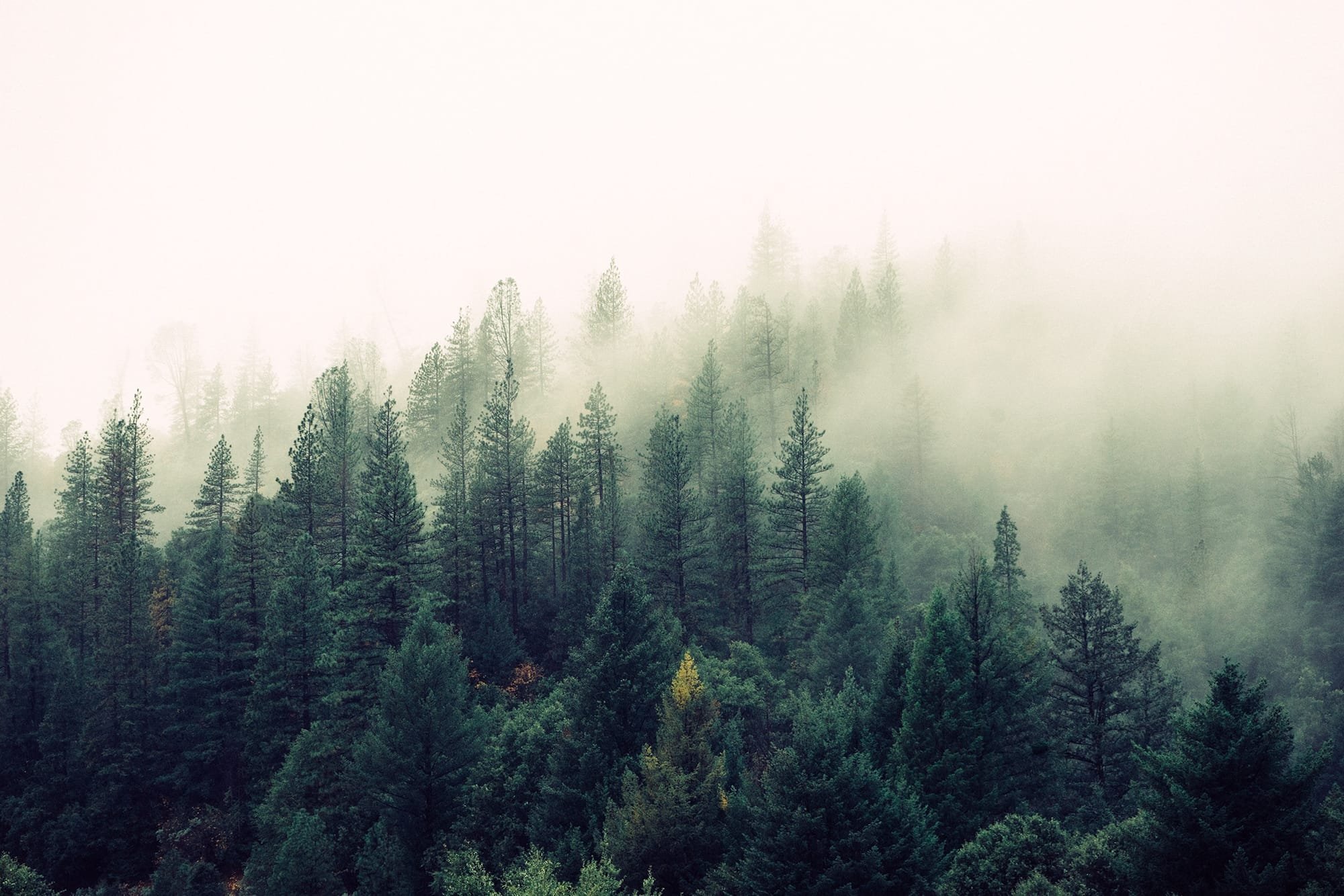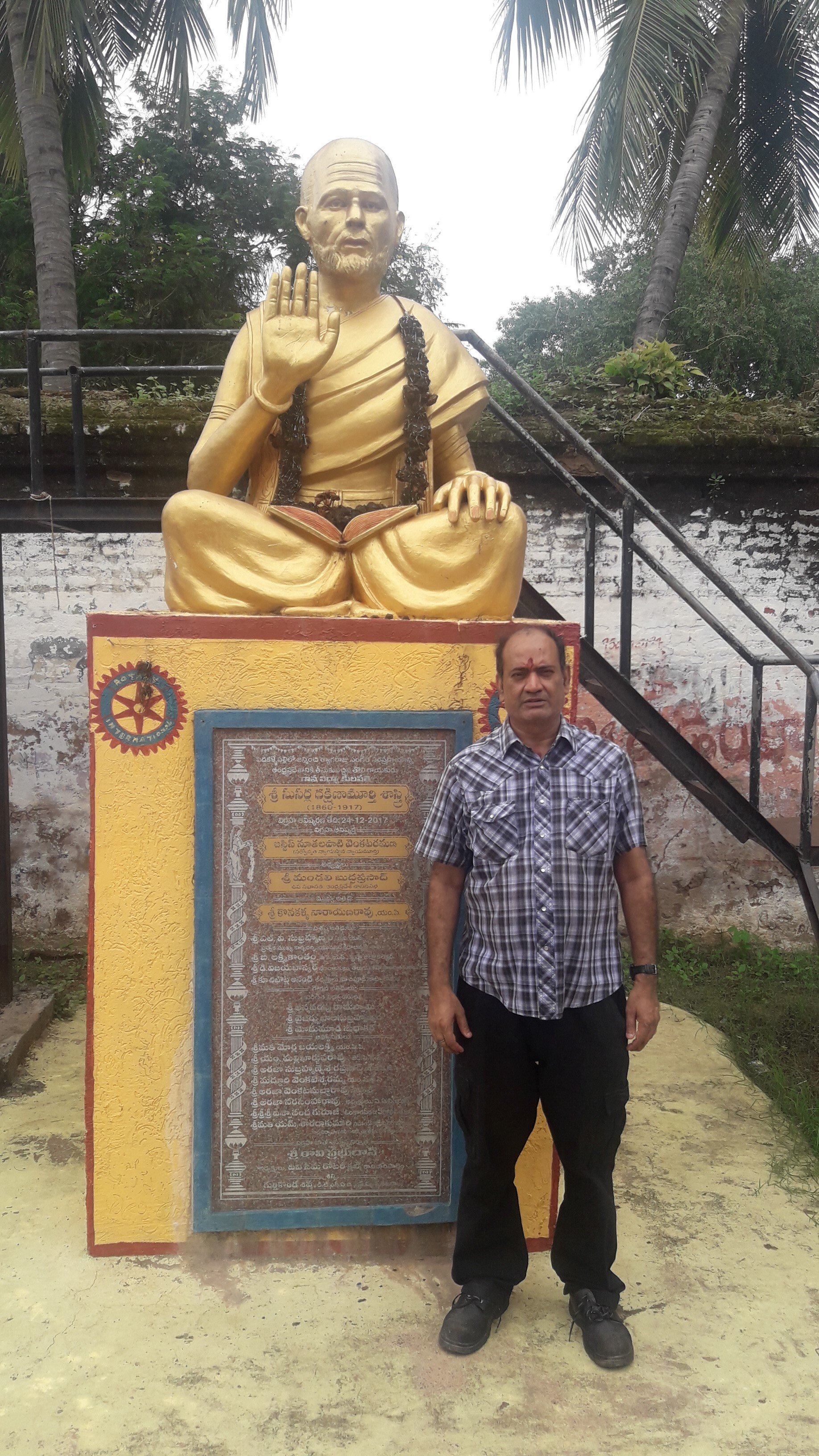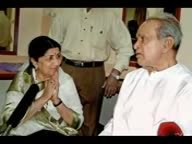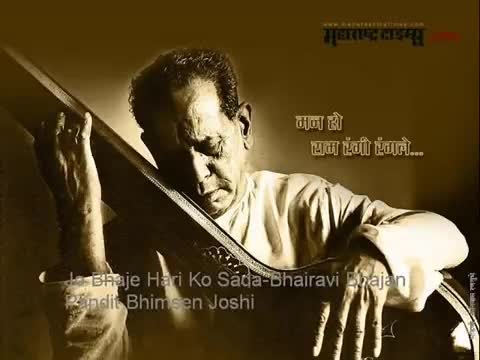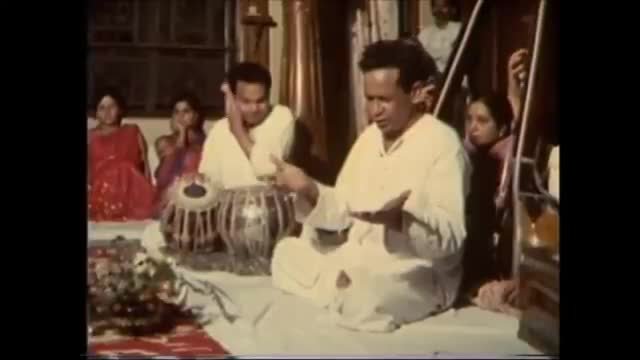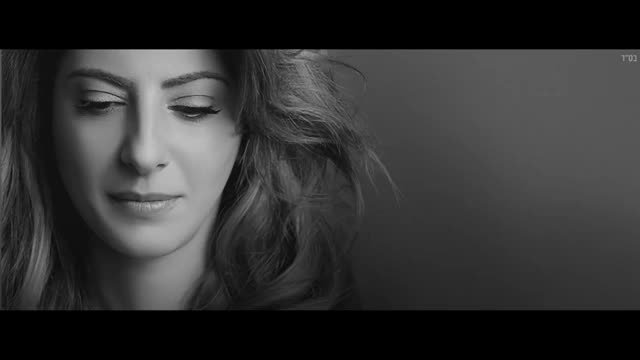Hear it. See it. Live it.
Let the music live inside of you
Biography
https://www.facebook.com/MusicalNavik
You Tube channel
https://www.youtube.com/channel/UC5TdP65tp7Xwoq0UJ4_Kk7g
About
Susarla Dakshinamurthi Jr. was an Indian music composer, playback singer, record producer, Carnatic musician, multi-instrumentalist, and an eminent violinist known for his works in the South Indian film industry, Hindi cinema, Sri Lankan cinema, and Hollywood.
Susarla Dakshinamurthi Jr. (Telugu: సుసర్ల దక్షిణామూర్తి; 1921 – 2012) was an Indian music composer, playback singer, record producer, Carnatic musician, multi-instrumentalist, and an eminent violinist known for his works in the South Indian film industry, Hindi cinema, Sri Lankan cinema, and Hollywood.
Dakshinamurthi is the grandson of Susarla Dakshinamurthi Sr. who belongs to the student clan of saint Tyagaraja.He is known for his compositions in works such as Narada Naradi (1946) (music director), Laila Majnu (1949) (playback singer), Paramanandayya Sishyula Katha (1950) (playback singer and music director), Samsaram (1950) (music director), Sri Lakshmamma Katha (1950) (playback singer and music director), Sarvadhikari (1951) (playback singer and music director), Yaar Paiyyan (1957) (music director), Santhanam (1955) (playback singer and music director), Jungle Moon Men (1955), (re-recordist and conductor), Ilavelpu (1956) (playback singer and music director), Veera Kankanam (1957) (music director), Annapurna (1959) (music director), Krishna Leelalu (1959) (music director), Narthanasala (1963), which won the National Film Award for Second Best Feature Film, Sri Madvirata Parvam (1979), Srimadvirat Veerabrahmendra Swami Charitra (1984).
Film Career
He then moved to cinema and conducted music alongside C. R. Subburaman. He made Lata Mangeshkar sing the ever popular song Nidurapora Thammuda, in his movie Santhanam (1955). Samsaram (1950) movie was a musical hit film with ever popular song Samsaram Samsaram by Ghantasala and A. M. Rajah in Telugu and Tamil languages respectively. He then ventured into Hollywood, and became a re-recordist, and conductor for works such as Jungle Moon Men (1955), and several others by Columbia pictures.
Dakshinamurthy has produced hits tracks such as Challani Raja O Chandamama written by Raghunath Panigrahi.[1] He sang Challani Punnami Vennelalone casting Relangi in the film. His music for Nartanasala (1963) particularly the songs Evari Kosam Ee Mandhahasam, Naravara Kuruvara (S. Janaki), Janani Siva Kaamini (P. Susheela), Salalitha Raga Sudharasa Saaram (M. Balamuralikrishna) and Sakhiya Vivarinchave are forever memorable.
Later he worked on musical hits such as Sri Madvirata Parvam (1979) and Srimadvirat Veerabrahmendra Swami Charitra (1984). He then ventured into film production and produced Mohini Rukmangada (1960) and Rama Sundari (1962) under Anuradha Movies.
Year Film Language Director Banner Co- Music Directors
| 1946 | Narada Naradi | Telugu | |||
| 1949 | Laila Majnu | Tamil | P. S. Ramakrishna Rao | Bharani Pictures | playback singer only; under C. R. Subburaman |
| 1949 | Laila Majnu | Telugu | P. S. Ramakrishna Rao | Bharani Pictures | playback singer only; under C. R. Subburaman |
| 1950 | Paramanandayya Shishyula Katha | Telugu | Kasturi Siva Rao | also playback singer | |
| 1950 | Samsaram | Telugu | L. V. Prasad | Sadhana Productions | |
| 1950 | Sri Lakshmamma Katha | Telugu | Ghantasala Balaramaiah | Pratibha Productions | C. R. Subburaman |
| 1951 | Sarvadhikari | Tamil | T. R. Sundaram | Modern Theatres | also playback singer |
| 1951 | Sarvadhikari | Telugu | T. R. Sundaram | Modern Theatres | also playback singer |
| 1952 | Valaiyapathi | Tamil | T. R. Sundaram | Modern Theatres | |
| 1952 | Kalyani | Tamil | Acharya M. Mastan | Modern Theatres | G. Ramanathan |
| 1952 | Atthainti Kaapuram | Telugu | Acharya M. Mastan | Modern Theatres | G. Ramanathan |
| 1953 | Sujatha | Sinhala | T. R. Sundaram | Modern Theatres | |
| 1953 | Daasi | Telugu | C. V. Ranganatha Das | Rajyam Pictures | C. R. Subburaman |
| 1953 | Velaikari Magal | Tamil | C. V. Ranganatha Das | Rajyam Pictures | C. R. Subburaman |
| 1954 | Varada Kageda? | Sinhala | T. R. Sundaram | Modern Theatres | |
| 1954 | Radala Piliruwa | Sinhala | T. R. Sundaram | Modern Theatres | |
| 1955 | Santanam | Kannada | C. V. Ranganatha Das | Sadhana Films | also playback singer |
| 1955 | Santanam | Tamil | C. V. Ranganatha Das | Sadhana Films | also playback singer |
| 1955 | Santanam | Telugu | C. V. Ranganatha Das | Sadhana Films | also playback singer |
| 1955 | Seda Sulang | Sinhala | T. Somesekeran | Ceylon Films Ltd. | Ananda Samarakoon |
| 1955 | Mangaiyar Thilakam | Tamil | L. V. Prasad | Vaidhya Films | |
| 1956 | Duppathage Duka | Sinhala | T. R. Sundaram | Modern Theatres | |
| 1956 | Ilavelpu | Telugu | D. Yoganand | Lakshmi Productions | also playback singer |
| 1956 | Alibabavum 40 Thirudargalum | Tamil | T. R. Sundaram | Modern Theatres | |
| 1956 | Alibabavum 40 Dongalu | Tamil | T. R. Sundaram | Modern Theatres | |
| 1956 | Harishchandra | Telugu | Chandrasekhar Rao | ||
| 1957 | Yaar Paiyan | Tamil | T. R. Raghunath | Vijaya Films | |
| 1957 | Saradam | Sinhala | T. Somasekaran | ||
| 1957 | Veera Kankanam | Telugu | G. R. Rao | ||
| 1957 | Baagyavathi | Tamil | L. V. Prasad | Ravi Productions | |
| 1957 | Bhale Baava | Telugu | Rajanikanth | ||
| 1957 | Sankalpam | Telugu | C. V. Ranganatha Das | ||
| 1957 | Suraya | Sinhala | T. R. Sundaram | Modern Theatres | |
| 1958 | Athisaya Thirudan | Tamil | P. Pullaiah | Sahini Art Productions | K. Prasad Rao |
| 1958 | Vana Mohini | Sinhala | T. R. Sundaram | Modern Theatres | |
| 1959 | Banda Ramudu | Telugu | P. Pullaiah | Sahini Art Productions | K. Prasad Rao |
| 1959 | Krishna Leelalu | Telugu | Chandrasekhara Rao Jampana | ||
| 1959 | Ulagam Sirikkirathu | Tamil | K. Ramamurthy | Prabhu Films | |
| 1960 | Annapurna | Telugu | V. Madhusudan Rao | Jagapathi Art Pictures | |
| 1960 | Ramasundari | Telugu | H. Krishnamurthy | ||
| 1960 | Aasha Sundari | Kannada | Hunsur Krishnamurthy | Gowri Productions | |
| 1961 | Pangaaligal | Tamil | G. Ramakrishnan | Iris Movies | |
| 1963 | Narthanasala | Telugu | Kamalakara Kameswara Rao | Rajyam Pictures | |
| 1966 | Paramanandayya Sishyula Katha | Telugu | C. Pullaiah | ||
| 1979 | Sri Madvirata Parvam | Telugu | N. T. Rama Rao | Ramakrishna Cine Studio | |
| 1984 | Srimadvirat Veerabrahmendra Swami Charitra | Telugu | N. T. Rama Rao | Ramakrishna Cine Studios |
YearFilmLanguageSongCo-SingerMusic
| 1949 | Laila Majnu | Tamil | Maghimaiyodu Sadhaa Ezhai | Ghantasala & Madhavapeddi Satyam | C. R. Subburaman |
| 1949 | Laila Majnu | Telugu | Manasu Gadaa Khudaa | Ghantasala & Madhavapeddi Satyam | C. R. Subburaman |
| 1950 | Paramanandayya Sishyulu | Telugu | Edira Lakshmana | Relangi & K. Rani | Ogirala Ramachandra Rao & S. Dakshinamurthi |
| E Leela Cheliyanu | |||||
| Polika Raada | K. Rani | ||||
| 1950 | Sri Lakshmamma Katha | Telugu | Hayiga Veenula Vinduga | P. Leela | C. R. Subburaman |
| 1950 | Samsaram | Telugu | Chitramainadi Vidhi | S. Dakshinamurthi | |
| Naa Maata Vinave | |||||
| Nagubatukada | |||||
| 1951 | Sarvadhikari | Tamil | Jaakradhaiyaa Jaakradhaiyaa | U. R. Chandra | S. Dakshinamurthi |
| Sandai Theerndhu Pochu | |||||
| Thadavi Paartthu Nallaa Irunthaa | P. A. Periyanayaki | ||||
| 1951 | Sarvadhikari | Telugu | Jagrattoyi Jagratha Jagrattoyi Nee | P. Leela | S. Dakshinamurthi |
| Sandai Theerndhu Pochu | |||||
| Sundarudaa Naa Chetula Punyamademo | P. Leela | ||||
| Saruku Choosi Baguntene Dabbuliyyandee | P. Leela | ||||
| 1951 | Samsaram | Telugu | Andaala Raja | Jikki | C. R. Subburaman |
| Vidhiye Pagaye | Jikki | ||||
| 1952 | Athinti Kapuram | Telugu | Prema Ayyo Prema | G. Ramanathan & S. Dakshinamurthi | |
| 1952 | Kalyani | Tamil | Kaadhal Aiyaiyo Kaadhal | G. Ramanathan & S. Dakshinamurthi | |
| 1952 | Daasi | Telugu | C. R. Subburaman & S. Dakshinamurthi | ||
| 1953 | Velaikari Magal | Telugu | Ambalatharase Arumarunthe | C. R. Subburaman & S. Dakshinamurthi | |
| 1955 | Santhanam | Telugu | Idhi Vintha Jeevithame | T. Sathyavathi | S. Dakshinamurthi |
| 1956 | Ilavelpu | Telugu | Challani Punnami Vennelalone | P. Susheela | S. Dakshinamurthi |
| 1957 | Sankalpam | Telugu | Kanugeeti Piliche | P. Leela | S. Dakshinamurthi |
| Vennala Chalikanthulalo | |||||
| Thappudu Panulu | Pithapuram Nageswara Rao |
Members
Ben Cube
Vocals
This is one of the team member slots you can have for your company. You can replace their picture and add any text you want here for describing your employees.
Jack Jeckson
Guitar
This is one of the team member slots you can have for your company. You can replace their picture and add any text you want here for describing your employees.
Peter Doe
Bass
This is one of the team member slots you can have for your company. You can replace their picture and add any text you want here for describing your employees.
Paul Alen
Drums
This is one of the team member slots you can have for your company. You can replace their picture and add any text you want here for describing your employees.
Shantanu Chatterjee
Harmonium
Musical Navik
Team
SHARAD SOOD
GURU
SHANTANU
GURU
GOPAL
S.S.R.Laxmi
Violin
Team
SHARAD SOOD
GURU
SHANTANU
GURU
GOPAL
S.S.R.Laxmi
Violin
Contact Us
Services
CONSULTING
FINANCIAL
MARKETING
Online Courses
Course Content
You First Step
0 Lessons
Campaigns
0 Lessons
About INDIAN musical instruments
1. ALGOZA
Developed around 7500 BC in Mesopotamia Civilization.
Alghoza is a paired woodwind instrument. It is traditionally used by Baloch, Saraiki, Sindhi, Kutchi, Punjabi and Rajasthani folk musicians. It consists of two joined beak flutes, one for melody, the second for drone. The flutes are either tied together or may be held together loosely with the hands.
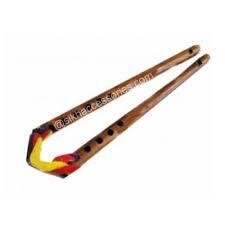 2. Bugchu
2. Bugchu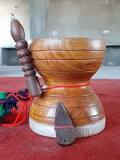
A bansuri is an ancient side blown flute originating from the Indian subcontinent. It is an aerophone produced from bamboo, used in Hindustani classical music.
It is referred to as nadi and tunava in the Rigveda and other Vedic texts of Hinduism. Its importance and operation is discussed in the Sanskrit text Natya Shastra.
A bansuri is traditionally made from a single hollow shaft of bamboo with six or seven finger holes.
Some modern designs come in ivory, fiberglass and various metals. The six hole instrument covers two and a half octaves of music.
The bansuri is typically between 30 centimetres (12 in) and 75 centimetres (30 in) in length, and the thickness of a human thumb. One end is closed, and few centimeters from the closed end is its blow hole. Longer bansuris feature deeper tones and lower pitches. The traditional design features no mechanical keys, and the musician creates the notes they want by covering and uncovering the various finger holes.
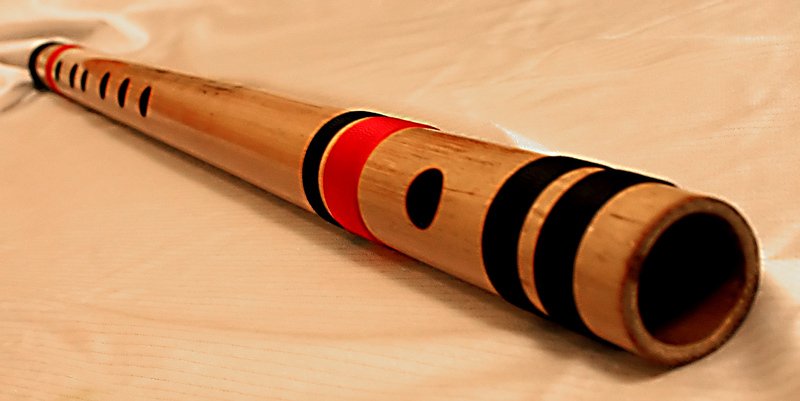
What is difference between Flute & Bansuri?
The concert flute (also known as classical flute) has many holes and keys. In fact, the Bansuri has 8 holes which are covered and uncovered in different combinations, and the concert flute has 15 holes throughout the instrument (not including the hole you blow across)
4. DHOLAK
The dholak is a two-headed hand drum, a folk percussion instrument. The instrument is about 45 cm in length and 27 cm in breadth and is widely used in qawwali, kirtan, lavani and bhangra.
The drum has two different sized drumheads. The smaller drumhead is made of goat skin for sharp notes while the bigger drumhead is made of buffalo skin for low pitch.
The two drumheads allow a combination of bass and treble with rhythmic high and low pitches. The body or shell of the Dholak is made of sheesham or mango wood. The larger membrane, played with a stick, has a compound (Syahi) applied which helps to lower the pitch and produce the sound. The smaller drumhead is played with the left hand which produces a high pitch.
A cotton rope lacing and screw-turnbuckle are used to release tension while playing. Steel rings/pegs are twisted inside the laces to attain fine tuning. Dholak can be played in three ways — on the player’s lap, while standing, or pressed down with one knee while sitting on the floor.
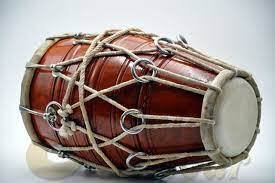
4. GHATAM
The ghaṭam (Sanskrit: घटं ghaṭaṁ, Kannada: ಘಟ ghaṭah, Tamil: கடம் ghatam, Telugu: ఘటం ghatam, Malayalam: ഘടം, ghatam) is a percussion instrument used in various repertoires across India. It's a variant played in Punjab and known as gharha as it is a part of Punjabi folk traditions. Its analogue in Rajasthan is known as the madga and pani mataqa ("water jug").
The ghatam is one of the most ancient percussion instruments of India. It is a clay pot with narrow mouth. From the mouth, it slants outwards to form a ridge. Made mainly of clay backed with brass or copper filings with a small amount of iron filings, the pitch of the ghatam varies according to its size. The pitch can be slightly altered by the application of plasticine clay or water.[1][page needed]
Although the ghatam is the same shape as an ordinary Indian domestic clay pot, it is made specifically to be played as an instrument. The tone of the pot must be good and the walls should be of even thickness to produce an even tone and nice sound.
Ghatams are mostly manufactured in Manamadurai, a place near Madurai in Tamil Nadu. Though this instrument is manufactured in other places like Chennai and Bangalore, too, Manamadurai ghatams have special tonal quality. It is believed that the mud is of special quality. The Manamadurai ghaṭam is a heavy, thick pot with tiny shards of brass mixed into the clay. This type of ghaṭam is harder to play but produces a sharp metallic ringing sound which is favored by some players.
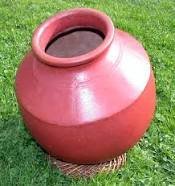
5. MRIDANGAM
The mridangam is a percussion instrument of ancient origin. It is the primary rhythmic accompaniment in a Carnatic music ensemble. In Dhrupad, a modified version, the pakhawaj, is the primary percussion instrument. A related instrument is the Kendang, played in Maritime Southeast Asia.
During a percussion ensemble, the mridangam is often accompanied by the ghatam, the kanjira, and the morsing.
Etymology
The word "Mridangam" is formulated by the union (sandhi) of the two Sanskrit words mŗt (clay or earth) and anga (limb), as the earliest versions of the instrument were made of hardened clay.
Legend
In ancient Hindu sculpture, painting, and mythology, the mridangam is often depicted as the instrument of choice for a number of deities including Ganesha (the remover of obstacles) and Nandi, who is the vehicle and follower of Shiva. Nandi is said to have played the mridangam during Shiva's primordial tandava dance, causing a divine rhythm to resound across the heavens. The mridangam is thus also known as "deva vaadyam," or "Divine Instrument".[citation needed]
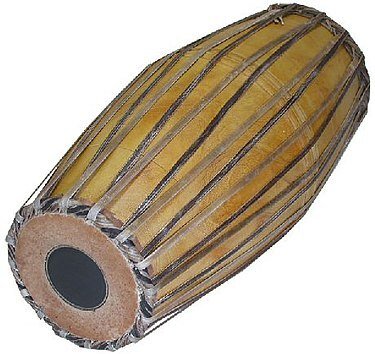
The mridangam is a percussion instrument of ancient origin. It is the primary rhythmic accompaniment in a Carnatic music ensemble.
Who invented mridangam?
The size of the mridangam is one of the important factor for the sound it produces. The pitch of the mridangam varies according to its size. Dholak whereas is a derived instrument. The Dholak (sometimes dholaki) is a classical North Indian hand drum.
6. NADASWARAM
The nādasvaram, nāgasvaram, nātacuvaram, nāyanam, nāgasvara, or variously spelled as nadaswaram, nadhaswaram, nagaswaram, nataswaram and nathaswaram, is a double reed wind instrument from South India. It is used as a traditional classical instrument in Tamilnadu, Andhra Pradesh, Karnataka, and Kerala.
What is the meaning of nadaswaram?
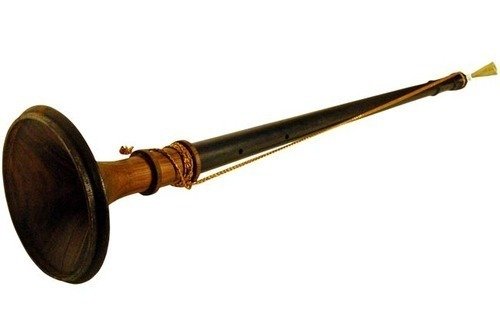
7. PAKHWAJ
The pakhavaj is a barrel-shaped, two-headed drum, originating from the Indian subcontinent, the oldest version of double sided drums and its descendants are mridangam of Southern India and kendang of Maritime Southeast Asia and other South Asian double-headed drums. Its older forms were made with clay.
Pakhavaj acquired a place of great importance in Hindustani music till the nineteenth century. It was the only accompanying instrument of the dhrupad style of singing and for the instruments played in dhrupad style such as been, rabab, sursingar and surbahar, etc., and thus was looked upon with great reverence. With the fall of dhrupad and with the advent of khayal in the late eighteenth and early nineteenth century, pakhavaj also lost its reigning position, and made way for the tabla. Pakhavaj is mainly an instrument to be played upon with open hand (thapi), which suppresses the delicateness of bols of khayal, thumri and sitar, whereas the tabla is played with fingers. It is a more supple and delicate instrument and suits the temperament of delicate and emotive kinds of musical forms such as khayal, thumri and sitar
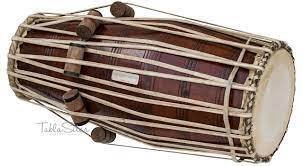 8. JALTARANG
8. JALTARANGThe jal tarang is a melodic percussion instrument that originates from the Indian subcontinent. It consists of a set of ceramic or metal bowls filled with water. The bowls are played by striking the edge with beaters, one in each hand
The earliest mention of the Jaltarang is found in 'Vatsyayana's Kamasutra' as playing on musical glasses filled with water.
Jal-tarang was also mentioned in the medieval Sangeet Parijaat text, which categorized this instrument under Ghan-Vadya (idiophonic instruments in which sound is produced by striking a surface, also called concussion idiophones.) The SangeetSaar text considers 22 cups to be a complete jal tarang and 15 cups to be one of mediocre status. The cups, of varying sizes, are made of either bronze or porcelain. Jal-tarang was also called jal-yantra in medieval times, and poets of the Krishna cult (also called Ashtachhap poets) have mentioned this instrument.
In modern days, it has fallen into obscurity. Literally, jal tarang means 'waves in water', but it indicates motion of sound created or modified with the aid of water. Among wave-instruments, it is the most prominent and ancient. This traditional instrument is used in Indian classical music. Some scholars think that in the ancient period these were in routine use around the eastern border of India.
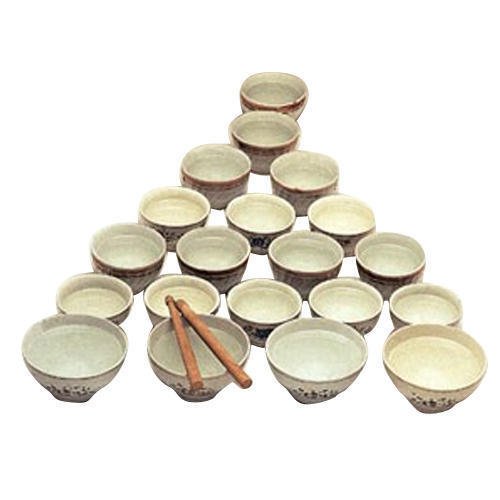 9. Khartal
9. KhartalUsually made of wood or metal, a khartal player will hold one 'male' and 'female' khartal in each hand. The 'male' khartal is usually thicker and is held with the thumb while the 'female' khartal is usually thinner and is mainly balanced on the ring finger, which represents the fire element.
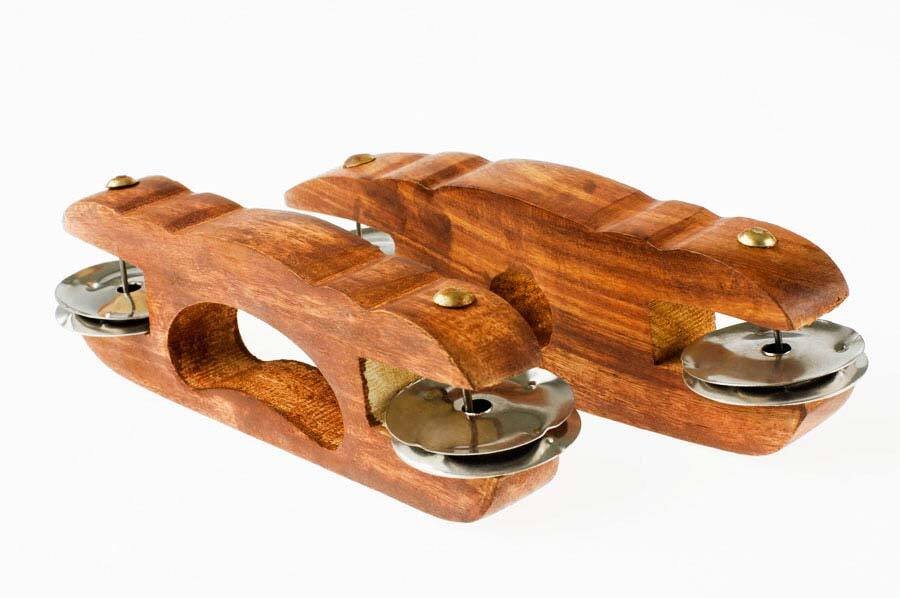 Where is Khartal from?
Where is Khartal from?History. Kartal ('eagle' in Turkish, although etymologically inaccurate) was a fishing village on the shore of the Marmara Sea during the Byzantine Empire, called Kartalimen or Kartalimin in Greek, and was founded at the beginning of the 6th century.
What does the name Kartal mean?
9. RAVANHATA
A ravanahatha (variant names: ravanhatta, rawanhattha, ravanastron, ravana hasta veena) is an ancient bowed, stringed instrument, used in India, Pakistan, Sri Lanka, and surrounding areas. It has been suggested as an ancestor of the violin.
The ravanahatha's sound box may be a gourd, a halved coconut shell or hollowed-out cylinder of wood, with a membrane of stretched goat or other hide. A neck of wood or bamboo is attached, carrying between one and four or more peg-tuned strings of gut, hair or steel, strung over a bridge. Some examples may have several sympathetic strings. The bow is usually of horsehair; examples vary in length.
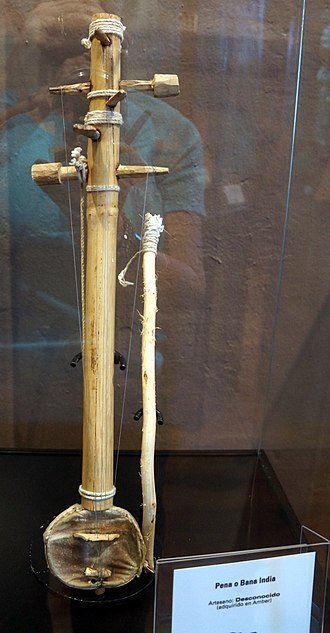
10. SARANGI
The sārangī is a bowed, short-necked string instrument played in traditional music from India – Punjabi folk music, Rajasthani folk music, and Boro folk music (there known as the serja) – also in Pakistan and Bangladesh. It is said to most resemble the sound of the human voice through its ability to imitate vocal ornaments such as gamaks (shakes) and meends (sliding movements). The sarangi (Nepali) is a different instrument, traditional to Nepal.
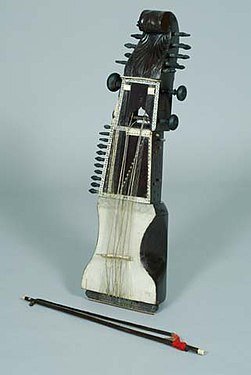
11. SAROD
The sarod is a stringed instrument, used in Hindustani music on the Indian subcontinent. Along with the sitar, it is among the most popular and prominent instruments.[1] It is known for a deep, weighty, introspective sound, in contrast with the sweet, overtone-rich texture of the sitar, with sympathetic strings that give it a resonant, reverberant quality. A fretless instrument, it can produce the continuous slides between notes known as meend (glissandi), which are important in Indian music.
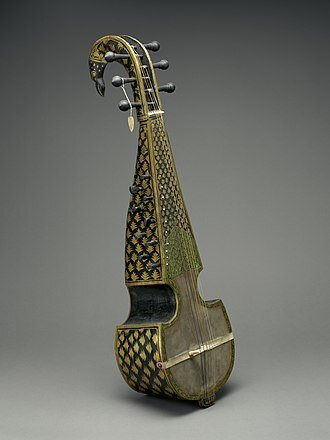
12. SHANKA
A Shankha has religious ritual importance in Hinduism. It is the shell of any suitable sea snail which had a hole made for the performer's embouchure. In Hindu history, the shankha is a sacred emblem of The Hindu preserver god Vishnu.
 13. SHENAI
13. SHENAIThe shehnai is a musical instrument, originating from the Indian subcontinent. It is made of wood, with a double reed at one end and a metal or wooden flared bell at the other end.[1][2][3] Its sound is thought to create and maintain a sense of auspiciousness and sanctity and as a result, is widely used during marriages, processions and in temples although it is also played in concerts. It was a part of the Naubat or traditional ensemble of nine instruments found in the royal court. The shehnai is similar to South India's nadaswaram.
This tubular instrument gradually broadens towards the lower end. It usually has between six and nine holes. It employs one set of quadruple reeds, making it a quadruple reed woodwind. To master the instrument, the musician must employ various and intricate embouchure and fingering techniques.
The shehnai has a range of two octaves, from the A below middle C to the A one line above the treble clef (A3 to A5 in scientific pitch notation).
A shehnai is often but not always made with a body of wood or bamboo and a flared metal end.
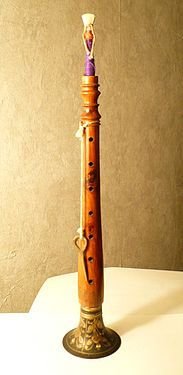
14. SITAR
The sitar is a plucked stringed instrument, originating from the Indian subcontinent, used in Hindustani classical music. The instrument was invented in medieval India, flourished in the 18th century, and arrived at its present form in 19th-century India
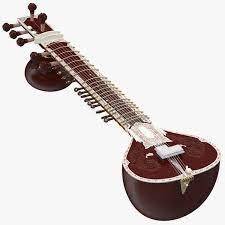
15. TABLA
A tabla is a pair of twin hand drums from the Indian subcontinent. Since the 18th century, it has been the principal percussion instrument in Hindustani classical music, where it may be played solo, as accompaniment with other instruments and vocals, and as a part of larger ensembles.
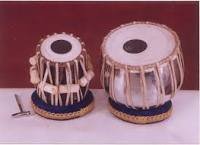
16. TANPURA
The tanpura (Hindi: तानपूरा) or tambura, tanpuri is a long-necked plucked string instrument, originating from India, found in various forms in Indian music. It does not play melody but rather supports and sustains the melody of another instrument or singer by providing a continuous harmonic bourdon or drone. A tanpura is not played in rhythm with the soloist or percussionist: as the precise timing of plucking a cycle of four strings in a continuous loop is a determinant factor in the resultant sound, it is played unchangingly during the complete performance. The repeated cycle of plucking all strings creates the sonic canvas on which the melody of the raga is drawn. The combined sound of all strings–each string a fundamental tone with its own spectrum of overtones–supports and blends with the external tones sung or played by the soloist.
Hindustani musicians favour the term tanpura whereas Carnatic musicians say tambura; tanpuri is a smaller variant sometimes used for accompanying instrumental soloists.
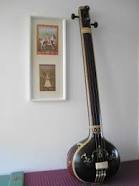
17. Tasha
Tassa is a drum ensemble with ancient Persian origins, also known as Taash or Taasha drums. These drums disseminated to India with the Mughal migration, and from India spread worldwide with the Indian diaspora.
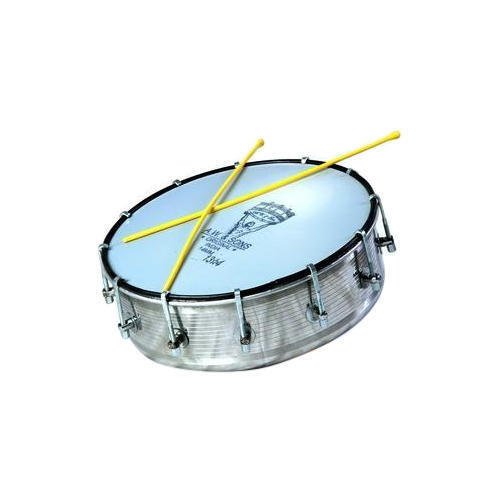 18. UDUKOI
18. UDUKOIThe udukkai, udukai or udukku is a member of the family of membranophone percussion instruments of India and Nepal used in folk music and prayers in Tamil Nadu. The drums are an ancient design of hourglass drums similar to the northern damaru and southern idakka
Udukku Kotti Pattu, is a traditional art form of Kerala where the vocal rendition of the song is accompanied by the Udukku rhythms. It has been reported that Udukku was popular in Jafna, Sri Lanka even during the 9th century
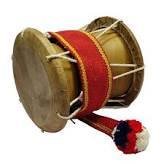
19. Veena
The veena, also spelled vina, comprises various chordophone instruments from the Indian subcontinent. Ancient musical instruments evolved into many variations, such as lutes, zithers and arched harps.
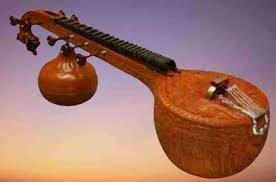
About WORLD musical RhytHmS (By alphabetically)
The drum is a member of the percussion group of musical instruments. In the Hornbostel-Sachs classification system, it is a membranophone.[1] Drums consist of at least one membrane, called a drumhead or drum skin, that is stretched over a shell and struck, either directly with the player's hands, or with a percussion mallet, to produce sound. There is usually a resonant head on the underside of the drum. Other techniques have been used to cause drums to make sound, such as the thumb roll. Drums are the world's oldest and most ubiquitous musical instruments, and the basic design has remained virtually unchanged for thousands of years.[1]
Drums may be played individually, with the player using a single drum, and some drums such as the djembe are almost always played in this way. Others are normally played in a set of two or more, all played by the one player, such as bongo drums and timpani. A number of different drums together with cymbals form the basic modern drum kit.
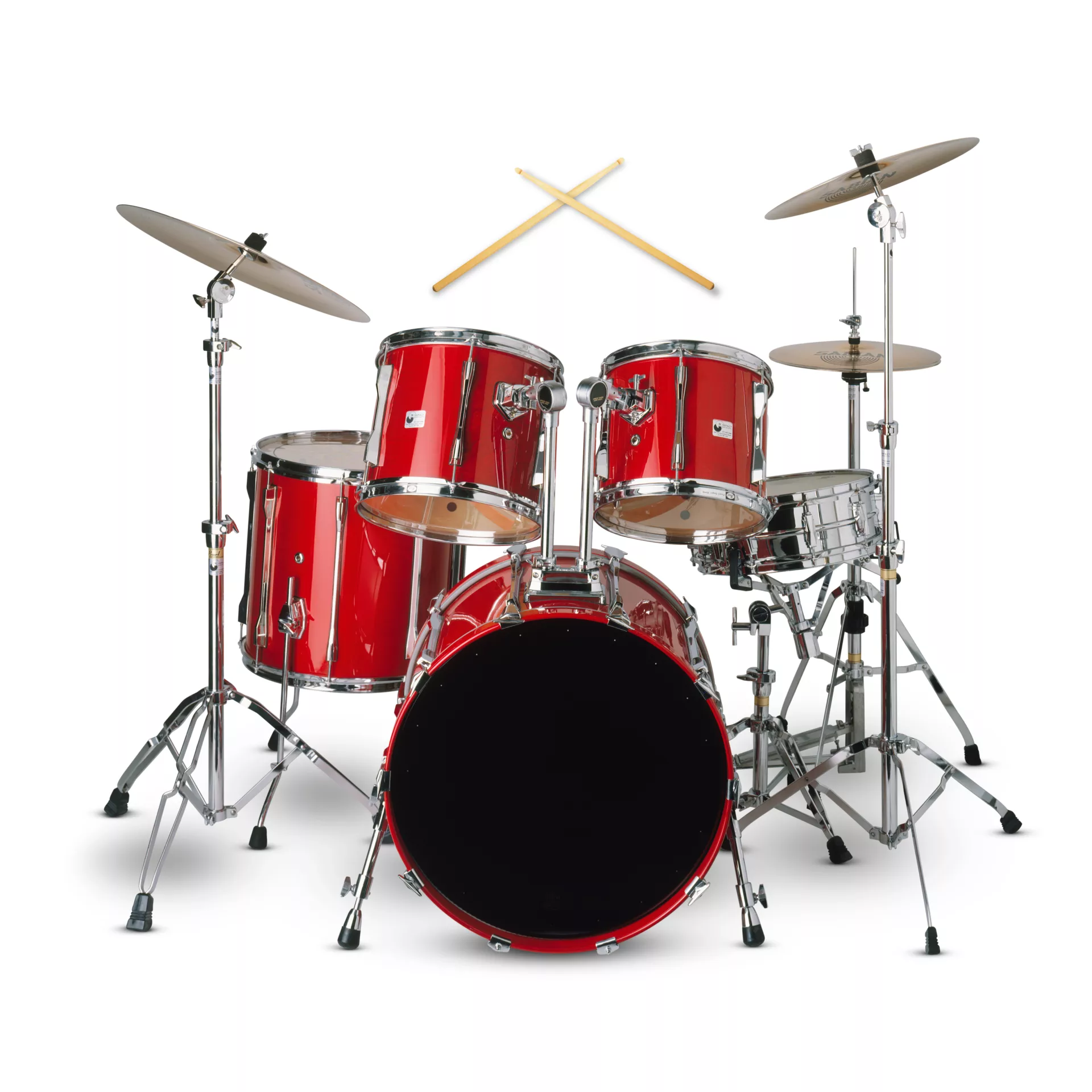
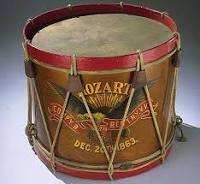 Uses
UsesDrums are usually played by striking with the hand, a beater attached to a pedal, or with one or two sticks with or without padding. A wide variety of sticks are used, including wooden sticks and sticks with soft beaters of felt on the end. In jazz, some drummers use brushes for a smoother, quieter sound. In many traditional cultures, drums have a symbolic function and are used in religious ceremonies. Drums are often used in music therapy, especially hand drums, because of their tactile nature and easy use by a wide variety of people.
In popular music and jazz, "drums" usually refers to a drum kit or a set of drums (with some cymbals, or in the case of harder rock music genres, many cymbals), and "drummer" to the person who plays them.
Drums acquired even divine status in places such as Burundi, where the karyenda was a symbol of the power of the king.
Guitar
The guitar is a fretted musical instrument that typically has six strings. It is usually held flat against the player's body and played by strumming or plucking the strings with the dominant hand, while simultaneously pressing selected strings against frets with the fingers of the opposite hand. A plectrum or individual finger picks may also be used to strike the strings. The sound of the guitar is projected either acoustically, by means of a resonant chamber on the instrument, or amplified by an electronic pickup and an amplifier.
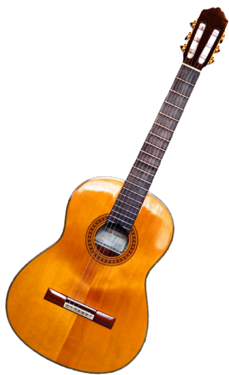 The guitar is classified as a chordophone – meaning the sound is produced by a vibrating string stretched between two fixed points. Historically, a guitar was constructed from wood with its strings made of catgut. Steel guitar strings were introduced near the end of the nineteenth century in the United States; nylon strings came in the 1940s.The guitar's ancestors include the gittern, the vihuela, the four-course Renaissance guitar, and the five-course baroque guitar, all of which contributed to the development of the modern six-string instrument.
The guitar is classified as a chordophone – meaning the sound is produced by a vibrating string stretched between two fixed points. Historically, a guitar was constructed from wood with its strings made of catgut. Steel guitar strings were introduced near the end of the nineteenth century in the United States; nylon strings came in the 1940s.The guitar's ancestors include the gittern, the vihuela, the four-course Renaissance guitar, and the five-course baroque guitar, all of which contributed to the development of the modern six-string instrument.There are three main types of modern guitar: the classical guitar (Spanish guitar/nylon-string guitar); the steel-string acoustic guitar or electric guitar; and the Hawaiian guitar (played across the player's lap).
Piano
The piano is a stringed keyboard instrument in which the strings are struck by wooden hammers that are coated with a softer material (modern hammers are covered with dense wool felt; some early pianos used leather). It is played using a keyboard, which is a row of keys (small levers) that the performer presses down or strikes with the fingers and thumbs of both hands to cause the hammers to strike the strings. It was invented in Italy by Bartolomeo Cristofori around the year 1700.
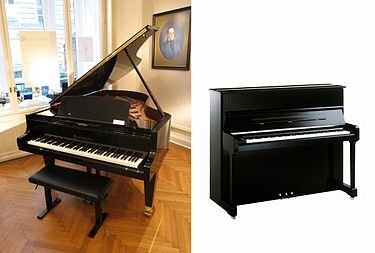
The word "piano" is a shortened form of pianoforte, the Italian term for the early 1700s versions of the instrument, which in turn derives from clavicembalo col piano e forte (key cimbalom with quiet and loud) and fortepiano. The Italian musical terms piano and forte indicate "soft" and "loud" respectively, in this context referring to the variations in volume (i.e., loudness) produced in response to a pianist's touch or pressure on the keys: the greater the velocity of a key press, the greater the force of the hammer hitting the strings, and the louder the sound of the note produced and the stronger the attack. The first fortepianos in the 1700s allowed for a quieter sound and greater dynamic range than the harpsichord.
A piano usually has a protective wooden case surrounding the soundboard and metal strings, which are strung under great tension on a heavy metal frame. Pressing one or more keys on the piano's keyboard causes a wooden or plastic hammer (typically padded with firm felt) to strike the strings. The hammer rebounds from the strings, and the strings continue to vibrate at their resonant frequency.[4] These vibrations are transmitted through a bridge to a soundboard that amplifies by more efficiently coupling the acoustic energy to the air.
When the key is released, a damper stops the strings' vibration, ending the sound. Notes can be sustained, even when the keys are released by the fingers and thumbs, by the use of pedals at the base of the instrument. The sustain pedal enables pianists to play musical passages that would otherwise be impossible, such as sounding a 10-note chord in the lower register and then, while this chord is being continued with the sustain pedal, shifting both hands to the treble range to play a melody and arpeggios over the top of this sustained chord. Unlike the pipe organ and harpsichord, two major keyboard instruments widely used before the piano, the piano allows gradations of volume and tone according to how forcefully or softly a performer presses or strikes the keys.
Most modern pianos have a row of 88 black and white keys, 52 white keys for the notes of the C major scale (C, D, E, F, G, A and B) and 36 shorter black keys, which are raised above the white keys, and set further back on the keyboard. This means that the piano can play 88 different pitches (or "notes"), spanning a range of a bit over seven octaves. The black keys are for the "accidentals" (F♯/G♭, G♯/A♭, A♯/B♭, C♯/D♭, and D♯/E♭), which are needed to play in all twelve keys. More rarely, some pianos have additional keys (which require additional strings), an example of which is the Bösendorfer Concert Grand 290 Imperial, which has 97 keys.
Most notes have three strings, except for the bass, which graduates from one to two. The strings are sounded when keys are pressed or struck, and silenced by dampers when the hands are lifted from the keyboard. Although an acoustic piano has strings, it is usually classified as a percussion instrument rather than as a stringed instrument, because the strings are struck rather than plucked (as with a harpsichord or spinet); in the Hornbostel–Sachs system of instrument classification, pianos are considered chordophones. There are two main types of piano: the grand piano and the upright piano.
The grand piano has a better sound and gives the player a more precise control of the keys, and is therefore the preferred choice for every situation in which the available floor-space and the budget will allow, as well as often being considered a requirement in venues where skilled pianists will frequently give public performances. The upright piano, which necessarily involves some compromise in both tone and key action compared to a grand piano of equivalent quality, is nevertheless much more widely used, because it occupies less space (allowing it to fit comfortably in a room where a grand piano would be too large) and is significantly less expensive.
During the 1800s, influenced by the musical trends of the Romantic music era, innovations such as the cast iron frame (which allowed much greater string tensions) and aliquot stringing gave grand pianos a more powerful sound, with a longer sustain and richer tone. In the nineteenth century, a family's piano played the same role that a radio or phonograph played in the twentieth century; when a nineteenth-century family wanted to hear a newly published musical piece or symphony, they could hear it by having a family member play a simplified version on the piano. During the nineteenth century, music publishers produced many types of musical works (symphonies, opera overtures, waltzes, etc.)
in arrangements for piano, so that music lovers could play and hear the popular pieces of the day in their home. The piano is widely employed in classical, jazz, traditional and popular music for solo and ensemble performances, accompaniment, and for composing, songwriting and rehearsals. Although the piano is very heavy and thus not portable and is expensive, its musical versatility, the large number of musicians–both amateurs and professionals– trained in it, and its wide availability in performance venues, schools and rehearsal spaces have made it one of the Western world's most familiar musical instruments.
Marabi
Marabi is a style of music that evolved in South Africa over the last century. The early part of the 20th century saw the increasing urbanisation of black South Africans in mining centres such as the gold mining area around Johannesburg - the Witwatersrand
What is the meaning of marabi?
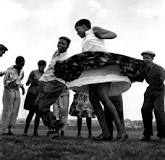
GUITAR GREATS HEROS
Guitar Heros
Jimi Hendrix
James Marshall "Jimi" Hendrix (born Johnny Allen Hendrix; November 27, 1942 – September 18, 1970) was an American guitarist, singer, and songwriter. Although his mainstream career spanned only four years, he is widely regarded as one of the most influential electric guitarists in the history of popular music, and one of the most celebrated musicians of the 20th century. The Rock and Roll Hall of Fame describes him as "arguably the greatest instrumentalist in the history of rock music".
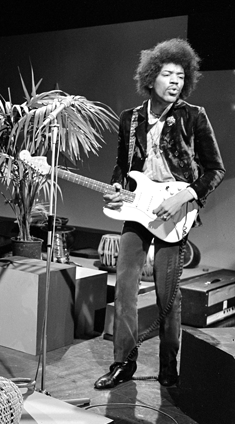
Born in Seattle, Washington, Hendrix began playing guitar at the age of 15. In 1961, he enlisted in the US Army, but was discharged the following year. Soon afterward, he moved to Clarksville then Nashville, Tennessee, and began playing gigs on the chitlin' circuit, earning a place in the Isley Brothers' backing band and later with Little Richard, with whom he continued to work through mid-1965. He then played with Curtis Knight and the Squires before moving to England in late 1966 after bassist Chas Chandler of the Animals became his manager. Within months, Hendrix had earned three UK top ten hits with the Jimi Hendrix Experience: "Hey Joe", "Purple Haze", and "The Wind Cries Mary". He achieved fame in the US after his performance at the Monterey Pop Festival in 1967, and in 1968 his third and final studio album, Electric Ladyland, reached number one in the US. The double LP was Hendrix's most commercially successful release and his first and only number one album. The world's highest-paid performer, he headlined the Woodstock Festival in 1969 and the Isle of Wight Festival in 1970 before his accidental death in London from barbiturate-related asphyxia on September 18, 1970.
Hendrix was inspired by American rock and roll and electric blues. He favored overdriven amplifiers with high volume and gain, and was instrumental in popularizing the previously undesirable sounds caused by guitar amplifier feedback. He was also one of the first guitarists to make extensive use of tone-altering effects units in mainstream rock, such as fuzz distortion, Octavia, wah-wah, and Uni-Vibe. He was the first musician to use stereophonic phasing effects in recordings. Holly George-Warren of Rolling Stone commented: "Hendrix pioneered the use of the instrument as an electronic sound source. Players before him had experimented with feedback and distortion, but Hendrix turned those effects and others into a controlled, fluid vocabulary every bit as personal as the blues with which he began."
Hendrix was the recipient of several music awards during his lifetime and posthumously. In 1967, readers of Melody Maker voted him the Pop Musician of the Year and in 1968, Billboard named him the Artist of the Year and Rolling Stone declared him the Performer of the Year. Disc and Music Echo honored him with the World Top Musician of 1969 and in 1970, Guitar Player named him the Rock Guitarist of the Year. The Jimi Hendrix Experience was inducted into the Rock and Roll Hall of Fame in 1992 and the UK Music Hall of Fame in 2005. Rolling Stone ranked the band's three studio albums, Are You Experienced, Axis: Bold as Love, and Electric Ladyland, among the 100 greatest albums of all time, and they ranked Hendrix as the greatest guitarist and the sixth greatest artist of all time.
Carlos Santana
Carlos Augusto Santana Alves (Spanish);
Born July 20, 1947) is an American guitarist who rose to fame in the late 1960s and early 1970s with his band Santana, which pioneered a fusion of Rock and roll and Latin American jazz. Its sound featured his melodic, blues-based lines set against Latin American and African rhythms played on percussion instruments not generally heard in rock, such as timbales and congas. He experienced a resurgence of popularity and critical acclaim in the late 1990s. In 2015, Rolling Stone magazine listed him at No. 20 on their list of the 100 greatest guitarists.[2] He has won 10 Grammy Awards and three Latin Grammy Awards,[3] and was inducted along with his namesake band into the Rock and Roll Hall of Fame in 1998.
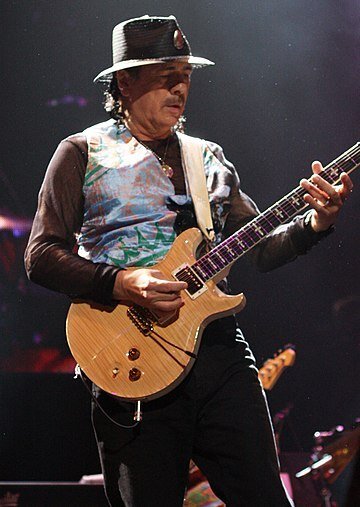
Record deal, Woodstock breakthrough, and height of success: 1969–1972
 Santana's band was signed by Columbia Records, which shortened its name to simply "Santana". It went into the studio to record its first album in January 1969, finally laying down tracks in May that became its first album.
Santana's band was signed by Columbia Records, which shortened its name to simply "Santana". It went into the studio to record its first album in January 1969, finally laying down tracks in May that became its first album.Members were not satisfied with the release, dismissed drummer Bob Livingston, and added Mike Shrieve, who had a strong background in both jazz and rock. The band then lost percussionist Marcus Malone, who was charged with involuntary manslaughter. Michael Carabello was re-enlisted in his place, bringing with him experienced Nicaraguan percussionist José Chepito Areas.
Major rock music promoter Bill Graham, a Latin Music aficionado who had been a fan of Santana from its inception, arranged for the band to appear at the Woodstock Music and Art Festival before its debut album was even released. Its set was one of the surprises of the festival, highlighted by an eleven-minute performance of a throbbing instrumental, "Soul Sacrifice".
Its inclusion in the Woodstock film and soundtrack album vastly increased the band's popularity. Graham also suggested Santana record the Willie Bobo song "Evil Ways", as he felt it would get radio airplay. The band's first album, Santana, was released in August 1969 and became a hit, reaching No. 4 on the U.S. Billboard 200.
Caravanserai

Santana performing in Hamburg, Germany in 1973
In early 1972, Santana and the remaining members of the band started working on their fourth album, Caravanserai. During the studio sessions, Santana and Michael Shrieve brought in other musicians: percussionists James Mingo Lewis and Latin-Jazz veteran, Armando Peraza replacing Michael Carabello, and bassists Tom Rutley and Doug Rauch replacing David Brown. Also assisting on keyboards were Wendy Haas and Tom Coster. With the unsettling influx of new players in the studio, Gregg Rolie and Neal Schon decided that it was time to leave after the completion of the album, even though both contributed to the session. Rolie returned home to Seattle; later, he and Schon became founding members of Journey.
When Caravanserai did emerge in 1972, it marked a strong change in musical direction towards jazz fusion. The album received critical praise, but CBS executive Clive Davis warned Santana and the band that it would sabotage the band's position as a "Top 40" act. Nevertheless, over the years, the album achieved platinum status. The difficulties Santana and the band went through during this period were chronicled in Ben Fong-Torres' Rolling Stone 1972 cover story "The Resurrection of Carlos Santana".
Shifting styles and spirituality: 1972–1979
 New Year's Eve 1976 at the Cow Palace in San Francisco.
New Year's Eve 1976 at the Cow Palace in San Francisco.In 1972, Santana became interested in the pioneering fusion band the Mahavishnu Orchestra and its guitarist, John McLaughlin. Aware of Santana's interest in meditation, McLaughlin introduced Santana and his wife Deborah to his guru Sri Chinmoy.
Chinmoy accepted them as disciples in 1973. Santana was given the name Devadip, meaning "The lamp, light and eye of God". Santana and McLaughlin recorded an album together, Love, Devotion, Surrender (1973) with members of Santana and the Mahavishnu Orchestra, along with percussionist Don Alias and organist Larry Young, both of whom had made appearances, along with McLaughlin, on Miles Davis' classic 1970 album Bitches Brew.
In 1973, Santana, having obtained legal rights to the band's name, Santana, formed a new version of the band with Armando Peraza and Chepito Areas on percussion, Doug Rauch on bass, Michael Shrieve on drums, and Tom Coster and Richard Kermode on keyboards. Santana later was able to recruit jazz vocalist Leon Thomas for the tour supporting Caravanserai in Japan on July 3 and 4, 1973, which was recorded for the 1974 live, sprawling, high-energy triple vinyl LP fusion album Lotus. CBS records would not allow its release unless the material was condensed. Santana did not agree to those terms, and Lotus was available in the U.S. only as an expensive, imported, three-record set. The group later went into the studio and recorded Welcome (1973), which further reflected Santana's interests in jazz fusion and his increasing commitment to the spiritual life of Sri Chinmoy.
A collaboration with John Coltrane's widow, Alice Coltrane, Illuminations (1974), followed. The album delved into avant-garde esoteric free jazz, Eastern Indian and classical influences with other ex-Miles Davis sidemen Jack DeJohnette and Dave Holland. Soon after, Santana replaced his band members again.
This time Kermode, Thomas and Rauch departed from the group and were replaced by vocalist Leon Patillo (later a successful Contemporary Christian artist) and returning bassist David Brown. He also recruited soprano saxophonist, Jules Broussard for the lineup. The band recorded one studio album Borboletta, which was released in 1974. Drummer Leon "Ndugu" Chancler later joined the band as a replacement for Michael Shrieve, who left to pursue a solo career.
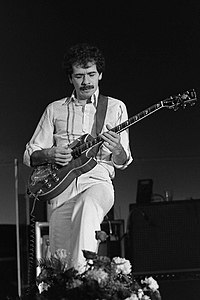 Santana during his European tour in the Netherlands in 1978
Santana during his European tour in the Netherlands in 1978By this time, Bill Graham's management company had assumed responsibility for the affairs of the group. Graham was critical of Santana's move into jazz and felt he needed to concentrate on getting Santana back into the charts with the edgy, streetwise ethnic sound that had made them famous. Santana himself was seeing that the group's direction was alienating many fans. Although the albums and performances were given good reviews by critics in jazz and jazz fusion circles, sales had plummeted.
Santana, along with Tom Coster, producer David Rubinson, and Chancler, formed yet another version of Santana, adding vocalist Greg Walker. The 1976 album Amigos, which featured the songs "Dance, Sister, Dance" and "Let It Shine", had a strong funk and Latin sound. The album received considerable airplay on FM album-oriented rock stations with the instrumental "Europa (Earth's Cry Heaven's Smile)" and re-introduced Santana to the charts. In 1976, Rolling Stone ran a second cover story on Santana entitled "Santana Comes Home". In February 1976, Santana was presented with fifteen gold disc in Australia, representing sales in excess of 244,000.
The albums conceived through the late 1970s followed the same formula, although with several lineup changes. Among the new personnel who joined was current percussionist Raul Rekow, who joined in early 1977. Most notable of the band's commercial efforts of this era was a version of the 1960s Zombies hit, "She's Not There", on the 1977 double album Moonflower.
Santana recorded two solo projects in this time: Oneness: Silver Dreams – Golden Reality, in 1979 and The Swing of Delight in 1980, which featured Herbie Hancock, Wayne Shorter, Ron Carter, and Tony Williams.
The pressures and temptations of being a high-profile rock musician and requirements of the spiritual lifestyle which guru Sri Chinmoy and his followers demanded were in conflict, and imposed considerable stress upon Santana's lifestyle and marriage. He was becoming increasingly disillusioned with what he thought were the unreasonable rules that Chinmoy imposed on his life, and in particular with his refusal to allow Santana and Deborah to start a family. He felt too that his fame was being used to increase the guru's visibility. Santana and Deborah eventually ended their relationship with Chinmoy in 1982.
1980s and early 1990s
 Santana in Barcelona, Spain, 1984
Santana in Barcelona, Spain, 1984 L to R: Bob Dylan, Joan Baez, and Santana in Hamburg, May 1984
L to R: Bob Dylan, Joan Baez, and Santana in Hamburg, May 1984More radio-friendly singles followed from Santana and the band. "Winning" in 1981 (from Zebop!) and "Hold On" (a remake of the Canadian artist Ian Thomas' song) in 1982 both reached the top twenty. After his break with Sri Chinmoy, Santana went into the studio to record another solo album with Keith Olson and legendary R&B producer Jerry Wexler.
The 1983 album Havana Moon revisited Santana's early musical experiences in Tijuana with Bo Diddley's "Who Do You Love" and the title cut, Chuck Berry's "Havana Moon". The album's guests included Booker T. Jones, the Fabulous Thunderbirds, Willie Nelson, and even Santana's father's mariachi orchestra. Santana again paid tribute to his early rock roots by doing the film score to La Bamba, which was based on the life of rock and roll legend Ritchie Valens and starred Lou Diamond Phillips.
The band Santana returned in 1985 with a new album, Beyond Appearances, and two years later with Freedom.
Growing weary of trying to appease record company executives with formulaic hit records, Santana took great pleasure in jamming and making guest appearances with notables such as the jazz fusion group Weather Report, jazz pianist McCoy Tyner, Blues legend John Lee Hooker, Frank Franklin, Living Colour guitarist Vernon Reid, and West African singer Salif Keita.
He and Mickey Hart of the Grateful Dead later recorded and performed with Nigerian drummer Babatunde Olatunji, who conceived one of Santana's famous 1960s drum jams, "Jingo". In 1988, Santana organized a reunion with past members from the Santana band for a series of concert dates. CBS records released a 20-year retrospective of the band's accomplishments with Viva Santana! double CD compilation.
That same year, Santana formed an all-instrumental group featuring jazz legend Wayne Shorter on tenor and soprano saxophone. The group also included Patrice Rushen on keyboards, Alphonso Johnson on bass, Armando Peraza and Chepito Areas on percussion, and Leon "Ndugu" Chancler on drums. They toured briefly and received much acclaim from the music press, who compared the effort with the era of Caravanserai (1972). Santana released another solo record, Blues for Salvador (1987), which won a Grammy Award for Best Rock Instrumental Performance.
In 1990, Santana left Columbia Records after twenty-two years and signed with Polygram. The following year he made a guest appearance on Ottmar Liebert's album, Solo Para Ti (1991), on the songs "Reaching out 2 U" and on a cover of his own song, "Samba Pa Ti". In 1992, Santana hired the jam band Phish as his opening act. On his 1992 tour, Santana regularly invited some or all of the members of Phish to jam with his band during his headlining performances. Phish also toured with Santana in Europe in 1996.
Eric Clapton
Eric Patrick Clapton CBE (born 30 March 1945) is an English rock and blues guitarist, singer, and songwriter. He is regarded as one of the most successful and influential guitarists in rock music.
Clapton ranked second in Rolling Stone's list of the "100 Greatest Guitarists of All Time"and fourth in Gibson's "Top 50 Guitarists of All Time". He was also named number five in Time magazine's list of "The 10 Best Electric Guitar Players" in 2009.
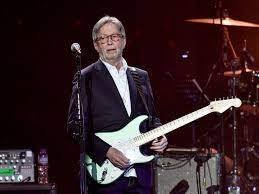 After playing in a number of different local bands, Clapton joined the Yardbirds in 1963, replacing founding guitarist Top Topham. Dissatisfied with the change of the Yardbirds sound from blues rock to a more radio-friendly pop rock sound, Clapton left in 1965 to play with John Mayall & the Bluesbreakers. On leaving Mayall in 1966, after one album, he formed the power trio Cream with drummer Ginger Baker and bassist Jack Bruce, in which Clapton played sustained blues improvisations and "arty, blues-based psychedelic pop". After Cream broke up in November 1968, he formed the blues rock band Blind Faith with Baker, Steve Winwood, and Ric Grech, recording one album and performing on one tour before they broke up. Clapton embarked on a solo career in 1970.
After playing in a number of different local bands, Clapton joined the Yardbirds in 1963, replacing founding guitarist Top Topham. Dissatisfied with the change of the Yardbirds sound from blues rock to a more radio-friendly pop rock sound, Clapton left in 1965 to play with John Mayall & the Bluesbreakers. On leaving Mayall in 1966, after one album, he formed the power trio Cream with drummer Ginger Baker and bassist Jack Bruce, in which Clapton played sustained blues improvisations and "arty, blues-based psychedelic pop". After Cream broke up in November 1968, he formed the blues rock band Blind Faith with Baker, Steve Winwood, and Ric Grech, recording one album and performing on one tour before they broke up. Clapton embarked on a solo career in 1970.Alongside his solo career, he also performed with Delaney & Bonnie and Derek and the Dominos, with whom he recorded "Layla", one of his signature songs. He continued to record a number of successful solo albums and songs over the next several decades, including a 1974 cover of Bob Marley's "I Shot the Sheriff" (which helped reggae reach a mass market), the country-infused Slowhand album (1977) and the pop rock of 1986's August.
Following the death of his son Conor in 1991, Clapton's grief was expressed in the song "Tears in Heaven", which appeared on his Unplugged album, and in 1996 he had another top-40 hit with the R&B crossover "Change the World". In 1998, he released the Grammy award-winning "My Father's Eyes". Since 1999, he has recorded a number of traditional blues and blues rock albums and hosted the periodic Crossroads Guitar Festival. His most recent studio album is Happy Xmas (2018).
Clapton has received 18 Grammy Awards as well as the Brit Award for Outstanding Contribution to Music. In 2004, he was awarded a CBE for services to music. He has received four Ivor Novello Awards from the British Academy of Songwriters, Composers and Authors, including the Lifetime Achievement Award.
He is the only three-time inductee to the Rock and Roll Hall of Fame: once as a solo artist and separately as a member of the Yardbirds and of Cream. In his solo career, Clapton has sold more than 280 million records worldwide, making him one of the best-selling musicians of all time.[11] In 1998, Clapton, a recovering alcoholic and drug addict, founded the Crossroads Centre on Antigua, a medical facility for recovering substance abusers.
About WORLD'S POPULAR musical FORMS
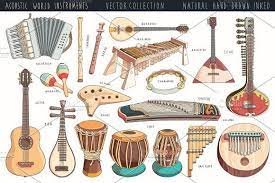
What is the origin of jazz?
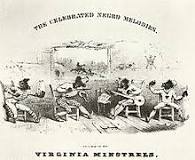
Where did jazz originate in Africa?
What is marabi in Mapeh?
What are the vocal form of African music?
- Maracatu. first surfaced in the African state of Pernambuco, combining the strong rhythms of African percussion instruments with Portuguese melodies.
- Blues. a musical form of the late 19th century that has had deep roots in African-American communities. ...
- Soul. ...
- Spiritual. ...
- Call and Response.
Where did kwaito music originated?
Blues
Blues is a music genre and musical form which originated in the Deep South of the United States around the 1860s by African-Americans from roots in African-American work songs and spirituals. Blues incorporated spirituals, work songs, field hollers, shouts, chants, and rhymed simple narrative ballads.
What does the term the blues mean?
Is blues happy or sad music?
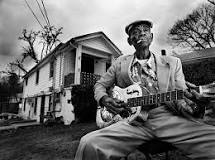
Why are the blues called blues?
Is blues a jazz or rock?
What does feeling the blues mean?
Who first started the blues?
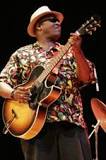
Is blues the mother of all modern music?
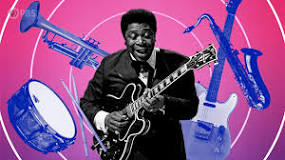
How do you identify blues music?
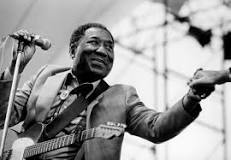
What's difference between jazz and blues?
- Muddy Waters. ...
- Ma Rainey (1886) ...
- Sister Rosetta Tharpe (1915) ...
- Mamie Smith (1891) ...
- Ray Charles. ...
- Eric Clapton (1945) ...
- B.B. King (1925) ...
- Bessie Smith (1894)
What is the meaning of Sunday blues?
What are Friday blues?
Reggae
Reggae (rɛɡeɪ) is a music genre that originated in Jamaica in the late 1960s. The term also denotes the modern popular music of Jamaica and its diaspora. A 1968 single by Toots and the Maytals, "Do the Reggay" was the first popular song to use the word "reggae", effectively naming the genre and introducing it to a global audience.
While sometimes used in a broad sense to refer to most types of popular Jamaican dance music, the term reggae more properly denotes a particular music style that was strongly influenced by traditional mento as well as American jazz and rhythm and blues, and evolved out of the earlier genres ska and rocksteady.Reggae usually relates news, social gossip, and political commentary. It is instantly recognizable from the counterpoint between the bass and drum downbeat and the offbeat rhythm section. The immediate origins of reggae were in ska and rocksteady; from the latter, reggae took over the use of the bass as a percussion instrument.
Reggae is deeply linked to Rastafari, an Afrocentric religion which developed in Jamaica in the 1930s, aiming at promoting pan-Africanism. Soon after the Rastafarian movement appeared, the international popularity of reggae music became associated with and increased the visibility of Rastafari and spread its gospel throughout the world. Reggae music is an important means of transporting vital messages of Rastafari. The musician becomes the messenger, and as Rastafari see it, "the soldier and the musician are tools for change."
Stylistically, reggae incorporates some of the musical elements of rhythm and blues, jazz, mento (a celebratory, rural folk form that served its largely rural audience as dance music and an alternative to the hymns and adapted chanteys of local church singing), calypso, and also draws influence from traditional African folk rhythms. One of the most easily recognizable elements is offbeat rhythms; staccato chords played by a guitar or piano (or both) on the offbeats of the measure. The tempo of reggae is usually slower paced than both ska and rock steady.
The concept of call and response can be found throughout reggae music. The genre of reggae music is led by the drum and bass. Some key players in this sound are Jackie Jackson from Toots and the Maytals, Carlton Barrett from Bob Marley and the Wailers, Lloyd Brevett from the Skatalites, Paul Douglas from Toots and the Maytals, Lloyd Knibb from the Skatalites,Winston Grennan, Sly Dunbar, and Anthony "Benbow" Creary from the Upsetters.
The bass guitar often plays the dominant role in reggae.
The bass sound in reggae is thick and heavy, and equalized so the upper frequencies are removed and the lower frequencies emphasized. The guitar in reggae usually plays on the offbeat of the rhythm. It is common for reggae to be sung in Jamaican Patois, Jamaican English, and Iyaric dialects. Reggae is noted for its tradition of social criticism and religion in its lyrics, although many reggae songs discuss lighter, more personal subjects, such as love and socializing.
Reggae has spread to many countries around the world, often incorporating local instruments and fusing with other genres. Reggae en Español spread from the Spanish-speaking Central American country of Panama to the mainland South American countries of Venezuela and Guyana then to the rest of South America. Caribbean music in the United Kingdom, including reggae, has been popular since the late 1960s, and has evolved into several subgenres and fusions.
Many reggae artists began their careers in the UK, and there have been a number of European artists and bands drawing their inspiration directly from Jamaica and the Caribbean community in Europe. Reggae in Africa was boosted by the visit of Bob Marley to Zimbabwe in 1980. In Jamaica, authentic reggae is one of the biggest sources of income.
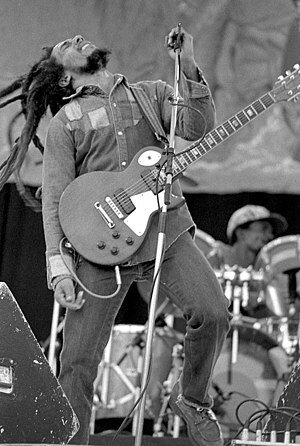 Reggae is a music genre that originated in Jamaica in the late 1960s. The term also denotes the modern popular music of Jamaica and its diaspora
Reggae is a music genre that originated in Jamaica in the late 1960s. The term also denotes the modern popular music of Jamaica and its diaspora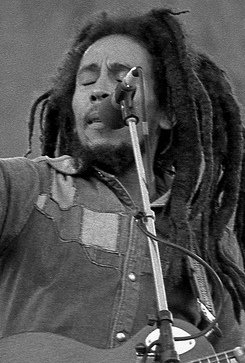
Robert Nesta Marley OM (6 February 1945 – 11 May 1981; baptised in 1980 as Berhane Selassie) was a Jamaican singer, musician, and songwriter. Considered one of the pioneers of reggae, his musical career was marked by fusing elements of reggae, ska, and rocksteady, as well as his distinctive vocal and songwriting style. Marley's contributions to music increased the visibility of Jamaican music worldwide, and made him a global figure in popular culture to this day. Over the course of his career, Marley became known as a Rastafari icon, and he infused his music with a sense of spirituality. He is also considered a global symbol of Jamaican music and culture and identity, and was controversial in his outspoken support for democratic social reforms.[citation needed] In 1976, Marley survived an assassination attempt in his home, which was thought to be politically motivated. He also supported legalization of marijuana, and advocated for Pan-Africanism.
Born in Nine Mile, Jamaica, Marley began his professional musical career in 1963, after forming the Teenagers with Peter Tosh and Bunny Wailer, which after several name changes would become the Wailers. The group released its debut studio album The Wailing Wailers in 1965, which contained the single "One Love", a reworking of "People Get Ready"; the song was popular worldwide, and established the group as a rising figure in reggae.
The Wailers released a further eleven studio albums, and after signing to Island Records the band's name became Bob Marley and the Wailers. While initially employing louder instrumentation and singing, the group began engaging in rhythmic-based song construction in the late 1960s and early 1970s, which coincided with Marley's conversion to Rastafari. Around this time, Marley relocated to London, and the group embodied their musical shift with the release of the album The Best of The Wailers (1971.
Rhythm and blues
Rhythm and blues, frequently abbreviated as R&B or R'n'B, is a genre of popular music that originated in African-American communities in the 1940s.
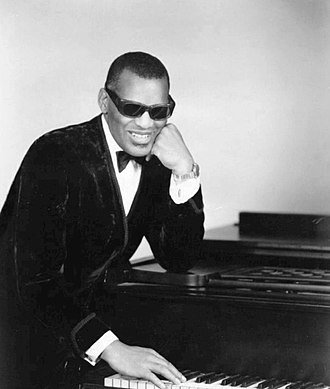
Rhythm and blues, frequently abbreviated as R&B or R'n'B, is a genre of popular music that originated in African-American communities in the 1940s. The term was originally used by record companies to describe recordings marketed predominantly to urban African Americans, at a time when "urbane, rocking, jazz based music ... [with a] heavy, insistent beat" was becoming more popular.
In the commercial rhythm and blues music typical of the 1950s through the 1970s, the bands usually consisted of piano, one or two guitars, bass, drums, one or more saxophones, and sometimes background vocalists. R&B lyrical themes often encapsulate the African-American experience of pain and the quest for freedom and joy, as well as triumphs and failures in terms of relationships, economics, and aspirations.
The term "rhythm and blues" has undergone a number of shifts in meaning. In the early 1950s, it was frequently applied to blues records. Starting in the mid-1950s, after this style of music contributed to the development of rock and roll, the term "R&B" became used to refer to music styles that developed from and incorporated electric blues, as well as gospel and soul music.
From 1960s to 1970s, several British bands such as the Rolling Stones, the Who and the Animals were referred to and promoted as being R&B bands. By the end of the 1970s, the term "rhythm and blues" had changed again and was used as a blanket term for soul and funk. In the late 1980s, a newer style of R&B developed, becoming known as "contemporary R&B". It combines rhythm and blues with elements of pop, soul, funk, disco, hip hop, and electronic music.
Rock and Roll
Rock and roll (often written as rock & roll, rock 'n' roll, or rock 'n roll) is a genre of popular music that evolved in the United States during the late 1940s and early 1950s. It originated from African-American music such as jazz, rhythm and blues, boogie woogie, gospel, as well as country music. While rock and roll's formative elements can be heard in blues records from the 1920s and in country records of the 1930s, the genre did not acquire its name until 1954.
According to journalist Greg Kot, "rock and roll" refers to a style of popular music originating in the United States in the 1950s. By the mid-1960s, rock and roll had developed into "the more encompassing international style known as rock music, though the latter also continued to be known in many circles as rock and roll." For the purpose of differentiation, this article deals with the first definition.
In the earliest rock and roll styles, either the piano or saxophone was typically the lead instrument. These instruments were generally replaced or supplemented by guitar in the middle to late 1950s. The beat is essentially a dance rhythm with an accentuated backbeat, almost always provided by a snare drum.[10] Classic rock and roll is usually played with one or two electric guitars (one lead, one rhythm) and a double bass (string bass). After the mid-1950s, electric bass guitars ("Fender bass") and drum kits became popular in classic rock.
Rock and roll had a polarizing influence on lifestyles, fashion, attitudes, and language. It is often portrayed in movies
What is considered rock and roll?
Why is it called rock n Roll?
What did rock and roll do?
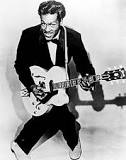
- 1) LED ZEPPELIN - STAIRWAY TO HEAVEN. ...
- 2) QUEEN - BOHEMIAN RHAPSODY. ...
- 3) LYNYRD SKYNYRD - FREE BIRD. ...
- 4) DEEP PURPLE - SMOKE ON THE WATER. ...
- 5) PINK FLOYD - COMFORTABLY NUMB. ...
- 6) LED ZEPPELIN - KASHMIR. ...
- 7) RAINBOW - STARGAZER. ...
- 8) FREE - ALL RIGHT NOW.
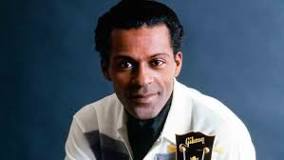
Who was the first rock artist?
How did rock and roll change American culture?
Why was rock n roll so popular in the 1950s?
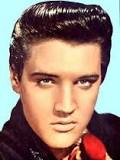
Who first used rock and roll?
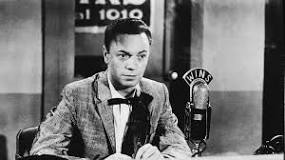
Who made rock and roll popular?
How did rock music start?
Why is rock music popular?
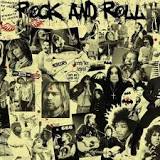
What defines the rock genre?
What defines a rock song?
What is the coolest rock song?
- Baba O' Riley – The Who. ...
- Smoke on the Water – Deep Purple. ...
- Comfortably Numb – Pink Floyd. ...
- Roadhouse Blues – The Doors. ...
- Purple Haze – Jimi Hendrix. ...
- Bohemian Rhapsody – Queen. ...
- Another Brick on the Wall Pt. ...
- Rock You Like a Hurricane – Scorpions.
What is considered the greatest song ever?
- 'Imagine' — John Lennon. Getty Images.
- 'Hey Jude' — The Beatles. ...
- '(I Can't Get No) Satisfaction' — The Rolling Stones. ...
- 'Yesterday' — The Beatles. ...
- 'Good Vibrations' — The Beach Boys. ...
- 'Smells Like Teen Spirit' — Nirvana. ...
- 'Johnny B. ...
- 'I Want To Hold Your Hand' — The Beatles.
When did rock become popular?
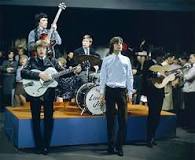
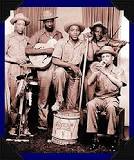
| Born | Charles Edward Anderson BerryOctober 18, 1926 St. Louis, Missouri, U.S. |
| Died | March 18, 2017 (aged 90) near Wentzville, Missouri, U.S. |
| Resting place | Bellerive Gardens Cemetery, St. Louis |
| Other names | Father of Rock N' Roll |
Who invented music?
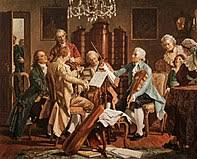
Bluegrass music is a genre of American roots music that developed in the 1940s in the Appalachian region of the United States. The genre derives its name from the band Bill Monroe and the Blue Grass Boys.
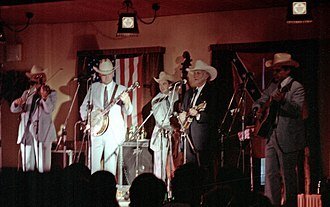
Bluegrass music is a genre of American roots music that developed in the 1940s in the Appalachian region of the United States. The genre derives its name from the band Bill Monroe and the Blue Grass Boys. Like mainstream country music, it largely developed out of old-time string music, though in contrast, bluegrass is traditionally played exclusively on acoustic instruments and also has roots in traditional English, Scottish, and Irish ballads and dance tunes as well as in blues and jazz. Bluegrass was further developed by musicians who played with Monroe, including 5-string banjo player Earl Scruggs and guitarist Lester Flatt. Monroe characterized the genre as: "Scottish bagpipes and ole-time fiddlin'. It's a part of Methodist, Holiness and Baptist traditions. It's blues and jazz, and it has a high lonesome sound."
Bluegrass features acoustic stringed instruments and emphasizes the off-beat. Notes are anticipated, in contrast to laid back blues where notes are behind the beat, which creates the higher energy characteristic of bluegrass. In bluegrass, as in some forms of jazz, one or more instruments each takes its turn playing the melody and improvising around it, while the others perform accompaniment; this is especially typified in tunes called breakdowns. This is in contrast to old-time music, in which all instruments play the melody together or one instrument carries the lead throughout while the others provide accompaniment. Breakdowns are often characterized by rapid tempos and unusual instrumental dexterity and sometimes by complex chord changes.
Country music
Country (also called country and western) is a genre of popular music that originated with blues, church music such as Southern gospel and spirituals, old-time, and American folk music forms including Appalachian, Cajun, Creole, and the cowboy Western music styles of New Mexico, Red Dirt, Tejano, and Texas country. Its popularized roots originate in the Southern and Southwestern United States of the early 1920s.
Country music often consists of ballads and dance tunes (most commonly known as "Honky Tonk music") with generally simple forms, folk lyrics, and harmonies often accompanied by string instruments such as electric and acoustic guitars, steel guitars (such as pedal steels and dobros), banjos, and fiddles as well as harmonicas. Blues modes have been used extensively throughout its recorded history.
The term country music gained popularity in the 1940s in preference to hillbilly music; it came to encompass Western music, which evolved parallel to hillbilly music from similar roots, in the mid-20th century. In 2009, in the United States, country music was the most listened to rush hour radio genre during the evening commute, and second most popular in the morning commute.
The term country music is used today to describe many styles and subgenres. The origins of country music are found in the folk music of working class Americans and blue-collar American life. It has historical roots in the indigenous music of North America, Celtic music, early music of the British Isles, jota, Irish traditional music, singing cowboys, corrido, ranchera, norteño, French folk music, African-American music, and other traditional folk music traditions.
About YIDDISH MUSIC
What Are The Main Musical Instruments Of Israel?
There are a whole host of musical instruments from Israel, however the 9 most popular include:
- Kinnor (Jewish Lyre)
- Shofar
- Oud
- Tabret (Timbrel)
- Goblet Drum
- Toph (Frame Drum)
- Qanun
- Sumponyah (Bagpipe)
- Sistrum (Rattles)
Although there are many sacred instruments in Israel, the kinnor is the main temple instrument of Israel and Jewish culture. Kinnor was mentioned 42 times in the Hebrew Bible, and historians say that kinnor was played even in temples in ancient Israel, B.C.
An Israeli drum is called a toph. It is mainly an Israeli frame drum form and probably the oldest version of a man-made drum.
What instruments are used in klezmer?
What are the 3 significant instrument of Israel?
What does klezmer mean in Yiddish?
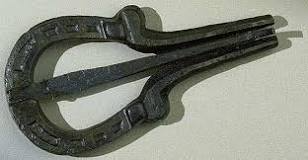
What is the traditional instrument of Israel?
What is the most popular instrument of Israel?
Does La Heim mean?
What is a Jews harp called now?
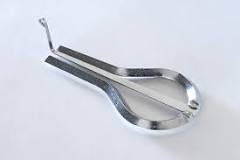
What instruments did the Israelites play?
- the Nevel, a 12-stringed harp;
- the Kinnor, a lyre with 10 strings;
- the Shofar, a hollowed-out ram's horn;
- the chatzutzera, or trumpet, made of silver;
- the tof or small drum;
- the metziltayim, or cymbal;
What is the traditional instrument of Israel?
What is a bulgar in klezmer music?
Klezmer (Yiddish: קלעזמער) is an instrumental musical tradition of the Ashkenazi Jews of Central and Eastern Europe.
The essential elements of the tradition include dance tunes, ritual melodies, and virtuosic improvisations played for listening; these would have been played at weddings and other social functions.
The musical genre incorporated elements of many other musical genres including Ottoman (especially Greek and Romanian) music, Baroque music, German and Slavic folk dances, and religious Jewish music.
As the music arrived in the United States, it lost some of its traditional ritual elements and adopted elements of American big band and popular music.Among the European-born klezmers who popularized the genre in the United States in the 1910s and 1920s were Dave Tarras and Naftule Brandwein; they were followed by American-born musicians such as Max Epstein, Sid Beckerman and Ray Musiker.
After the destruction of Jewish life in Eastern Europe during the Holocaust, and a general fall in the popularity of klezmer music in the United States, the music began to be popularized again in the late 1970s in the so-called Klezmer Revival.
During the 1980s and onwards, musicians experimented with traditional and experimental forms of the genre, releasing fusion albums combining the genre with jazz, punk, and other styles.
What kind of instrument is a Kinnor in Israeli music?

How do you pronounce klezmer music?
Can you play a Jews harp without teeth?
What was David's harp called?
What is a yutz?
What does kerfuffle mean in Yiddish?
What does Plotz mean in Yiddish?
What instrument did God use for the Ten Commandments?
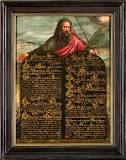
Who was the first person to play an instrument in the Bible?
Known for: Forefather of all musicians
Parents: Lamech and Adah
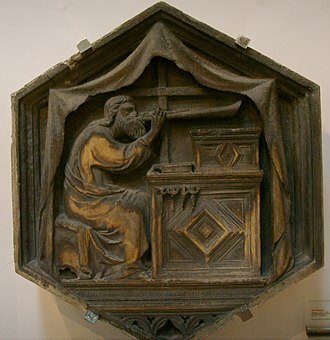
Panel of Jubal playing the flute by Nino Pisano, 1334–1336
Biblical narrative
Jubal is only know from his appearance in Genesis 4:21 of the Hebrew Bible and Old Testament. The account describes him as a descendant of Cain and the son of Lamech and Adah. He is also a brother of Jabal, and half-brother of Tubal-cain and Naamah.
Genesis credits him as the forefather of certain instruments: the cinnor (Hebrew: כנור) and uggab (עוגב). The translations of these vary depending on the edition:
"he was the ancestor of all those who play the lyre and pipe"
"he was the father of all such as handle the harp and organ"
"he was the father of all who play stringed instruments and pipes"
About MODERN JEWISH MUSIC
While some elements of Jewish music may originate in biblical times, differences of rhythm and sound can be found among later Jewish communities that have been musically influenced by location. In the nineteenth century, religious reform led to composition of ecclesiastic music in the styles of classical music.
At the same period, academics began to treat the topic in the light of ethnomusicology. Edward Seroussi has written, "What is known as 'Jewish music' today is thus the result of complex historical processes".A number of modern Jewish composers have been aware of and influenced by the different traditions of Jewish music.
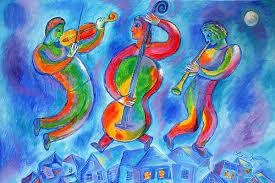 Religious Jewish music
Religious Jewish musicReligious Jewish music in the biblical period
Further information: History of music in the biblical period
The history of religious Jewish music spans the evolution of cantorial, synagogal, and Temple melodies since Biblical times.
The earliest synagogal music of which we have any account was based on the system used in the Temple in Jerusalem.
The Mishnah gives several accounts of Temple music. According to the Mishnah, the regular Temple orchestra consisted of twelve instruments, and a choir of twelve male singers.
The instruments included the kinnor (lyre), nevel (harp), tof (tambourine), shofar (ram's horn), ḥatzotzᵊrot (trumpet) and three varieties of pipe, the chalil, alamoth and the uggav.
The Temple orchestra also included a cymbal (tziltzal) made of copper.[5] The Talmud also mentions use in the Temple of a pipe organ (magrepha), and states that the water organ was not used in the Temple as its sounds were too distracting.
No provable examples of the music played at the Temple have survived. However, there is an oral tradition that the tune used for Kol Nidrei was sung in the temple.
After the destruction of the Temple in 70 AD and the subsequent dispersion of the Jews to Babylon and Persia, versions of the public singing of the Temple were continued in the new institution of the synagogue.
Three musical forms were identified by scholars of the period, involving different modes of antiphonal response between cantor congregation: the cantor singing a half-verse at a time, with the congregation making a constant refrain; the cantor singing a half-verse, with the congregation repeating exactly what he had sung; and the cantor and congregation singing alternate verses.
All of these forms can be discerned in parts of the modern synagogue service.
Jewish prayer modes
Jewish liturgical music is characterized by a set of musical modes. These modes make up musical nusach, which serves to both identify different types of prayer, as well as to link those prayers to the time of year, or even time of day in which they are set.
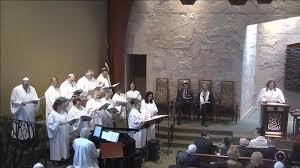
There are three main modes, as well as a number of combined or compound modes. The three main modes are called Ahavah Rabbah, Magein Avot and Adonai Malach. Traditionally, the cantor (chazzan) improvised sung prayers within the designated mode, while following a general structure of how each prayer should sound.
There was no standard form of musical notation utilised by the Jews and these modes and synagogue melodies derived from them were therefore handed down directly, typically from a chazzan to his apprentice meshorrer (descant).
Since the late eighteenth century, many of these chants have been written down and standardized, yet the practice of improvisation still exists to this day.
The synagogal reading of the parashah (the weekly extract from the Torah) and the haftarah (section from the Prophets), may recall the melodic tropes of the actual Temple service.
Ashkenazic Jews named this official cantillation 'neginot' and it is represented in printed Hebrew versions of the Bible by a system of cantillation marks (sometimes referred to as neumes).
In practice the cantillation often echoes the tones and rhythms of the countries and ages in which Jews lived, notably as regards the modality in which the local music was based.
Traditional religious music.
Synagogues following traditional Jewish rites do not employ musical instruments as part of the synagogue service. Traditional synagogal music is therefore purely vocal. The principal melodic role in the service is that of the hazzan (cantor).
Responses of the congregation are typically monophonic—the introduction of a choir singing in harmony was largely a nineteenth-century innovation. However, during the mediaeval period among Ashkenazi Jews there developed the tradition of the hazzan being accompanied for certain prayers by a bass voice (known in Yiddish as singer) and a descant (in Yiddish, meshorrer).
This combination was known in Yiddish as keleichomos.
"Emet El Shmeha", traditional Jewish 17th century song.
There are many forms of song which are used in Jewish religious services and ceremonies. The following are notable examples.
With the piyyutim (liturgical poems—singular: piyut), dating from the first millennium after the destruction of the Temple, one stream of Jewish synagogal music began to crystallize into definite form. The hazzan sang the piyyutim to melodies either selected by themselves or drawn from tradition. Piyyutim have been written since Mishnaic times.
Most piyyutim are in Hebrew or Aramaic, and most follow some poetic scheme, such as an acrostic following the order of the Hebrew alphabet or spelling out the name of the author. A well-known piyyut is Adon Olam ("Master of the World"), sometimes attributed to Solomon ibn Gabirol in 11th century Spain.
Pizmonim are traditional Jewish songs and melodies praising God and describing certain aspects of traditional religious teachings. Pizmonim are traditionally associated with Middle Eastern Sephardic Jews, although they are related to Ashkenazi Jews' zemirot (see below).
One tradition is associated with Jews descended from Aleppo, though similar traditions exist among Iraqi Jews (where the songs are known as shbaִhoth, praises) and in North African countries. Jews of Greek, Turkish and Balkan origin have songs of the same kind in Ladino, associated with the festivals: these are known as coplas.
Some melodies are quite old, while others may be based on popular Middle Eastern music, with the words composed specially to fit the tune.
Zemirot are hymns, usually sung in the Hebrew or Aramaic languages, but sometimes also in Yiddish or Ladino. The words to many zemirot are taken from poems written by various rabbis and sages during the Middle Ages. Others are anonymous folk songs.
The baqashot are a collection of supplications, songs, and prayers that have been sung for centuries by the Sephardic Aleppian Jewish community and other congregations every Sabbath eve from midnight until dawn.
The custom of singing baqashot originated in Spain towards the time of the expulsion, but took on increased momentum in the Kabbalistic circle in Safed in the 16th century, and were spread from Safed by the followers of Isaac Luria (16th century).
Baqashot reached countries all round the Mediterranean and even became customary for a time in Sephardic communities in western Europe, such as Amsterdam and London.
Nigun (pl. nigunim) refers to religious songs and tunes that are sung either by individuals or groups; they are associated with the Hassidic movement. Nigunim are generally wordless.
Eighteenth- and nineteenth-century synagogue music
Changes in European Jewish communities, including increasing political emancipation and some elements of religious reform, had their effects on music of the synagogue.
By the late eighteenth century, music in European synagogues had sunk to a low standard. The Jewish scholar Eric Werner notes that among the European Ashkenazi communities of Europe "between 1660 and 1720 the musical tradition was waning, and the second half of the eighteenth century witnessed its worst decay".
The historian of Jewish music Abraham Zevi Idelsohn considers that "Eighteenth century manuscripts of Synagogue song display a striking monotony of style and texts".
In this context the English music historian Charles Burney visiting the Ashkenazi synagogue of Amsterdam in 1772, gave the opinion of one who was clearly ignorant of synagogue music (but did not regard that as a disqualification for comment) that the service resembled "a kind of tol- de rol, instead of words, which to me, seemed very farcical".
Others in England were more sympathetic to the synagogue service. The singing of the chazan Myer Lyon inspired the Methodist minister Thomas Olivers in 1770 to adapt the melody of the hymn Yigdal for a Christian hymn, The God of Abraham Praise.
Many synagogue melodies were used by Isaac Nathan in his 1815 settings of Lord Byron's Hebrew Melodies, and the popularity of this work drew the attention of Gentiles for the first time to this music (although in fact many of Nathan's melodies were not Jewish in origin, but contrafacta adapted from European folk melodies).
Franz Schubert around 1828 made a choral setting of Psalm 92 in Hebrew for the Vienna chazan Salomon Sulzer.[18] German congregations commissioned works from other Gentile composers, including Albert Methfessel (1785–1869).
Later in the century, as synagogues began to utilize choirs singing in Western harmony, a number of hazzanim, who had received formal training in Western music, began to compose works for the synagogue, many of which are still in use today in the congregations of their countries.
These included Sulzer in Vienna, Samuel Naumbourg in Paris, Louis Lewandowski in Berlin, and Julius Mombach in London.
Contemporary Jewish religious music
Secular Jewish music
Secular Jewish music (and dances) have been influenced both by surrounding Gentile traditions and Jewish sources preserved over time.
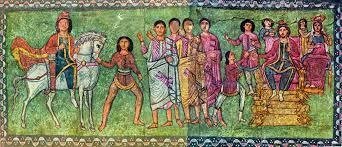
Klezmer
Around the 15th century, a tradition of secular (non-liturgical) Jewish music was developed by musicians called kleyzmorim or kleyzmerim by Ashkenazi Jews in Eastern Europe.
The repertoire is largely dance songs for weddings and other celebrations. They are typically in Yiddish.
Sephardic/Ladino
Sephardic music was born in medieval Spain, with canciones being performed at the royal courts. Since then, it has picked up influences from across Spain, Morocco, Argentina, Turkey, Greece and various popular tunes from Spain and further abroad.
There are three types of Sephardic songs—topical and entertainment songs, romance songs and spiritual or ceremonial songs. Lyrics can be in several languages, including Hebrew for religious songs, and Ladino.
These song traditions spread from Spain to Morocco (the Western Tradition) and several parts of the Ottoman Empire (the Eastern Tradition) including Greece, Jerusalem, the Balkans and Egypt. Sephardic music adapted to each of these locals, assimilating North African high-pitched, extended ululations; Balkan rhythms, for instance in 9/8 time; and the Turkish maqam mode.
Jewish art music.
Preclassical, classical, romantic and 20th-century composers
Salamone Rossi (1570 – c. 1630) of Mantua composed a series of choral settings called "The Songs of Solomon", based on Jewish liturgical and biblical texts.
Most art musicians of Jewish origin in the 19th century composed music that cannot be considered Jewish in any sense.
In the words of Peter Gradenwitz, from this period onwards, the issue is "no longer the story of Jewish music, but the story of music by Jewish masters." Jacques Offenbach (1819–1880), a leading composer of operetta in the 19th century, was the son of a cantor, and grew up steeped in traditional Jewish music.
Yet there is nothing about his music which could be characterized as Jewish in terms of style, and he himself did not consider his work to be Jewish.
Felix Mendelssohn, the grandson of the Jewish philosopher Moses Mendelssohn, continued to acknowledge his Jewish origins, even though he was baptized as a Reformed Christian at the age of seven. He occasionally drew inspiration from Christian sources, but there is nothing characteristically Jewish about any of his music.
The Jewish national revival in art music
Main article: Jewish art music
At the end of the 19th and beginning of the 20th centuries many Jewish composers sought to create a distinctly Jewish national sound in their music. Notable among these were the composers of the St. Petersburg Society for Jewish Folkmusic.
Led by composer-critic Joel Engel, these graduates of the St. Petersburg and Moscow Conservatories rediscovered their Jewish national roots, and created a new genre of Jewish art music. Inspired by the nationalist movement in Russian music, exemplified by Rimsky-Korsakov, Cui and others, these Jewish composers set out to the "shtetls"—the Jewish villages of Russia—and meticulously recorded and transcribed thousands of Yiddish folksongs.
They then set these songs to both vocal and instrumental ensembles.
The resulting music is a marriage between often melancholy and "krekhtsen" (moaning) melodies of the shtetl with late Russian romantic harmonies of Scriabin and Rachmaninoff.
The Jewish national revival in music was not only in Russia.
A number of Western European composers took an interest in their Jewish musical roots, and tried to create a unique Jewish art style. Ernest Bloch (1880–1959), a Swiss composer who emigrated to the United States, composed Schelomo for cello and orchestra, Suite Hebraique for viola and piano, and Sacred Service, which is the first attempt to set the Jewish service in a form similar to the Requiem, for full orchestra, choir and soloists.
Bloch described his connection to Jewish music as intensely personal:
It is not my purpose, nor my desire, to attempt a 'reconstitution' of Jewish music, or to base my work on melodies more or less authentic. I am not an archeologist.... It is the Jewish soul that interests me ... the freshness and naiveté of the Patriarchs; the violence of the Prophetic books; the Jewish savage love of justice...
As a child in Aix-en-Provence, Darius Milhaud (1892–1974) was exposed to the music of the Provençal Jewish community. "I have been greatly influenced by the character" of this music, he wrote.[26] His opera Esther de Carpentras draws on this rich musical heritage.
Mario Castelnuovo-Tedesco (1895–1968), an Italian composer who immigrated to America on the eve of World War II, was strongly influenced by his Sephardic Jewish upbringing. His second violin concerto draws on Jewish themes, as do many of his songs and choral works: these include a number of songs in Ladino, the language of Sephardic Jews.
Israeli music
Music of Israel
Art music in Mandatory Palestine and Israel
The 1930s saw an influx of Jewish composers to British Mandatory Palestine, later Israel, among them musicians of stature in Europe.
These composers included Paul Ben-Haim, Erich Walter Sternberg, Marc Lavry, Ödön Pártos, and Alexander Uriah Boskovich.
These composers were all concerned with forging a new Jewish identity in music, an identity which would suit the new, emerging identity of Israel. While the response of each of these composers to this challenge was intensely personal, there was one distinct trend to which many of them adhered: many of these and other composers sought to distance themselves from the musical style of the Klezmer, which they viewed as weak and unsuitable for the new national ethos. Many of the stylistic features of Klezmer were abhorrent to them.
"Its character is depressing and sentimental", wrote music critic and composer Menashe Ravina in 1943. "The healthy desire to free ourselves of this sentimentalism causes many to avoid this...".
From these early experiments a large corpus of original Israeli art music has been developed. Modern Israeli composers include Betty Olivero, Tsippi Fleischer, Mark Kopytman and Yitzhak Yedid.
Israeli folk
From the earliest days of Zionist settlement, Jewish immigrants wrote popular folk music. At first, songs were based on borrowed melodies from German, Russian, or traditional Jewish folk music with new lyrics written in Hebrew. Starting in the early 1920s, however, Jewish immigrants made a conscious effort to create a new Hebrew style of music, a style that would tie them to their earliest Hebrew origins and that would differentiate them from the style of the Jewish diaspora of Eastern Europe, which they viewed as weak.
This new style borrowed elements from Arabic and, to a lesser extent, traditional Yemenite and eastern Jewish styles: the songs were often homophonic (that is, without clear harmonic character), modal, and limited in range.
"The huge change in our lives demands new modes of expression", wrote composer and music critic Menashe Ravina in 1943. "... and, just as in our language we returned to our historical past, so has our ear turned to the music of the east ... as an expression of our innermost feelings."
1:39
Your Land, a Hebrew song adapted to a traditional Bedouin Melody.
The youth, labor and kibbutz movements played a major role in musical development before and after the establishment of Israeli statehood in 1948, and in the popularization of these songs. The Zionist establishment saw music as a way of establishing a new national identity, and, on a purely pragmatic level, of teaching Hebrew to new immigrants.
The national labor organization, the Histadrut, set up a music publishing house that disseminated songbooks and encouraged public sing-alongs (שירה בציבור). This tradition of public sing-alongs continues to the present day, and is a characteristic of modern Israeli culture.
Mizrahi
Mizrahi music
Mizrahi music usually refers to the new wave of music in Israel which combines Israeli music with the flavor of Arabic and Mediterranean (especially Greek) music.
Typical Mizrahi songs will have a dominant violin or string sound as well as Middle Eastern percussion elements. Mizrahi music is usually high pitched. Zohar Argov is a popular singer whose music typifies the Mizrahi music style.
Non-Jewish composers using Jewish music
Sergei Prokofiev: Overture on Hebrew Themes 11:01
Performed by members of the Advent Chamber Orchestra
A number of non-Jewish composers have adapted Jewish music to their compositions. They include:
- Maurice Ravel wrote Mélodies hébraïques for violin and piano.
- Max Bruch, a German Protestant, (but a student of the German Jewish composer Ferdinand Hiller) made an arrangement, Kol Nidrei, of the Jewish Yom Kippur prayer Kol Nidre for cello and orchestra.
- Sergei Prokofiev wrote Overture on Hebrew Themes, an arrangement of traditional Jewish folksongs for clarinet, string quartet, and piano.
- Dmitri Shostakovich incorporated elements of Jewish music in some of his compositions. Most notable are the song cycle From Jewish Folk Poetry, and the 13th symphony, titled Babi Yar
Lots of instruments we know today are rooted in the history of Israel and its neighboring lands.
Israel has a unique musical culture, and musicians have been looking for distinctive stylistic components to characterize the burgeoning national spirit for about 150 years in regard to coexisting Jewish and non-Jewish traditions.
kinnor (lyre),
nevel (harp),
tof (tambourine),
shofar (ram's horn),
ḥatzotzᵊrot (trumpet) and
Three varieties of pipe,
-the chalil,
-alamoth and
-the uggav.
The Temple orchestra also included a cymbal (tziltzal) made of copper.
What are the 3 significant instrument in Israel?
1. Qanun,
2.Oud, and
3. The Goblet Drum
What are the famous musical instrument of Israel?
What is the name of the Jewish musical?
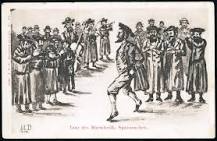
Cultural origins: Ashkenazic Jewish ceremonies, especially weddings, in Eastern Europe
Other names: Jewish instrumental folk music, Freylekh music
Parent genres: Romani music, Turkish music
Jewish music style
Jewish music is the music and melodies of the Jewish people. There exist both traditions of religious music, as sung at the synagogue and domestic prayers, and of secular music, such as klezmer
Do synagogues have musical instruments?
Do Jews worship with music?
Why do Orthodox not use instruments?
Why is it called a jews harp?
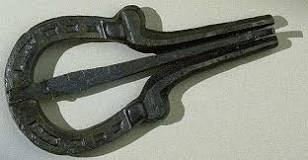
What is God's favorite instrument?
God is attracted to the sound of a harp worshipping Him. In 2 Kings 3:15, it says that the playing of a harp brought God's Presence and that His hand came upon Elisha. An interesting study may be made in the Bible about God's Presence.
Regarding Israel’s geographical position, their music highly interacted with Arabic, Persian, Palestinian, Spanish, and Egyptian folk music and cultures.
Israel has a wide range of musical instruments that are commonly used in Middle Eastern traditions and cultures.
In Israeli music, there are many different instrument types with the main focus on stringed instruments and percussion instruments.
What Are The Main Musical Instruments Of Israel?
There are a whole host of musical instruments from Israel, however the 9 most popular include:
- Kinnor (Jewish Lyre
- Shofar
- Oud
- Tabret (Timbrel)
- Goblet Drum
- Toph (Frame Drum)
- Qanun
- Sumponyah (Bagpipe)
- Sistrum (Rattles)
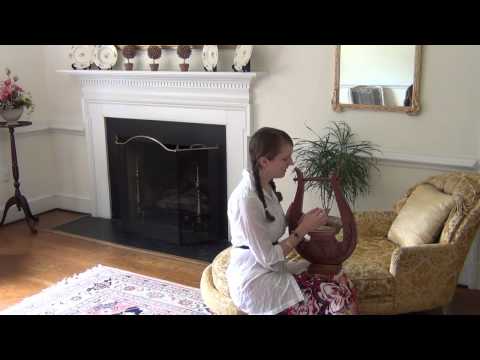
Kinnor is one of the ancient musical instruments of Israeli music that is holy for the Jewish culture and used in sacred music.
Also known as the Jewish Lyre, Kinnor is commonly mistranslated as a harp. Although they have similarities, lyres and harps differ in shape, size, sound, and playability.
The Jewish Lyre traditionally has 10 strings, but you can still find a variety of Kinnors with 3 to 12 strings depending on its size and design.
Kinnors are mostly small, and musicians use one of their hands to hold it on their lap and the other to play it, which is different than a harp. A harp can be played with two hands.
Historically, Kinnor’s are known as the origins of the lyres that we see different versions of it in almost every culture today.
2. Shofar
The Shofar is made of mostly male sheep horns and used for religious purposes in Jewish tradition.
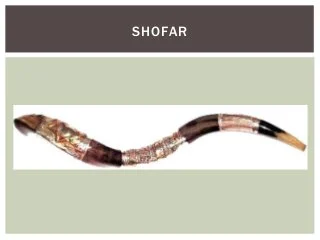 One of the earliest uses of the Shofar is to announce the Jubilee year and the new moon. There are certain experts who are only to blow the holy shofar in Jewish culture. They are known as ba’al tokeah -“the master of the blast.”
One of the earliest uses of the Shofar is to announce the Jubilee year and the new moon. There are certain experts who are only to blow the holy shofar in Jewish culture. They are known as ba’al tokeah -“the master of the blast.”The harmonics of the shofar vary from one to another. There are diverse shapes of shofars made from horns of different sheep species, and their finishes may have been differently made. Therefore they may produce different intervals and resonances.
3. Oud
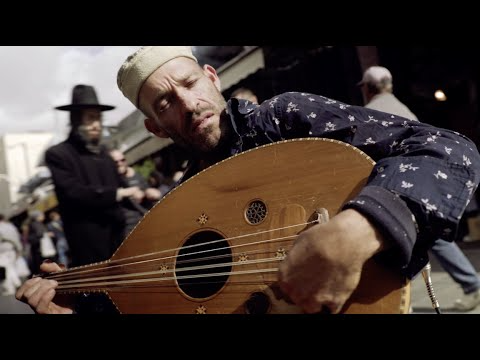
The Oud is the ancient form of the lute and the guitar. It belongs to the stringed instrument family and has a pear-shaped body, along with a deeply vibrant tone.
It commonly has 3 holes in the body. The Oud has a very small neck and has no frets, which is the main difference from the lute.
Also, by having no frets, the Oud allows sliding between pitches, which is very characteristic of this instrument and its sound.
The Oud is played with maqams, which are similar to various scales in western music. Oud is interbedded with Arabic music and continues to have a big influence on Jewish culture.
They are commonly tuned on single string courses like this: D2-G2-A2-D3-G3-C4 (low to high). However, there are various tuning traditions in different cultures.
The Turkish Oud, for example, tuned one whole step higher than the Arabian, therefore sounding more tight and harsh.
Arabian ouds are typically larger than their Turkish and Persian counterparts, providing a richer, deeper sound.
The Oud is played with a Risha, which is the oldest form of a guitar pick or plectrum, made from an eagles quill.
Today, the players commonly use a plastic or a bamboo plectrum to play the Oud.
4. Tabret (Timbrel)
The main percussion instrument of the Israel music instruments range is the Tabret, also known as the Timbrel in Hebrew, the Deff in Islam, and the Module in the Spanish culture. It resembles either a contemporary tambourine or a frame drum.
The Hebrew Bible uses the term “timbrel,” suggesting that the former refers to a wooden or metal hoop over which a parchment head is stretched. In contrast, the latter may refer to a tambourine with bells or jangles fastened at regular intervals in hoops.
5. Goblet Drum
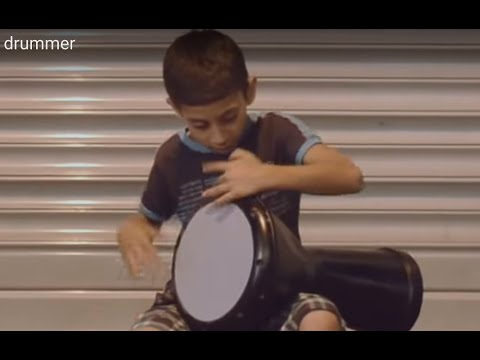
The Goblet drum is a great heritage instrument from Mesopotamian and Ancient Egyptian history and is also an inevitable part of Israeli musical instruments and culture.
The Goblet drum generates two distinct tones.
A “doom”, when the length of the fingers and palm are used to strike the center of the head it produces a deeper bass sound than when the hand is removed for an open sound. The second sound is referred to as the “tak”, which is a higher-pitched noise made by tapping the head’s edge with the fingertips.
6. Toph (Frame Drum)
Toph is the Hebrew version of the frame drum, which we can see almost in every culture. It is amongst the oldest instruments in recorded history and has been cited as the first drum ever created.
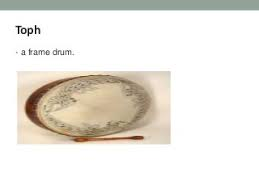 It has a single drumhead, which is often made of rawhide but can alternatively be synthetic, and while the drumhead is tacked into many frame drums, some have mechanical tuning.
It has a single drumhead, which is often made of rawhide but can alternatively be synthetic, and while the drumhead is tacked into many frame drums, some have mechanical tuning.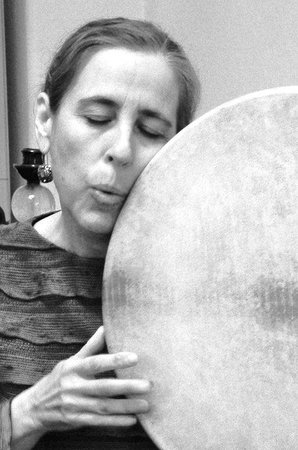
A shell is a circular wooden frame over which the drumhead is stretched. Rosewood, oak, ash, and other woods that have been bent and scarf joined together usually form the shell; however, some are also made of plywood or other man-made materials today.
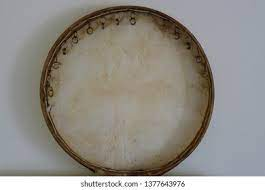
The frame may also be adorned with metal rings or jingles. In spiritual ceremonies, larger frame drums are typically played by men in various cultures, whereas medium-sized drums are typically played by women.
7. Qanun
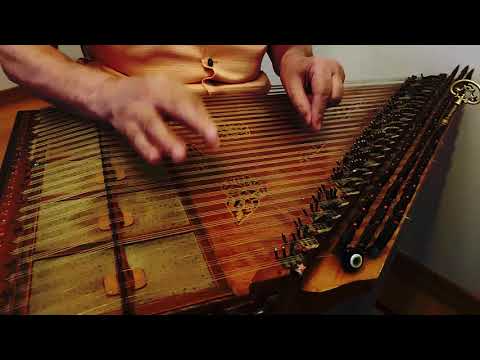
Arabic music has utilized the Qanun, a descendant of the ancient Egyptian harp since the ninth century.
See Also Dynamic vs Condenser Mics (Breaking Down The Tech)
It was first brought to Europe in the 12th century, and from the 14th through the 16th, it was known as a Psaltery or Zither in its European form. With Arabic music influences,
Qanun is widely used in Israeli music.
A flat board in the shape of a trapezoid serves as the foundation of the Qanun, where 81 strings are stretched in groups of three to create 24 treble chords with three chords per note.
The musician places the instrument flat on their knees or a table and uses their fingers or two plectra, one on each hand’s forefinger, to pluck the strings.
8. Sumponyah (Bagpipe)
The Sumponyah, which later became the Calabrian Zampogna, is one of the oldest instruments in the world. Its history goes back to the period of Babylon (500 BCE).
Although bagpipes can be found in many cultures, the Sumponyah is an essential instrument in Israeli culture. It is mainly a combination of a bag and chanters.
The bag is made from goat skin, traditionally with the hair on. Then shepherd pipes or chanters are attached to it to be able to blow in the bag and produce the holy sound.
9. Sistrum (Rattles)
The Sistrum comprises a handle and a U-shaped metal frame between 30 and 76 cm wide and is made of brass or bronze. Its movable crossbars’ tiny rings or loops of thin metal make a sound when shaken that ranges from a faint clank to a loud jangling.
Today, similar to how the tambourine is played in modern Evangelicalism, Romani song and dance, either on stage at a rock concert, the rhythmic shaking of the sistrum is connected to religious or ecstatic events. It was shaken as a sacred rattle in the worship of Hathor in ancient Egypt and used in rituals in Israel.
Jewish music styleJewish music is the music and melodies of the Jewish people. There exist both traditions of religious music, as sung at the synagogue and domestic prayers, and of secular music, such as klezmer
About Musical instruments of the Mountain Jews
1.Aziatskay garmoshka (lit. "Asian accordion"; also called "gar-mon" or "ghumuz" in Juhuri and Qumiq), adopted by musicians from eastern Caucasus (also Azerbaijan and western Caucasus) in the late nineteenth century, is a small portable instrument tuned in the key of B, shaped like a box with metal reeds which are vibrated by air from below.
The right-hand keyboard (two and a half octaves) is similar to the accordion, although substantially smaller.
The role of the left hand is to play bourdons (drone tones) while the right hand plays the melody. The northern garmoshka has left-hand keys for playing chords and bass notes like the accordion.

2.Balaban ("damkash" in Juhuri from "dam" = pitch , "kash" = to pull or draw, a word that also refers to the player of this instrument, whose role is to play the bourdon; this instrument is called "duduk" in Armenian) is a diatonic double-reed oboe. It produces a continuous drone (through circular breathing) throughout the entire piece. In ensembles having more than one damkash, only one of the players plays the bourdon, the rest play the melody.
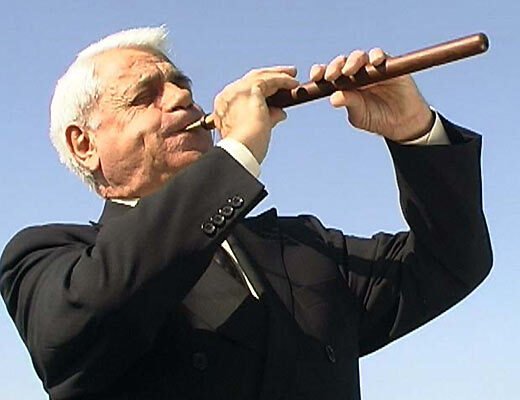
3. Zournas is a double-reed oboe very similar to the instrument of the same name which is found throughout the Near East.
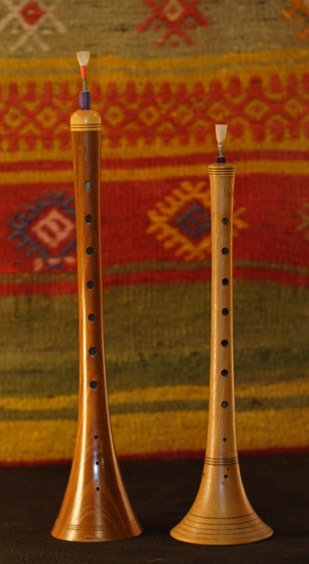
4. Komoncha is a spike fiddle of four strings. Widespread in Turkey, Armenia, Azerbaijan, eastern Caucasus and Persia, the instrument is decorated with pieces of bone and oysters. The player holds the instrument on his knees, perpendicular to his body, moving the instrument sideways in order to create special effects such as glissando and microtones.
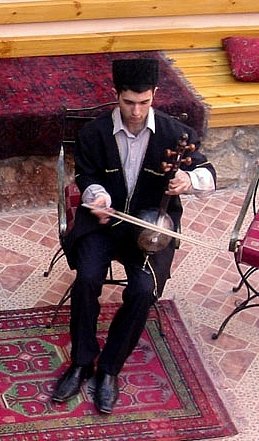
5.Tar, the Caucasian version of the plucked longneck lute of ancient Persian origin, is made of chestnut and wild berry wood. The Caucasian tar has eleven strings arranged in a unique manner, invented by Mirza Sadig Asad from Azerbaijan in the nineteenth century. The use of both double and sympathetic strings set the Caucasian tar apart from its Persian/Turkish counterpart. The Caucasian tar is held, as in Turkey, against the chest.
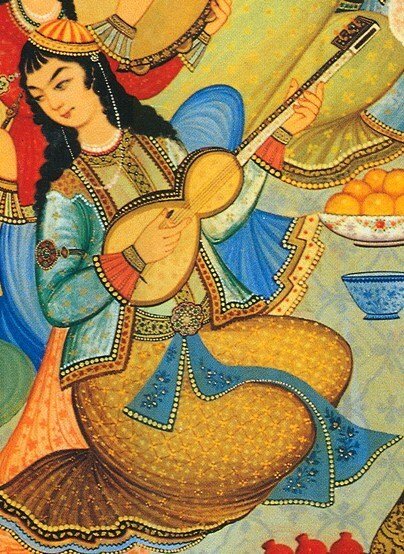

6. Ghovol (called "nagara" in Azeri) is a cylindrical drum consisting of a wooden frame and two membranes (today made of plastic). It is held under the right arm and played with both hands. This instrument is sometimes called "tap" in northern Caucasus
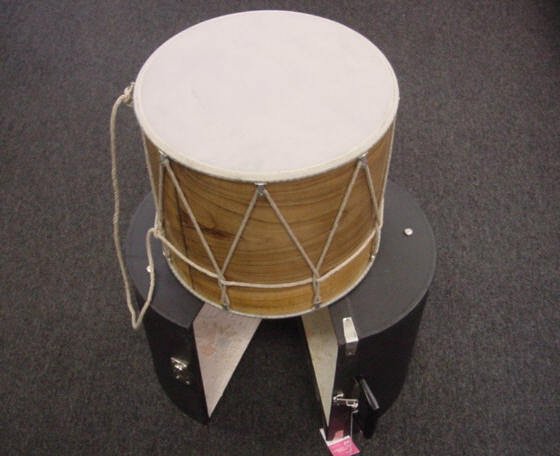
About MODERN JEWISH & ISRAELI MUSIC
Jewish and Israeli music
The music of Israel is a combination of Jewish and non-Jewish music traditions that have come together over the course of a century to create a distinctive musical culture. For almost 150 years, musicians have sought original stylistic elements that would define the emerging national spirit.
In addition to creating an Israeli style and sound, Israel's musicians have made significant contributions to classical, jazz, pop rock and other international music genres. Since the 1970s, there has been a flowering of musical diversity, with Israeli rock, folk and jazz musicians creating and performing extensively, both locally and abroad. Many of the world's top classical musicians are Israelis or Israeli expatriates.
The works of Israeli classical composers have been performed by leading orchestras worldwide.
Music in Israel is an integral part of national identity. Beginning in the days of the pioneers, Hebrew songs and public singalongs (Shira beTsibur) were encouraged and supported by the establishment. "Public singalongs were a common pastime (of the early settlers), and were for them a force in defining their identity", wrote Nathan Shahar.
This view of music as nation-building continues to this day. "We are in the midst of creating a culture", wrote Nahum Heyman, one of Israel's leading music composers and music historians. Jewish immigrants from Europe, Asia, the Middle East and elsewhere brought with them their musical traditions, melding and molding them into a new Israeli sound.
GYPSY MUSIC
Gypsy Music may refer to: Gypsy music, also known as Gypsy style, Romani-related music played in a characteristic gypsy style and Romani music, the original music of the Romani people
- Gypsy Jazz, jazz played by Romani people
- Gypsy Punk, a hybrid of Romani music and punk rock
- Gypsy Scale, a musical scale sometimes found in Romani music
Characteristic features are: Chords are more often varied than in the original melody. Harmonic transitions are introduced that did not exist in the original. A harmonic transition that occurs in the original is emphasized so that it sounds as if it were an added harmony.
Do Gypsies play music?
Gypsies play in the field of music, song, and the dance, not only in the western part of the Orient, but also in Europe.
Who was in the band gypsy?
James Walsh
Keyboard instrument
Enrico Rosenbaum
Guitar
Bill Lordan
Acoustic Drum Kit
Doni Larson
Bass
Randy Cates
Bass
Jay Epstein
Acoustic Drum
What is gypsy dance called?
It can also be referred to as Romany dance, due to the Romany name given to the traditional, proud gypsies. Gypsy dance, the folk dancing of Romany people from all over the world, are dances of graceful and joyful movements, expressing freedom, passion and playfulness.
What is gypsy Jazz music?
Gypsy Jazz (also known as gypsy swing, jazz manouche or hot club-style jazz) is a style of small-group jazz originating from the Romani guitarist Jean "Django" Reinhardt (1910–53), in conjunction with the French swing violinist Stéphane Grappelli (1908–97), as expressed in their group the Quintette du Hot Club de ..
How do you dress like a modern Gypsy?
Modern bohemian clothing consists of crop tops, crochet bralettes, fitted trousers, hip hugging skirts and bodycon gypsy dresses. Pair these with metallic gladiators, fringed sling bags, flower tiaras and feather jewelry.
What type of music do Romanians listen to?
Overall, the most preferred music genre in Romania, for three out of four surveyed groups, was pop, disco and dance. By contrast, four out of ten families without children mostly listened to old music in 2020
What role does music have in the Roma culture?
In the life of many groups of Roma, music plays an important and living role: on the one hand within the family or group, dur- ing celebrations, spontaneous get-togethers or other occasions, on the other as a means of earning money.
Romani music
Romani musicians at a wedding in the Czech Republic in 2005
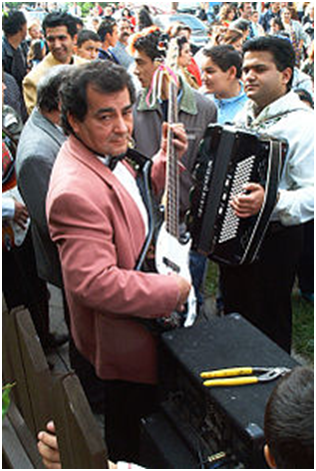
Romani people
Flag of the Romani people
Archaeology Cuisine Culture Dance Discrimination against Romani people Dress Folklore History Language Media Music Names People Religion Settlements.
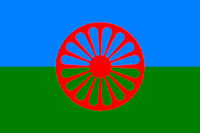
It was approved by the representatives of various Romani communities at the first and second World Romani Congresses (WRC), in 1971 and 1978. The flag consists of a background of blue and green, representing the heavens and earth, respectively; it also contains a 16-spoke red dharmachakra, or cartwheel, in the center.
What does the Romani flag symbolize?
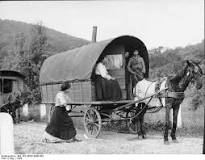
What race are Romani Gypsies?
What language do Gypsies talk?
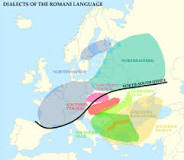
Romani people by sub-group
Romani diaspora by country
Romani music (often referred to as gypsy or gipsy music, which is sometimes considered a derogatory term) is the music of the Romani people who have their origins in northern India ( Lambi-Judai by Gypsy Singer Rehma) but today live mostly in Europe.
Historically nomadic, though now largely settled, the Romani people have long acted as entertainers and tradesmen. In many of the places Romanies live they have become known as musicians. The wide distances travelled have introduced a multitude of influences of: Byzantine, Greek, Arabic, Indian, Persian, Turkish, Slavic, Romanian, German, Dutch, French, Spanish, and even Jewish musical forms.
It is difficult to define the parameters of a unified Romani musical style, as there are many differences in melodic, harmonic, rhythmic and formal structures from region to region. Lyrics to Romani songs are often sung in one or more dialects of the Romani language, and dance frequently accompanies Romani music performance.
The quintessentially Spanish flamenco is to a very large extent the music (and dance, or indeed the culture) of the Romani people of Andalusia.
Apart from Romani music for local use, in Eastern Europe a separate Romani music originated for entertainment at parties and celebrations. This music drew its themes from Hungarian, Romanian, Russian and other sources.
Later on it gained popularity in Western Europe, where many Romani orchestras were active, playing sophisticated melodies of East European origin. Probably the most influential Romani musician was Django Reinhardt (1910–1953).
Original Romani music
Original Romani folksongs, not derived from the countries where the Romani live, are relatively rare. This particular folk music is mainly vocal and consists of slow plaintive songs and fast melodies which may be accompanied by dancing. The fast melodies are accompanied with tongue-clacking, hand-clapping, mouth-basses, clicking of wooden spoons and other techniques.
There are five main components that are found throughout Romani music of various territories. The first is the use of three voices or parts: the melodic line, the terce and the quint either through vocalization or instruments. The second is syncopation, where the music starts right after a beat while maintaining a consistent rhythm.
The third is having the music played in different phrases, meaning that the entrance and exit of different musical themes are felt at different times throughout a song either through rhythm or instruments. The fourth is harmony, where a minor chord is used instead of a major chord. The last is singing, where natural vocal abilities are emphasized.
The development of Romani music dates back to the playing of instruments such as lutes in the late 1400s in Hungary and Italy. Roma would perform with non-Roma as entertainers in any aspect of performance. Eventually, as organized religion gained traction, performance became less emphasized and sometimes prohibited for non-Roma populations, so Roma filled all professional entertainment spots.
They also performed at life events such as weddings, baptisms, funerals and circumcisions. Because there is no one nation state for Romani, they were often forced to create their own living spaces within the countries they settled. Musical and cultural influences were taken from the countries where they lived and incorporated into their own music such as instruments, languages and subject matter of the music itself. Some songs incorporate the Romani language.
Country-Related Music
Most Romani music is based on the folk music of the countries where the Romani went through or settled. Local music is adopted and performed – usually instrumental – and, slowly, it is transformed into Romani styles, which are usually more complex than the original styles. In its turn, Romani music has greatly influenced the local music. Among these the Hungarian versions have become best known, although examples of Romani music in other countries also endure.
Spain
The Romani people of Spain (Iberian Kale people) have contributed significantly to the Andalusian musical tradition known as flamenco. Although it is not, strictly speaking, Romani music, Flamenco is closely associated to this ethnicity and a significant proportion of famous flamenco artists are Iberian Kale people.
Bulgaria
Due to the significant Romani population in Bulgaria, this ethnic group's music is very popular. Chalgamata music is also played by Romani musicians in Bulgaria.
Romania
Wandering musicians in the wine gardens of Transylvania (Pennell, 1893)
The Lăutari were traditional Romani musicians, playing at various events (weddings, funerals, etc.)
The manele genre which is very popular in Romania is supported by Romani ethnic musicians, too.
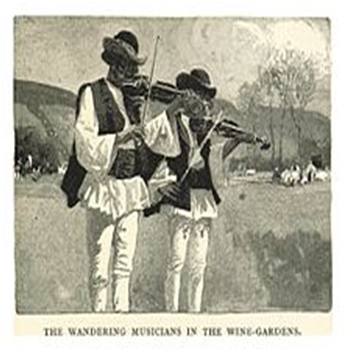 Russia
RussiaA choir in Russia was the Sokolovsky choir.
In 1931, a public Romani theatre, Romen Theatre, has been established in Moscow incorporating Romani music and dance into theatrical performances.
Turkey
Romani people are known throughout Turkey for their musicianship. Their urban music brought echoes of classical Turkish music to the public via the meyhane or taverna. This type of fasıl music (a style, not to be confused with the fasıl form of classical Turkish music) coupled with food and alcoholic beverages is often associated with the underclass of Turkish society, though it also can be found in more "respectable" establishments in modern times.
Romanis have also influenced the fasıl itself. Played in music halls, the dance music (oyun havası) required at the end of each fasıl has been incorporated with Ottoman rakkas or belly dancing motifs. The rhythmic ostinato accompanying the instrumental improvisation (ritimli taksim) for the belly-dance parallels that of the classical gazel, a vocal improvisation in free rhythm with rhythmic accompaniment. Popular musical instruments in this kind of fasıl are the Clarinet, Violin, Kanun and Darbuka. Clarinetist Mustafa Kandıralı is a well known fasıl musician.
Balkans
A typical type of Romani music is known as Tallava. Tallava was originated by the Roma minority in Kosovo in the 1990s.The genre of Tallava was later adopted among the Ashkali group. Tallava is common among Albania. This genre has influences from other music genres such as Greek (Skiladiko) and Bulgarian (Chalga). It also blended with Turkish (Arabesque), Arabic (Arabic pop music), Serbian (Turbo-folk) and Albanian music.
Hungary
Panna Cinka
The Rajkó Orchestra and Folk Ensemble is known for preserving Hungarian Roma music, dance and costume culture since 1952. Their work carries on the traditions of century-old generations. Their performances can be seen at a number of venues, among others at the Danube Palace of Budapest during the season between 1 May and 31 October.
Another notable Roma music formation is Ando Drom. Established by Jenő Zsigó in 1993, the Ando Drom Foundation serves to promote Romany art, encourage young talent and to allow the Romany encounter their own culture within the community, through the productions of the band Ando Drom, among others, a group pioneering the reinterpretation of Romany music and dance. Their music is contemporary in nature. Besides authentic Romany folk songs, they play a kind of urban Romany music which gives a voice to the present-day reality of the community. They avoid reconstructing the manners of old musicians and singers or their style.
Traditionally there are two types of Romani music: one rendered for non-Romani audiences, the other is made within the Romani community. The music performed for outsiders is called "gypsy music", which is a colloquial name that comes from Ferenc Liszt.
They call the music they play among themselves "folk music". Although Romani musicians in Hungary were mentioned in books since the 15th century, musicianship as an occupation didn't become widespread among the Roma until the latter half of the 18th century. The Roma started to develop an ethnic music culture from the 1970s and they obtained national minority status in Hungary. Two famous Romani musicians of the 18th century were Mihály Barna and Panna Cinka. The band of the latter had two violins ("prim" and "kontra"), a cimbalom, and double-bass.
The boom of Romani music in the last decades of the 18th century was triggered by the Hungarian nationalist movement. New genres started to evolve in music, and dance. Romani bands performed in more places, such as parks, promenades. Patronized by aristocrats, Romani musicians started to learn more about Viennese classicism and European musical culture. The unique harmonization of Hungarian "gypsy music" started to differ from its Balkanian counterpart. This was one major factor of the Western European success of Hungarian "gypsy music".
This music was exotic, but still accessible for the masses. Another contributory factor for success was the tradition of playing without scores. This further popularized the Romani musicians since they learned and play music by ear. Romani bands first consisted of strings, harp and duda. Later on harp was replaced with cimbalom.
The harmonies accompanying the melodies became more dominant in their music. Duda was replaced by clarinet and tárogató. The instrumentation was impacted by Western classical influences, so the most popular form was: two violins (prímás and kontrás), cimbalom, double bass. Bigger bands had clarinet, cello, and later another violin (tercprímás).
In the early 19th century, Romani musicians became the representatives of national music. During the Hungarian Revolution of 1848 in Hungary, Romani bands played their music for soldiers before and after the battle to encourage and entertain them. After the loss of the war, these musicians gained a lot of respect from the country. Romani music became the symbol of desired freedom.[14] A new genre called magyar nóta evolved by around the middle of the century.
The composers of the time wanted to sound more like Western European music by extending the folksong form and adopting some elements of Western style. This genre was also performed by Romani musicians, thus it started to be labelled as "gypsy music" as well. The most famous Romani composer of this century was Pista Danko (1858–1903).
Western Europe
The sophisticated music of the Romani orchestras that visited Western Europe became popular in the second half of the 19th century and had its heyday from the 1920s onwards to about 1960, although this music remains popular still today. The tours of rajkó-orchestras – featuring young Romani-musicians – added much to its popularity. The rajkó boys were both endearing and virtuoso, a combination that enchanted the public.
The cimbalom, unknown to the Western audience, added its characteristic sound to the violins played in a Romani style. Romani virtuoso like Bela Babai,[15] Lajos Veres, the many members of the Lakatos family and others became famous. Nowadays the names of Roby Lakatos, Buffo Sandor and Sandor Jaroka still are household names for the Western connoisseurs of this type of music.
Since 2014, an E.U.-supported project named Music4Rom has highlighted the importance of the Romani music in classical music. Jorge Chaminé is one of the founders of this project. The values promoted by Music4Rom include recognition, understanding of others, creativity, tolerance and admiration. The project promotes Romani values to build intercultural bridges, social inclusion and children's education through music.
GYPSY MUSIC ( That Every One Loves) By Ishtar Alabina
LYRICS:
De granada a Casablanca
Enterró mi fantasía
Una guitarra, y una gitana canta
Canta mi Andalucía
De llegar a Casablanca
Tú me bailas en la playa
Con tus ojos negros, chiquita
Y tu boca enamorada
Enamorada como tú (como tú)
Enamorada como tú (como tú)
Enamorada como tú (como tú)
Como tú, como tú, hay nadie como tú...
Yalabina yalla
Ya habibi yalla
Nifrah win ool, masha allah
Yalabina yalla
Ya habibi yalla
Nifrah win ool, masha allah
Yalabina ala tool
Yalabina ala tool
Yalabina ala tool
Ah ya aili waili waili waili waili
Ulu inshalla...
De granada a Casablanca
Enterró mi fantasía
Una guitarra y una gitana canta
Canta mi Andalucía
De granada a Casablanca
Enterró mi fantasía
Una guitarra y una gitana canta
Canta mi Andalucía
Ayunak helwa
Shafayfek ghenwa
Ayunak helwa
Shafayfek ghenwa
Ah ya aili waili, waili, waili, waili,
Ulu inshallah...
De Granada a Casablanca
enterré mi fantasia
Una guitarra y una gitana canta
Canta mi Andalucia
Yalabina yalla
Ya habibi yalla
Nifrah win ool
Masha Allah...
Yalabina yalla
Ya habibi yalla
Nifrah win ool
Masha Allah...
Musical masteros
Zubin Mehta (Mastero)-Western Classical
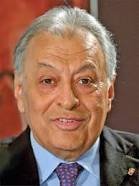 Zubin Mehta is an Indian conductor of Western classical music. He is music director emeritus of the Israel Philharmonic Orchestra and conductor emeritus of the Los Angeles Philharmonic. Mehta's father was the founder of the Bombay Symphony Orchestra, and Mehta received his early musical education from him.
Zubin Mehta is an Indian conductor of Western classical music. He is music director emeritus of the Israel Philharmonic Orchestra and conductor emeritus of the Los Angeles Philharmonic. Mehta's father was the founder of the Bombay Symphony Orchestra, and Mehta received his early musical education from him.Zubin Mehta (born 29 April 1936) is an Indian conductor of Western classical music. He is music director emeritus of the Israel Philharmonic Orchestra (IPO) and conductor emeritus of the Los Angeles Philharmonic.
Mehta's father was the founder of the Bombay Symphony Orchestra, and Mehta received his early musical education from him. When he was 18, he enrolled in the Vienna state music academy, from which he graduated after three years with a diploma as a conductor. He began winning international competitions and conducted the Royal Liverpool Philharmonic at age 21. Beginning in the 1960s, Mehta gained experience by substituting for celebrated maestros throughout the world.
Mehta was music director of the Montreal Symphony Orchestra from 1961 to 1967 and of the Los Angeles Philharmonic from 1962 to 1978, the youngest music director ever for any major North American orchestra. In 1969, he was appointed Music Adviser to the Israel Philharmonic Orchestra and in 1981 he became its Music Director for Life. From 1978 to 1991, Mehta was music director of the New York Philharmonic. He was chief conductor of the Maggio Musicale Fiorentino in Florence from 1985 to 2017.
He is an honorary citizen of both Florence and Tel Aviv and was made an honorary member of the Vienna State Opera in 1997 and of the Bavarian State Opera in 2006. The title of Honorary Conductor was bestowed on him by numerous orchestras throughout the world. More recently, Mehta made several tours with the Bavarian State Opera and kept up a busy schedule of guest conducting appearances. In December 2006, he received the Kennedy Center Honor and in October 2008 he was honored by the Japanese Imperial Family with the Praemium Imperiale. In 2016, Mehta was appointed Honorary Conductor of the Teatro San Carlo, Naples.
Barbra Streisand
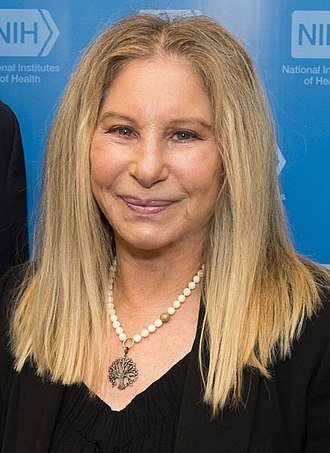
Barbara Joan "Barbra" Streisand (/ˈstraɪsænd/; born April 24, 1942) is an American singer and actress. With a career spanning over six decades, she has achieved success in multiple fields of entertainment, and is among the few performers awarded an Emmy, Grammy, Oscar, and Tony (EGOT).
Streisand began her career by performing in nightclubs and Broadway theaters in the early 1960s. Following her guest appearances on various television shows, she signed to Columbia Records, insisting that she retain full artistic control, and accepting lower pay in exchange, an arrangement that continued throughout her career, and released her debut The Barbra Streisand Album (1963), which won the Grammy Award for Album of the Year. Throughout her recording career, Streisand has topped the US Billboard 200 chart with 11 albums—a record for a woman—including People (1964), The Way We Were (1974), Guilty (1980), and The Broadway Album (1985).She also achieved five number-one singles on the US Billboard Hot 100—"The Way We Were", "Evergreen", "You Don't Bring Me Flowers", "No More Tears (Enough Is Enough)", and "Woman in Love".
Following her established recording success in the 1960s, Streisand ventured into film by the end of that decade. She starred in the critically acclaimed Funny Girl (1968), for which she won the Academy Award for Best Actress. Additional fame followed with films including the extravagant musical Hello, Dolly! (1969), the screwball comedy What's Up, Doc? (1972), and the romantic drama The Way We Were (1973). Streisand won a second Academy Award for writing the love theme from A Star Is Born (1976), the first woman to be honored as a composer. With the release of Yentl (1983), Streisand became the first woman to write, produce, direct, and star in a major studio film.The film won an Oscar for Best Score and a Golden Globe for Best Motion Picture Musical. Streisand also received the Golden Globe Award for Best Director, becoming the first (and for 37 years, the only) woman to win that award. Streisand later directed The Prince of Tides (1991) and The Mirror Has Two Faces (1996).
With sales exceeding 150 million records worldwide, Streisand is one of the best-selling recording artists of all time. According to the Recording Industry Association of America (RIAA), she is the second highest-certified female artist in the United States, with 68.5 million certified album units. Billboard ranked Streisand as the greatest female artist on the Billboard 200 chart and the top Adult Contemporary female artist of all time. Her accolades include two Academy Awards, 10 Grammy Awards including the Grammy Lifetime Achievement Award and the Grammy Legend Award, five Emmy Awards, four Peabody Awards, the Presidential Medal of Freedom, and nine Golden Globes.
Aged 16 and living on her own, Streisand took various menial jobs to have some income. During one period, she lacked a permanent address, and found herself sleeping at the home of friends or anywhere else she could set up the army cot she carried around. When desperate, she returned to her mother's flat in Brooklyn for a home-cooked meal. However, her mother was horrified by her daughter's "gypsy-like lifestyle", wrote biographer Karen Swenson, and again begged her to give up trying to get into show business,[25]: 6 but Streisand took her mother's pleadings as even more reason to keep trying: "My desires were strengthened by wanting to prove to my mother that I could be a star."
She took a job as an usher at the Lunt-Fontanne Theater for The Sound of Music early in 1960. During the run of the play, she heard that the casting director was auditioning for more singers, and it marked the first time she sang in pursuit of a job.: 6 Although the director felt she was not right for the part, he encouraged her to begin including her talent as a singer on her résumé when looking for other work.
She asked her boyfriend, Barry Dennen, to tape her singing, copies of which she could then give out to possible employers. Dennen found a guitarist to accompany her:
We spent the afternoon taping, and the moment I heard the first playback I went insane ... This nutty little kook had one of the most breathtaking voices I'd ever heard ... when she was finished and I turned off the machine, I needed a long moment before I dared look up at her.:
Dennen grew enthusiastic and he convinced her to enter a talent contest at the Lion, a gay nightclub in Manhattan's Greenwich Village. She performed two songs, after which there was a "stunned silence" from the audience, followed by "thunderous applause" when she was pronounced the winner.. She was invited back and sang at the club for several weeks. It was during this time that she dropped the second "a" from her first name, switching from "Barbara" to "Barbra", due to her dislike of her original name.
In the early days Streisand was repeatedly told she was too ugly to be a star and advised to get a nose job, which she did not do.
Nightclub shows
Streisand was next asked to audition at the Bon Soir nightclub, after which she was signed up at $125 a week. It became her first professional engagement in September 1960, where she was the opening act for comedian Phyllis Diller. She recalls it was the first time she had been in that kind of upscale environment: "I'd never been in a nightclub until I sang in one."
Dennen now wanted to expose Streisand to his vast record collection of female singers, including Billie Holiday, Mabel Mercer, Ethel Waters, and Édith Piaf. Streisand realized she could still become an actress by first gaining recognition as a singer. According to biographer Christopher Nickens, hearing other great female singers benefited her style, as she began creating different emotional characters when performing, which gave her singing a greater range.
She improved her stage presence when speaking to the audience between songs. She discovered that her Brooklyn-bred style of humor was received favorably.During the next six months appearing at the club, some began comparing her singing voice to famous names such as Judy Garland, Lena Horne and Fanny Brice. Her conversational ability to charm an audience with spontaneous humor during performances became more sophisticated and professional. Theater critic Leonard Harris wrote: "She's twenty; by the time she's thirty she will have rewritten the record books.
First albums
When she was 21, Streisand signed a contract with Columbia Records that gave her full creative control, in exchange for less money.
Lieberson relented and agreed to sign her. Nearly three decades later, Streisand said:
The most important thing about that first contract – actually, the thing we held out for – was a unique clause giving me the right to choose my own material. It was the only thing I really cared about. I still received lots of pressure from the label to include some pop hits on my first album, but I held out for the songs that really meant something to me.
She took advantage of this several times during her career.
Columbia wanted to call her first album, in early 1963, Sweet And Saucy Streisand; Streisand used her control to insist that it was called The Barbra Streisand Album, saying "if you saw me on TV, you could just go [to the record shop] and ask for the Barbra Streisand album. It's common sense". It reached the top 10 on the Billboard chart and won three Grammy Awards.[25]: 11 The album made her the best-selling female vocalist in the country.: 11 That summer she also released The Second Barbra Streisand Album, which established her as the "most exciting new personality since Elvis Presley.": 11 She ended that breakthrough year of 1963 by performing one-night concerts in Indianapolis, San Jose, Chicago, Sacramento, and Los Angeles.
Luciano Pavarotti- Opera
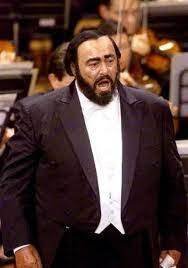
Luciano Pavarotti Cavaliere di Gran Croce OMRI (/ˌpævəˈrɒti/, US also /ˌpɑːv-/, Italian: [luˈtʃaːno pavaˈrɔtti]; 12 October 1935 – 6 September 2007) was an Italian operatic tenor who during the late part of his career crossed over into popular music, eventually becoming one of the most acclaimed and loved tenors of all time. He made numerous recordings of complete operas and individual arias, gaining worldwide fame for his tone, and achieving the honorific title "King of the High Cs".
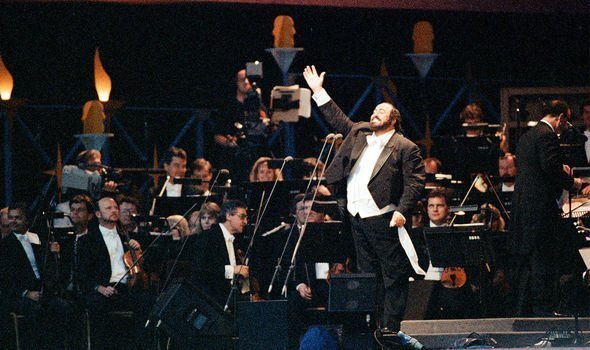 As one of the Three Tenors, who performed their first concert during the 1990 FIFA World Cup before a global audience, Pavarotti became well known for his televised concerts and media appearances. From the beginning of his professional career as a tenor in 1961 in Italy to his final performance of "Nessun dorma" at the 2006 Winter Olympics in Turin, Pavarotti was at his best in bel canto operas, pre-Aida Verdi roles, and Puccini works such as La bohème, Tosca, Turandot and Madama Butterfly.
As one of the Three Tenors, who performed their first concert during the 1990 FIFA World Cup before a global audience, Pavarotti became well known for his televised concerts and media appearances. From the beginning of his professional career as a tenor in 1961 in Italy to his final performance of "Nessun dorma" at the 2006 Winter Olympics in Turin, Pavarotti was at his best in bel canto operas, pre-Aida Verdi roles, and Puccini works such as La bohème, Tosca, Turandot and Madama Butterfly.He sold over 100 million records, and the first Three Tenors recording became the best-selling classical album of all time. Pavarotti was also noted for his charity work on behalf of refugees and the Red Cross, amongst others. He died from pancreatic cancer on 6 September 2007.
Bhimsen Joshi
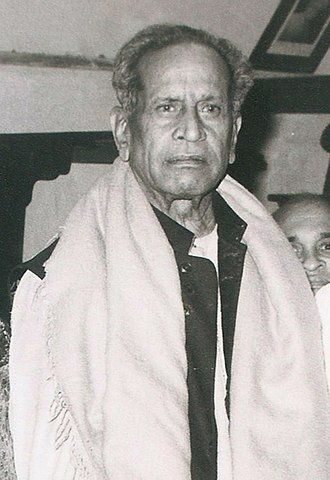
Pandit Bhimsen Gururaj Joshi; BHEEM-SAYN joe-SHEE; 4 February 1922 – 24 January 2011), also known by the honorific prefix Pandit, was one of the greatest Indian vocalists from India, in the Hindustani classical tradition. He is known for the khayal form of singing, as well as for his popular renditions of devotional music (bhajans and abhangs).
Joshi belongs to the Kirana gharana tradition of Hindustani Classical Music. He is noted for his concerts, and between 1964 to 1982 Joshi toured Afghanistan, Italy, France, Canada and USA. He was the first musician from India whose concerts were advertised through posters in New York City. Joshi was instrumental in organising the Sawai Gandharva Music Festival annually, as homage to his guru, Sawai Gandharva.
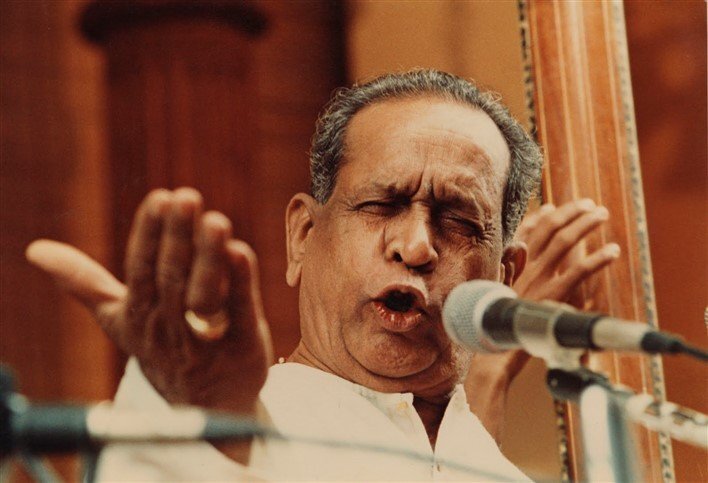
In 1998, he was awarded the Sangeet Natak Akademi Fellowship, the highest honour conferred by Sangeet Natak Akademi, India's National Academy for Music, Dance and Drama. Subsequently, he received the Bharat Ratna, India's highest civilian honour, in 2009.
Late Pt. Acharya Vishwanath Rao Ringe
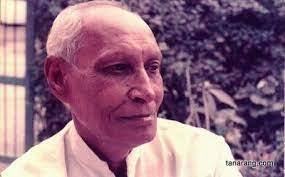
Late Pt. Acharya Vishwanath Rao Ringe 'Tanarang' born on 6 December 1922 was a Hindustani Classical Music vocalist and composer. He belonged to Gwalior Gharana of Hindustani Classical Music. He composed more than 2000 bandishs in about 200 ragaas, for which he has been enlisted in Limca Book of Records. He wrote couple of books in past named 'Sangitanjali' and 'Swaranjali' and a recent book `Aacharya "Tanarang" ki Bandishen` was published.
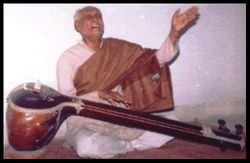
Pt. Ringe was the disciple of late Pandit Krishnarao Pandit of Gwalior gharana. He started learning music from his childhood. He received rigorous and intensive training and full guidance as a performer Khyal Gayakee, in Gwalior Gharana style. In 1939, he established a music school named Bhartiya Sangeet Kala Mandir.
More than 2000 compositions in about 200 raagas, have been composed in various Talas. Viz... Ektal, Deepchandi, Tritala, Tilwada, Chanchar, Dadra, Keharva, Jhaptala, Ada-Choutal, Roopak etc. Pt Ringe had himself composed a Raga Hemashri, which he has Rendered in All India Radio (AIR) Programme.
His compositions include Bada Khyal, Chota Khyal, Chaturang, Tarana, Sadra, Sargam, Tillana, Sur Sagar. Sur Sagar is a unique composition, in which the lyrics are same as the notes.
M. Balamurali krishna
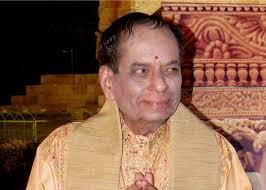
Mangalampalli Balamuralikrishna (6 July 1930 – 22 November 2016) was an Indian Carnatic vocalist, musician, multi-instrumentalist, playback singer, composer, and character actor. He was awarded the Madras Music Academy's Sangeetha Kalanidhi in 1978. He has garnered two National Film Awards (1976, 1987), the Sangeet Natak Akademi Award in 1975, the Padma Vibhushan, India's second-highest civilian honor in 1991, for his contribution towards arts, the Mahatma Gandhi Silver Medal from UNESCO in 1995, the Chevalier of the Ordre des Arts et des Lettres by the French Government in 2005, the Sangeetha Kalanidhi by Madras Music Academy, and the Sangeetha Kalasikhamani in 1991, by the Fine Arts Society, Chennai to name a few.
Balamurali krishna started his career at the age of six. In his life-time, he gave over 25,000 concerts worldwide. Apart from Pandit Bhimsen Joshi, he presented jugalbandi concerts (duets) with Pandit Hariprasad Chaurasia, Pandit Ajoy Chakrabarty and Kishori Amonkar, among others. He is also known for popularizing the compositions of Sri Bhadrachala Ramadasu, Sri Annamacharya, and others.
Balamuralikrishna's concerts combined sophisticated vocal skills and rhythmic patterns of classical music with the popular demand for entertainment value. Balamurali krishna presented concerts in many countries, including the US, Canada, UK, Italy, France, Russia, Sri Lanka, Malaysia, Singapore, countries in the Middle East, and elsewhere. Apart from his native tongue, Telugu, he has also composed in other languages including Kannada, Sanskrit, Tamil, Malayalam, Hindi, Bengali, and Punjabi.
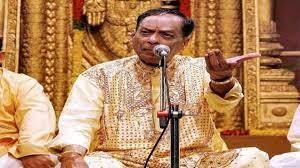
He appeared as a featured soloist with an award-winning British choir, performing the "Gitanjali Suite" with words from Rabindranath Tagore's Nobel Prize-winning poetry and music by "Dr. Joel", the noted UK-based Goan composer. His clear diction in several languages prompted an invitation to record Tagore's entire Rabindra Sangeet compositions in Bengali, preserving them for posterity. He had sung in French, and even ventured into jazz fusion, collaborating with the top Carnatic percussion teacher, Sri T.H. Subash Chandran, in a concert for Malaysian royalty.
Ravi Shankar
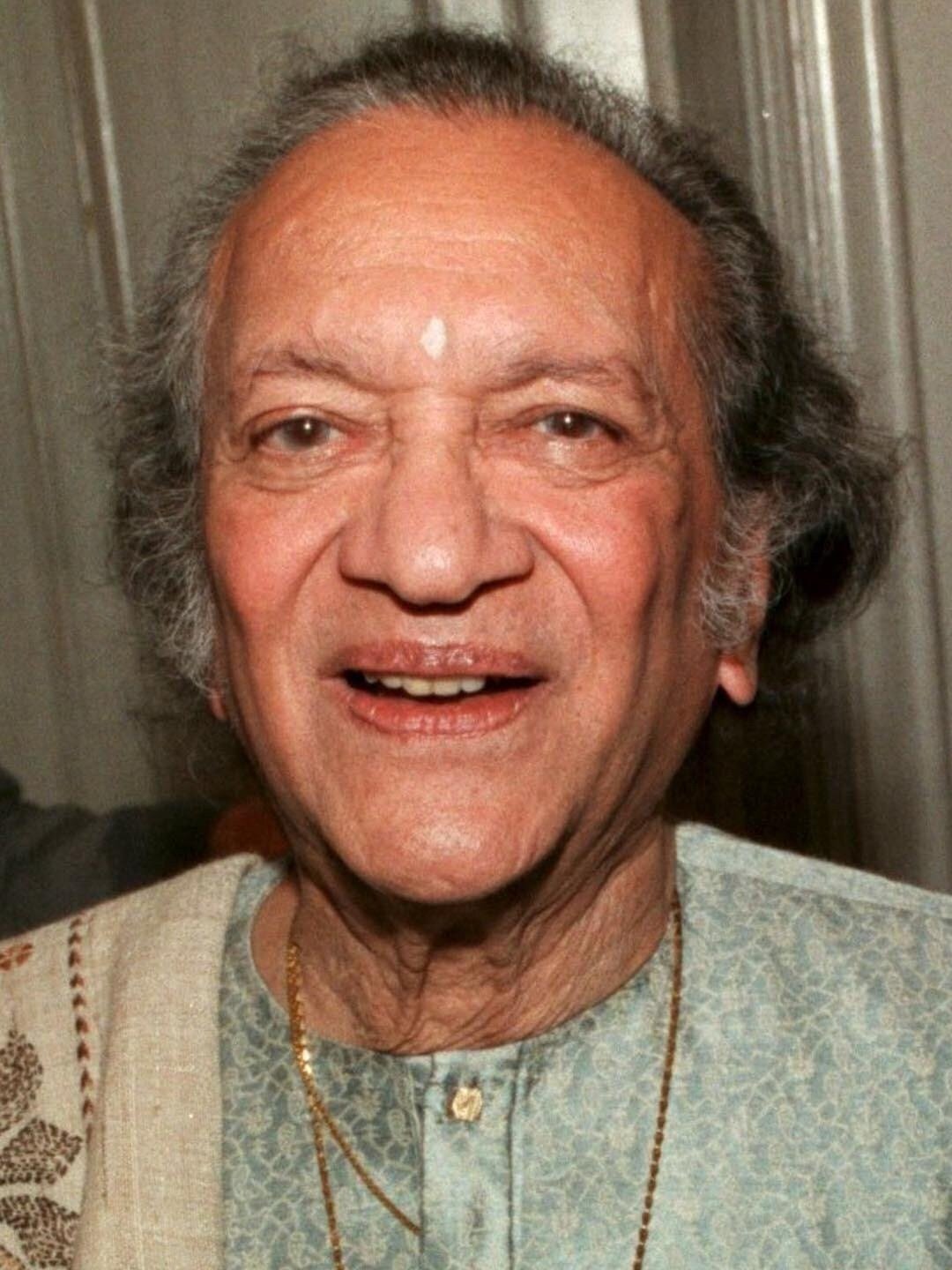
Ravi Shankar KBE (Bengali pronunciation: [ˈrobi ˈʃɔŋkor]; রবি শঙ্কর born Robindro Shaunkor Chowdhury, sometimes spelled as Rabindra Shankar Chowdhury; 7 April 1920 – 11 December 2012) was an Indian sitarist and composer. A sitar virtuoso, he became the world's best-known export of North Indian classical music in the second half of the 20th century, and influenced many musicians in India and throughout the world. Shankar was awarded India's highest civilian honour, the Bharat Ratna, in 1999.
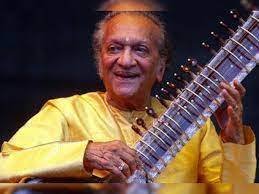
Shankar was born to a Bengali Brahmin family in India, and spent his youth as a dancer touring India and Europe with the dance group of his brother Uday Shankar. He gave up dancing in 1938 to study sitar playing under court musician Allauddin Khan. After finishing his studies in 1944, Shankar worked as a composer, creating the music for the Apu Trilogy by Satyajit Ray, and was music director of All India Radio, New Delhi, from 1949 to 1956.
In 1956, Shankar began to tour Europe and the Americas playing Indian classical music and increased its popularity there in the 1960s through teaching, performance, and his association with violinist Yehudi Menuhin and Beatles guitarist George Harrison. His influence on Harrison helped popularize the use of Indian instruments in Western pop music in the latter half of the 1960s. Shankar engaged Western music by writing compositions for sitar and orchestra, and toured the world in the 1970s and 1980s. From 1986 to 1992, he served as a nominated member of Rajya Sabha, the upper chamber of the Parliament of India. He continued to perform until the end of his life.
Hariprasad Chaurasia
Hariprasad Chaurasia (born 1 July 1938) is an Indian music director and classical flautist, who plays the flute, in the Hindustani classical tradition.
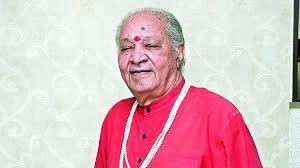
Chaurasia started learning vocal music from his neighbour, Rajaram, at the age of 15. Later, he switched to playing the flute under the tutelage of Bholanath Prasanna of Varanasi for eight years. He joined the All India Radio, Cuttack, Odisha in 1957 and worked as a composer and performer. Much later, while working for All India Radio, he received guidance from the reclusive Annapurna Devi, daughter of Baba Allaudin Khan. She only agreed to teach him if he was willing to unlearn all that he had learnt until then.
Another version is that she only agreed to teach him after he took the decision to switch from right-handed to left-handed playing to show her his commitment. In any case Chaurasia plays left-handed to this day.
Apart from classical music, Hariprasad has collaborated with Shivkumar Sharma, forming a group called Shiv-Hari. The pair composed music for many popular movies, including Silsila and Chandni, and created some highly popular songs. Chaurasia also collaborated with Bhubaneswar Mishra, forming the pair "Bhuban-Hari" (in line with Shiv-Hari), and the pair composed music for many Odia movies, creating numerous songs that were hugely popular in the state. These include Muje janena kaha baata (sung by Suman Kalyanpur; movie: Gapa helebi Sata); and all songs from Maa o Mamata, and many more.
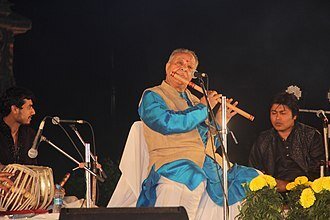
Chaurasia's nephew and pupil Rakesh Chaurasia is a highly accomplished flautist now, and has been performing globally with such eminent maestros as Ustad Zakir Hussain.
He serves as the artistic director of the World Music Department at the Rotterdam Music Conservatory in the Netherlands[citation needed]. He was also the founder of the Vrindavan Gurukul in Mumbai (opened 2006) and Vrindavan Gurukul in Bhubaneshwar (opened 2010). Both of these institutes are schools dedicated to training students in bansuri in the Guru-shishya tradition.
He has collaborated with several western musicians, including John McLaughlin, Jan Garbarek, and Ken Lauber, and has composed music for Indian films. Chaurasia also played on The Beatles' 1968 B-side "The Inner Light", which was written by George Harrison. He also played with George Harrison on his first solo release, Wonderwall Music, and with Harrison, Ravi Shankar and others on the Dark Horse Records release Shankar Family & Friends.
K. J. Yesudas- Indian Classical
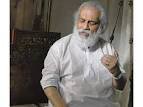
Kattassery Joseph Yesudas (born 10 January 1940) is an Indian playback singer and musician who sings Indian classical, devotional and film songs. He is widely regarded as one of the greatest singers in the history of Indian Music and also as a cultural icon of Kerala. Yesudas is estimated to have recorded more than 50,000 songs in various Indian languages, including Malayalam, Tamil, Kannada, Telugu, Hindi, Odia, Bengali, Marathi as well as Arabic, English, Latin, and Russian, in a career spanning six decades.He is often referred to as Gaanagandharvan (transl. The Celestial Singer). He is one of the highly acclaimed singers in India. Yesudas holds the record for singing 11 songs in different languages in a single day. He has also composed a number of Malayalam film songs during the 1970s and 1980s.
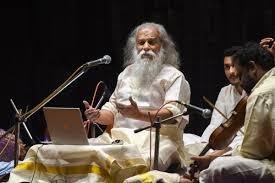
Yesudas won the National Award for the Best Male Playback Singer record eight times, the Filmfare Awards South five times, and the State Award for the Best Playback Singer forty-three times, including awards given by the state governments of Kerala, Tamil Nadu, Andhra Pradesh, Karnataka, and West Bengal. He was awarded the Padma Shri in 1975, the Padma Bhushan in 2002, and the Padma Vibhushan (second-highest civilian award) in 2017 by the Government of India for his contributions towards the arts. In 2005, he was honoured with the J. C. Daniel Award, Kerala government's highest honour for contributions to Malayalam cinema. In 2011 Yesudas was honoured with the CNN-IBN outstanding achievement award for his contributions in the music field. In 2006, he sang 16 film songs in four South Indian languages on the same day at AVM Studio, Chennai.
Hari Om Sharan- Indian Classical
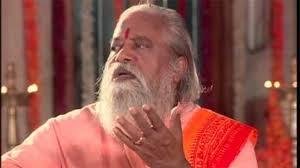
Hari Om Sharan (26 September 1932 – 18 December 2007) was an Indian Hindu devotional singer and lyricist. He devoted most of his career to singing devotional songs in praise of Sita, Rama, and Hanuman. As a Bhajan singer in the 1970s he recorded albums such as Premanjali Pushpanjali, and Daata Ek Ram. His bhajans namely 'Tera Ram ji Karenge Bedaa Paar', 'Maili Chadar Odhke Kaise', 'Aarti Kunj Bihari ki', 'Aisa Pyar Bahaa De Maiyya', 'Shree Radhey Govinda', 'Hanuman Chalisa', 'Govind Jai Jai Gopal Jai Jai' are very popular amongst devotees around the world. During his devotional recordings spanning over 35 years, he released over 20 Bhajan albums.
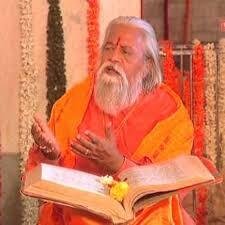
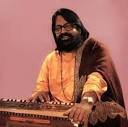
Anup Jalota- Indian Classical
Anup Jalota, (born 29 July 1953) is an Indian singer, musician and actor, best known for his contributions to the Bhajan genre of Indian Music. He is popularly known as the "Bhajan Samraat" (Emperor of Bhajans).Padma Shri was conferred upon him by Government of India in 2012.
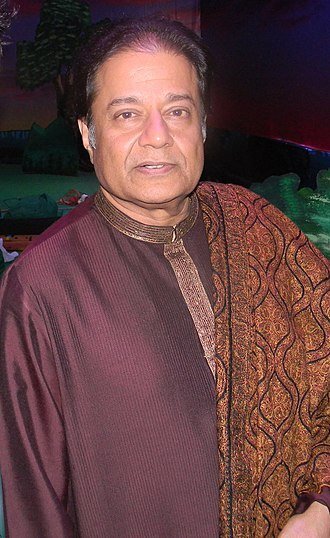
Jalota started his musical career as a chorus singer in All India Radio. He is usually backed by a santoor player, dholak player, sarod player, sarangi player, violinist, sitar player, tabla player and guitarist. Some of his popular bhajans include Aisi Lagi Lagan, Main Nahi Makhan Khayo, Rang De Chunariya, Jag Me Sundar Hai Do Naam, and Chadariya Jhini Re Jhini. He was also the presenter of the program Dharam Aur Hum, telecast in Star Plus from 2002 to 2005. He met Jagadguru Shree Kripaluji Maharaj in Mumbai and agreed to release several CDs of his compositions. In 2008 he recorded the title song "Golden Memorable Yaadein" for the CD "Noorani Chehra", produced by Shaukat (Sam) Kassam to commemorate the Golden Jubilee of the Aga Khan.
Bhupen Hazarika- Indian Classical
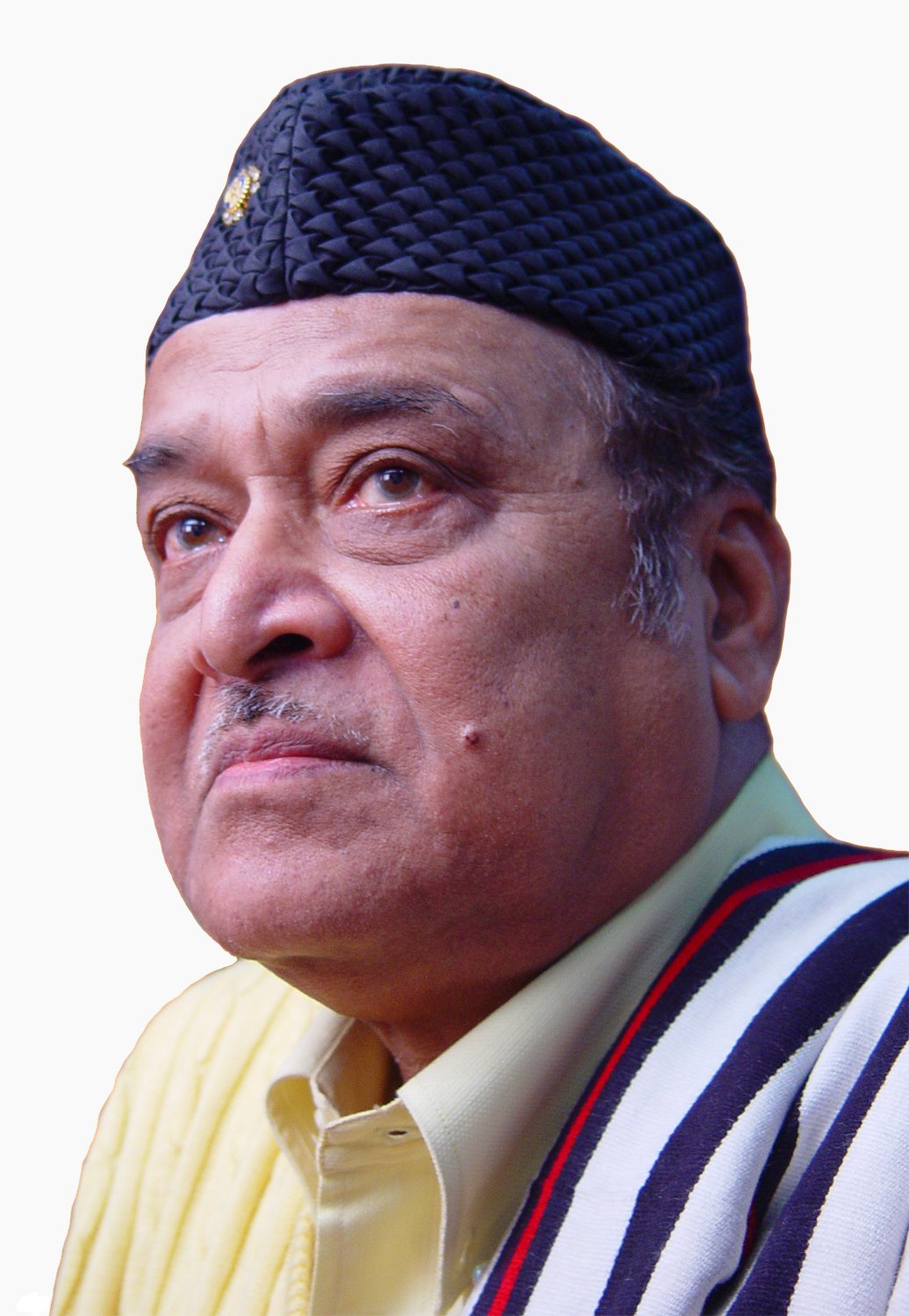
Bhupen Hazarika was an Indian playback singer, lyricist, musician, poet, actor, filmmaker and politician from Assam, widely known as Sudha Kontho.
Bhupen Hazarika (Assamese: [bʱupɛn ɦazɔɹika] (8 September 1926 – 5 November 2011) was an Indian playback singer, lyricist, musician, poet, actor, filmmaker and politician from Assam, widely known as Sudha Kontho (meaning cuckoo, literally "nectar-throated"). His songs were written and sung mainly in the Assamese language by himself, are marked by humanity and universal brotherhood and have been translated and sung in many languages, most notably in Bengali and Hindi.
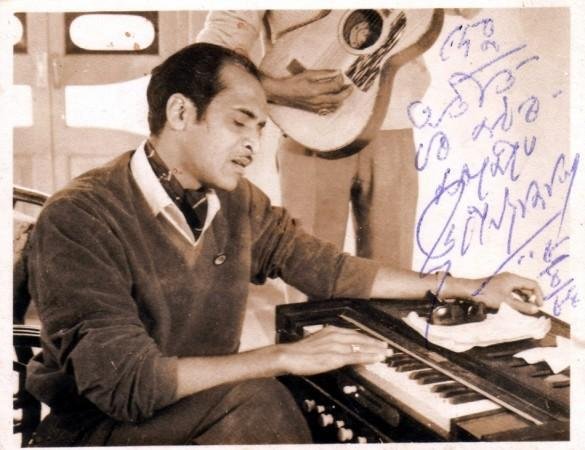
His songs, based on the themes of communal amity, universal justice and empathy, are especially popular among the people of Assam, West Bengal and Bangladesh. He is also acknowledged to have introduced the culture and folk music of Assam and Northeast India to Hindi cinema at the national level. He received the National Film Award for Best Music Direction in 1975, the Sangeet Natak Akademi Award (1987), Padma Shri (1977), and Padma Bhushan (2001),Dada Saheb Phalke Award (1992), the highest award for cinema in India and Sangeet Natak Akademi Fellowship (2008), the highest award of the Sangeet Natak Akademi.
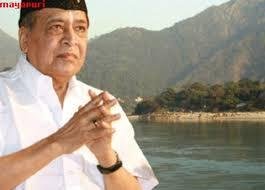
He was posthumously awarded both the Padma Vibhushan, India's second-highest civilian award, in 2012, and the Bharat Ratna, India's highest civilian award, in 2019.Hazarika also held the position of the Chairman of the Sangeet Natak Akademi from December 1998 to December 2003.
S. D. Burman
Sachin Dev Burman (1 October 1906 – 31 October 1975) was an Indian music director and singer. A member of the Tripura royal family, he started his career with Bengali films in 1937. He later began composing for Hindi movies and became one of the most successful and influential Bollywood film music composers. Burman composed the soundtracks for over 100 movies, including Bengali films and Hindi. Apart from being a versatile composer, he also sang songs in the light semi-classical and folk style of Bengal. His son, R. D. Burman, was also a celebrated music composer for Bollywood films.
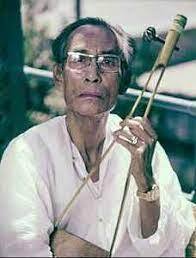
Burman's compositions were sung by the leading singers of the era, including Kishore Kumar, Lata Mangeshkar, Mohammed Rafi, Geeta Dutt, Manna Dey, Hemant Kumar, Asha Bhosle, Shamshad Begum, Mukesh and Talat Mahmood. As a playback singer, Burman sang 14 Hindi and 13 Bengali film songs.
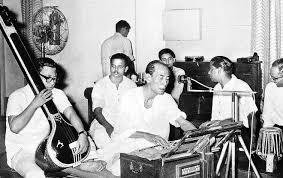
Burman started working as a radio singer on Calcutta Radio Station in the late 20s, when his work as a singer-composer was based on Bengali folk and light Hindustani classical music. Consequently, his compositions were mainly influenced by his huge repertoire of folk-tunes from present Bangladesh and later other parts of India and around the world. His first record was also released in 1932 (Hindustan Musical Product), with "Khamaj" (semi classical), "E Pathey
Aaj Eso Priyo" on one side and the folk "Dakle Kokil Roj Bihane" on the reverse side, on 78 rpm for Hindustan Records. In the following decade, he reached his peak as a singer, cutting as many as 131 songs in Bengali, and also sang for composers like Himangsu Dutta , RC Boral , Nazrul Islam, Sailesh Das Gupta and Subal Das Gupta . He also sang for Madhavlal Master and his son R.D. Burman .
In 1934, he attended the All India Music Conference, at the invitation of Allahabad University, where he presented his Bengali Thumri, all to an illustrious audience, with the likes of Vijaya Lakshmi Pandit and the inimitable Abdul Karim Khan of Kirana Gharana. Later in the year, he was invited to Bengal Music Conference, Kolkata, which was inaugurated by Rabindranath Tagore, here again he sang his Thumri, and was awarded a Gold Medal.
As a music composer, he started with the Bengali plays Sati Tirtha and Janani, and eventually gave his first score in the film Rajgee. In 1937, his second film Rajkumarer Nirbashan (1940) became a hit. He gave music in Bengali films such as Protishodh (1941), Abhoyer Biye (1942) and Chaddobeshi (1944) and only one Bengali film in 1969/70 after he permanently moved to Mumbai in 1946.
He composed for over 20 Bengali films and 89 Hindi films in all. He made his film debut singing in Yahudi ki Ladki (1933) but the songs were scrapped and re-sung by Pahari Sanyal. His first film as a singer was finally Sanjher Pidim (1935).
1940s
In 1944, Burman moved to Mumbai, at the request of Sasadhar Mukherjee of Filmistan, who asked him to give score for two Ashok Kumar starrers, Shikari (1946) and Aath Din, but his first major breakthrough came the following year with the company's Do Bhai (1947). The song Mera Sundar Sapna Beet Gaya sung by Geeta Dutt was his breakthrough song into the film industry. In 1949 came Shabnam, his biggest hit yet with Filmistan, especially noticeable for its multi-lingual hit song Yeh Duniya Roop ki Chor, by Shamshad Begum, which became a rage in those days.
1950s
Disillusioned with the materialism of Mumbai, Burman left the Ashok Kumar starred Mashaal (1950) incomplete and decided to board the first train back to Calcutta. Fortunately, he was dissuaded from doing so.
In the 1950s, Burman teamed up with Dev Anand's Navketan Films to create musical hits like Taxi Driver, Nau Do Gyarah (1957) and Kala Pani (1958). In addition, he gave music for Munimji (1955) and Paying Guest (1957). His songs sung by Kishore Kumar and Mohammed Rafi became popular. Burman composed the music for Afsar (1950). With the success of their second film Baazi (1951), he made it to the top and a long association with Navketan and Dev Anand was on its way.
Baazi's jazzy musical score revealed a new facet of singer Geeta Dutt, who was mainly known for melancholy songs and bhajans. One song from the film stood out – "Tadbeer Se Bigdi Hui Taqdeer", a ghazal that was occidentalised into a seductive song.[citation needed] The Jaal song "Yeh Raat Yeh Chandni" sung by Hemant Kumar is an all-time great classic.The song "Thandi Hawain" from the film Naujawan (1951) sung by Lata Mangeshkar was one of his first major hits. It made Lata very famous as also poet Sahir.
He also wrote music for Guru Dutt's films Pyaasa (1957) and Kaagaz Ke Phool (1959). The soundtracks of Devdas (1955), House No. 44 (1955), Funtoosh (1956), and Solva Saal (1958) were other S. D. Burman hits. In 1959 came Sujata, and S. D. created magic again with "Jalte hai Jiske Liye" by Talat Mahmood.
When Guru Dutt made comparatively light-weight films like Baazi and Jaal (1952), Burman reflected their mood with compositions like "Suno Gajar Kya Gaye" or "De Bhi Chuke Hum" and when Guru Dutt made his sombre masterpieces–Pyaasa (1957) and Kaagaz Ke Phool (1959), he was right on target with "Jinhe Naaz Hai Hind" and "Waqt Ne Kiya Kya Haseen Sitam." In 2004, the soundtrack of Pyaasa was chosen as one of "The Best Music in Film" by Sight & Sound, the British Film Institute magazine.
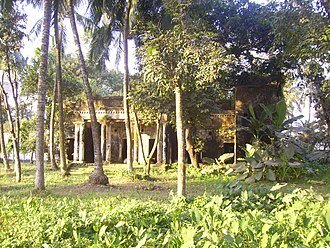
In 1958, S. D. Burman gave music for Kishore Kumar's house production Chalti Ka Naam Gaadi. The same year, he was awarded the Sangeet Natak Akademi Award for his compositions in Sujata and remains the only music director to have won this prestigious award. S. D. Burman often took inspiration from folk music, Hindustani classical music as well as the more mundane day to day sounds of life. For example, in a later interview, he discussed how he had composed the Kala Pani tune for the Majrooh Sultanpuri / Md. Rafi / Dev Anand song "Hum bekhudi mein tum" based upon the Hindustani Raga "Raag Chayyanat" and the Muslim Muezzin's call for prayers that one hears daily near a mosque.
1960s
Early on in his career, Burman refused to allow his voice to be lip-synced on film by actors;as a result, even later on, in Hindi cinema, his thin yet powerful voice was often used as bardic commentary to haunting results, as in "O Re Majhi Mere Sajan Hai Us Paar" from Bandini (1963), "Wahan Kaun Hai Tera" from Guide (1965), and "Saphal Hogi Teri Aradhana" from Aradhana (1969), for which he received the National Film Award for Best Male Playback Singer in 1970.
Ill health caused a slump in his career in the early 1960s, but he gave many hit films in the late 1960s. In 1961, Burman and Lata Mangeshkar came together during the recording of R.D. Burman's first song for the movie Chhote Nawab (1961). They reconciled their differences and started working again in 1962.
The Dev Anand-S. D. Burman partnership, under the Navketan banner, continued to churn out musical hits like Bombai Ka Babu (1960), Tere Ghar Ke Samne (1963), Guide (1965) and Jewel Thief (1967). In 1963, he composed the soundtrack of Meri Surat Teri Aankhen (1963), in which Manna Dey sang the song "Poocho Na Kaise Maine" in raga Ahir Bhairav. This song was inspired by the song "Arun kanti ke go yogi", a masterpiece that was created by Bidhrohi Kabi Kazi Nazrul Islam and a Ustad Mushtaq Hussain Khan's Khayal which was based on raga Ahir bhairav (morning ragaa). That movie also had a song "Nache Mon Mora Magan", sung by Mohammad Rafi; these became landmarks in Hindi film songs.
Other S. D. Burman hits from this period were Bandini (1963), Ziddi (1964), and Teen Devian (1965). In Bandini, Sampooran Singh (well known as Gulzar), made his debut as a lyricist with the song "Mora Gora Ang Lai Le", though the other songs were written by Shailendra. Guide (1965) starring Dev Anand, was probably the best[citation needed] of his work during the time with all the songs super-hits as well as the film; however, it did not receive the Filmfare Award in the best music director category for that year, which remained always a discussion among the Bollywood film pandits.
Aradhana (1969) is considered another landmark score in Bollywood history. The music of the movie shaped the careers of singer Kishore Kumar, lyricist Anand Bakshi and filmmaker Shakti Samanta. According to the director Shakti Samanta, originally, Mohammed Rafi was supposed to have sung all the songs in the film (he sang only two song), but he was on 2 month long tour and they didn't want to wait for 2 months. So, he suggested Burman to use Kishore Kumar instead as Rajesh Khanna was a newcomer and he agreed. All the songs became chartbuster which made Kishore Kumar an overnight sensation.
Reference For the song "Mere Sapno ki raani", Sachin Dev made R. D. play the mouth organ.[citation needed] Dev Anand and S. D. Burman continued their musical partnership in Prem Pujari
Mehdi Hassan
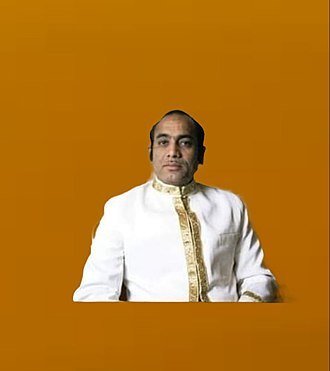
Mehdi Hassan Khan NI PP HI (Urdu: مہدی حسن خاں) 18 July 1927 – 13 June 2012) was a Pakistani ghazal singer and playback singer for Lollywood. Widely considered one of the greatest and most influential figures in the history of ghazal singing, Hassan is referred to as the "Shahenshah-e-Ghazal" (Emperor of Ghazal). Known for his "haunting" baritone voice, Hassan is credited with bringing ghazal singing to a worldwide audience. He is unique for his melodic patterns and maintaining integrity of the ragas in an innovative way.
Born into a family of Kalawant musicians, Hassan was naturally inclined towards music from a young age. He influenced generations of singers from diverse genres, from Jagjit Singh to Parvez Mehdi.He earned numerous awards and accolades during his lifetime and remained a leading singer of Pakistani film industry along with another contemporary playback singer Ahmed Rushdi, and it is estimated that Hassan sang for over 300 films during his career. For his contributions to the arts, Hassan was awarded with the Nishan-e-Imtiaz, Tamgha-e-Imtiaz, Pride of Performance, and Hilal-e-Imtiaz by the Government of Pakistan.
In 1957, Hassan was again given the opportunity to sing on Radio Pakistan, primarily as a thumri singer and later as a ghazal performer, which earned him recognition within the musical fraternity. He had a passion for Urdu poetry, and therefore, he began to experiment by singing ghazals on a part-time basis. He cites radio officers Z.A. Bukhari and Rafiq Anwar as additional influences in his progression as a ghazal singer. He first sang on Radio Pakistan in 1952.
His first film song was "Nazar Milte Hi Dil Ki Bat Ka Charcha Na Ho Jaye" film Shikhar in 1956. This song was written by poet Yazdani Jalandhari and its music was composed by Asghar Ali M. Husain. In 1964, his ghazal for a film Farangi, "Gulon mein rang bharay, baad-e-naubahar chale" written by renowned Pakistani poet Faiz Ahmed Faiz and composed by Rasheed Attre, gave him a major breakthrough into the Pakistani film industry and he never looked back after that. Even the original ghazal poet Faiz Ahmed Faiz stopped reciting it in his 'mushairas' (poetry reciting events) and, instead, recommended that the audience ask Hassan to sing it for them because the poet jokingly used to say that the ghazal belonged to Hassan after its popularity.
In October 2010, HMV Label released "Sarhadein" in which his first and last duet song Tera Milna featuring Hassan and Lata Mangeshkar was released. This song was composed by Hassan and written by Farhat Shahzad. Hassan recorded it in Pakistan in 2009, and Mangeshkar later heard the track and recorded her part in India in 2010, and the song was later mixed for a duet. The same duet was also sung by Hassan and Noor Jehan.
Following a severe illness in the late 1980s, Hassan cut back on his singing, eventually stepping down from playback singing altogether.[18] Later, due to the severity of his illness, he completely departed from music.
Nusrat Fateh Ali Khan- Classical
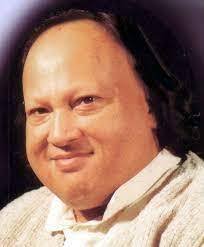 Ustad Nusrat Fateh Ali Khan PP (Punjabi: نصرت فتح علی خان; born Pervez Fateh Ali Khan; 13 October 1948 – 16 August 1997) was a Pakistani Punjabi singer, songwriter, and music director. He was primarily a singer of qawwali — a form of Sufi devotional music. Often referred to as "Shahenshah-e-Qawwali" (the King of Kings of Qawwali), he is considered by The New York Times to be the greatest Sufi singer in the Punjabi and Urdu languages and one of the greatest qawwali singers in history. He was described as the fourth greatest singer of all time by LA Weekly in 2016. He was known for his vocal abilities and could perform at a high level of intensity for several hours.Khan is widely credited with introducing qawwali music to international audiences.
Ustad Nusrat Fateh Ali Khan PP (Punjabi: نصرت فتح علی خان; born Pervez Fateh Ali Khan; 13 October 1948 – 16 August 1997) was a Pakistani Punjabi singer, songwriter, and music director. He was primarily a singer of qawwali — a form of Sufi devotional music. Often referred to as "Shahenshah-e-Qawwali" (the King of Kings of Qawwali), he is considered by The New York Times to be the greatest Sufi singer in the Punjabi and Urdu languages and one of the greatest qawwali singers in history. He was described as the fourth greatest singer of all time by LA Weekly in 2016. He was known for his vocal abilities and could perform at a high level of intensity for several hours.Khan is widely credited with introducing qawwali music to international audiences.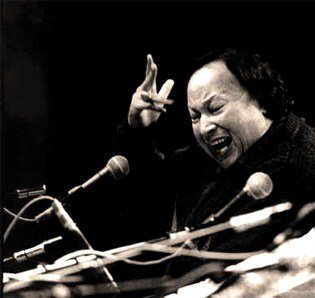
Born in Lyallpur (Faisalabad), Khan had his first public performance at the age of 15, at his father's chelum. He became the head of the family qawwali party in 1971, and brought his unique style of sargam, khayal, and rhythm to his family's legacy. He was signed by Oriental Star Agencies, Birmingham, England, in the early 1980s. Khan went on to release movie scores and albums in Europe, India, Japan, Pakistan, and the U.S.
He engaged in collaborations and experiments with Western artists, becoming a well-known world music artist. He toured extensively, performing in over 40 countries.[13] In addition to popularising qawwali music, he also had a big impact on contemporary South Asian popular music, including Pakistani pop, Indian pop, and Bollywood music.
Early life and career
Khan was born into a Punjabi Muslim family family in Lyallpur (modern-day Faisalabad), Punjab, Pakistan, in 1948. His family originates from Basti Sheikh Darvesh, who settled in Jalandhar, Punjab in present-day India.
His ancestors learned music and singing there and adopted it as a profession.[19] He was the fifth child and first son of Fateh Ali Khan, a musicologist, vocalist, instrumentalist, and qawwal. Khan's family, which included four older sisters and a younger brother, Farrukh Fateh Ali Khan, grew up in central Faisalabad.
The tradition of qawwali in the family had passed down through successive generations for almost 600 years. Initially, his father did not want Khan to follow the family's vocation. He had his heart set on Nusrat choosing a much more respectable career path and becoming a doctor or engineer because he felt qawwali artists had low social status. However, Khan showed such an aptitude for and interest in qawwali, that his father finally relented.
In 1971, after the death of his uncle Mubarak Ali Khan, Khan became the official leader of the family qawwali party and the party became known as Nusrat Fateh Ali Khan, Mujahid Mubarak Ali Khan & Party.
Khan's first public performance as the leader of the qawwali party was at a studio recording broadcast as part of an annual music festival organized by Radio Pakistan, known as Jashn-e-Baharan.
Khan sang mainly in Urdu and Punjabi and occasionally in Persian, Braj Bhasha, and Hindi. His first major hit in Pakistan was the song Haq Ali Ali, which was performed in a traditional style and with traditional instrumentation. The song featured restrained use of Khan's sargam improvisations.
Later career
In the summer of 1985, Khan performed at the World of Music, Arts and Dance (WOMAD) festival in London.He performed in Paris in 1985 and 1988. He first visited Japan in 1987, at the invitation of the Japan Foundation. He performed at the 5th Asian Traditional Performing Art Festival in Japan. He also performed at Brooklyn Academy of Music, New York, in 1989, earning him admiration from the American audience.
Khan, throughout his career, had great understanding with many south Asian singers such as Alam Lohar, Noor Jehan, A. R. Rahman, Asha Bhosle, Javed Akhtar, and Lata Mangeshkar.
In the 1992 to 1993 academic year, Khan was a Visiting Artist in the Ethnomusicology department at the University of Washington, Seattle, Washington, United States.
In 1988, Khan teamed up with Peter Gabriel on the soundtrack to The Last Temptation of Christ, which led to Khan being signed to Gabriel's Real World label. He would go on to release five albums of traditional qawwali through Real World, along with the more experimental albums Mustt Mustt (1990), Night Song (1996), and the posthumous remix album Star Rise (1997).
In 1989, commissioned by Oriental Star Agencies Ltd in Birmingham UK, Khan collaborated at Zella Recording Studios with composer Andrew Kristy and producer Johnny Haynes on a series of 'fusion' tracks which propelled Nusrat Fateh Ali Khan and Party into the Channel 4 Christmas Special of "Big World Café." While in the UK in 1989, Khan and party performed Sikh devotional music at a Sikh Gurdwara in Slough, continuing a tradition of Muslims performing hymns at Sikh temples.
Further to this in 1990, the BBC devoted an entire program on Network East to this collaboration, and Big World Café subsequently invited Khan, Andrew Kristy and violinist Nigel Kennedy to perform Allah Hoo live on the show. A live UK tour containing these new fusion tracks was made in 1990.
Khan's experimental work for Real World, which featured his collaborations with the Canadian guitarist Michael Brook, spurred on several further collaborations with a number of other Western composers and rock musicians. One of the most noteworthy of these collaborations came in 1995, when Khan grouped with Pearl Jam's lead singer Eddie Vedder on two songs for the soundtrack to Dead Man Walking.
Khan also provided vocals for The Prayer Cycle which was put together by Jonathan Elias, but died before the tracks could be completed. Alanis Morissette was brought in to sing with his unfinished vocals. In 2002, Gabriel included Khan's vocals on the posthumously released track "Signal to Noise" on his album Up.
Khan's album Intoxicated Spirit was nominated for a Grammy Award for Best Traditional Folk Album in 1997. That same year, his album Night Song was also nominated for a Grammy Award for Best World Music Album.
Khan contributed songs to, and performed in, several Pakistani films. Shortly before his death, he composed music for three Bollywood films, which includes the film Aur Pyaar Ho Gaya, in which he also sang for "Koi Jaane Koi Na Jaane" on-screen with the lead pair, and "Zindagi Jhoom Kar."
He also composed music for Kartoos where he sang for "Ishq Da Rutba", and "Bahaa Na Aansoo", alongside Udit Narayan. He died shortly before the movie's release. His final music composition for Bollywood was for the movie Kachche Dhaage where he sang in "Iss Shaan-E-Karam Ka Kya Kehna." The movie was released in 1999, two years after his death.
The two singing sisters of Bollywood, Asha Bhosle and Lata Mangeshkar sang for the songs he composed in his brief stint in Bollywood. He also sang "Saya Bhi Saath Jab Chhod Jaye" for Sunny Deol's movie Dillagi. The song was released in 1999, two years after Khan's death.
He also sang "Dulhe Ka Sehra" from the Bollywood movie Dhadkan which was released in 2000. Khan was used by Imran Khan to source funds for his Cancer Hospital as told by Appo G, his eldest of four sisters.
Khan contributed the song "Gurus of Peace" to the 1997 album Vande Mataram, composed by A. R. Rahman, and released to celebrate the 50th anniversary of India's independence.
As a posthumous tribute, Rahman later released an album titled Gurus of Peace which included "Allah Hoo" by Khan. Rahman's 2007 song "Tere Bina" for the film Guru was also composed as a tribute to Khan.
About indian classical raagas (hINDUSATNI)
What is a Raga?
Overview:
A Raga is the basic melodic form used in Indian Classical Music, both Hindustani and Carnatic styles. It is a complex idea that can be dealt with at various levels from philosophical to technical. As a musical entity, it can be described as having certain characteristics and following certain rules. However, it is much more than just the sum of those characteristics.
At the most simple level, a Raga can be said to be a melodic form having a fixed set of musical notes (swaras) that are used in an ascending (aaroha) and descending (avaroha) scale. However, by itself this is insufficient to define a Raga.
Definition:
The definition of a Raga as given by ancient texts and explained by Pt. V. N. Bhatkhande is:
योऽयं ध्वनि-विशेषस्तु स्वर-वर्ण-विभूषित: ।
रंजको जनचित्तानां सः रागः कथितो बुधै: ।।
"Yoyam Dhwani Visheshastu Swarvarna Vibhushitah
Ranjako Janchittanam Sah Ragah Kathito Budhaih"
A composition of sound which pleases people's hearts and which is ornamented by swaras and varnas, such a composition is called a Raga by the wise.
Here, swaras mean musical notes. Varnas are described as melodic movement of one of the following types:
- Sthaayi Varna - in which a swara is repeated or keeps coming back to a swara after moving to adjecent or nearby swaras.
- Aarohi Varna - ascending movement
- Avarohi Varna - descending movement
- Sanchari Varna - a combination of aarohi and avarohi varnas
The widely accepted rules for a Raga are:
It must use at least 5 swaras.
- One of these must be the base swara Sa.
- At least one swara from each of the following pairs must be used - Re & Ga, Ma & Pa, Dha & Ni.
- Both variants of a swara, i.e. natural (shudhha) and flat (komal) / sharp (teevra), cannot be used consecutively.
- It must have an aesthetic appeal.
Swaras:
- One swara, called vaadi, which is more predominant than other swaras in the Raga.
- Another swara, called samvaadi, which is more predominant than other swaras but less than the vaadi. (For completeness, the other swaras used in the raga are called anuvaadi, while the swaras not used are called vivaadi.)
- A few swaras, called nyaasa swaras, which can be elongated or rested upon during performance (i.e. performed for a longer duration).
- The ascending movement, called aaroha, which uses either 5, 6 or 7 swaras. The movement may use swaras in a serial ascending order or involve a short descending movement before ascending again.
- Similarly, the descending movement, called avaroha, which uses either 5, 6 or 7 swaras. The movement may use swaras in a serial descending order or involve a short ascending movement before descending again. Number of swaras in avaroha need not be the same as in aaroha.
- A characteristic phrase, called pakad, which is frequently repeated.
- A Raga may use predominantly first half of the octave (purvaanga pradhaan) or second half (uttaraanga pradhaan).
- A Raga is generally associated with a time of the day in Hindustani music. However, this is not so in Carnatic music.
How to distinguish between different Ragas?
Based on the above, it should be possible to identify and distinguish between different Ragas if one knows the swaras and other characteristics of those Ragas.
In practice, however, this is not always so. This is because:
- More than one Raga may have the same swaras.
- Many musicians differ on which swaras are the vaadi / samvaadi of a Raga. Some musicians, mostly from the more traditional Dhrupad form of ICM, do not even accept the existence of vaadi / samvaadi swaras.
- In an actual performance, the performer may choose not to give too much predominance to the vaadi / samvaadi swaras.
- The pakad is not defined for many Ragas.
- Even where defined, the performer may choose not to repeat the pakad frequently. In some cases, the pakad is not even present in a composition.
- Versatile performers occassionally use vivaadi swaras in a Raga performance to demonstrate how it is possible to use these swaras without harming the character of the Raga.
Although there are 12 swaras in an octave, sound is not limited to these 12 frequencies. There are an infinite number possible microtones between these swaras. However, the human ear cannot make out very subtle differences between sounds of different frequencies, and not all such sounds are musically usefull.
ICM defines 22 such musically usefull sounds, called Shrutis, in each octave (saptak).
Traditional musicians often refer to Swar Bhed, by which they mean very subtle shades of a swara. These subtle differences go well beyond Shrutis; according to some musicians there are 84 such shades in a saptak (i.e. 7 shades per swara). However, it requires a trained ear to be able to differentiate between such subtle differences.
Another term used by musicians is uchchaaran, which literally means pronunciation. In musical context, it means the manner in which a swara is used in a Raga..Accomplished musicians use these subtle variations to not only ornament a Raga, but also to define and distinguish between different Ragas. It is usually possible to identify most commonly performed Ragas from the first 2 or 3 swaras used by such a musician, based on these subtle variations. However, it requires a certain amount of training to be able to pick up these finer nuances.
Why is a Raga sung during a specific time of the day?
Hindustani music associates Ragas with specific times of the day, although there are many Ragas that are not associated with a specific time. However, Carnatic music does not specify such associations. Therefore it is is said that this association between Raga and specific time of day was not prevalent in earlier times and must have started after the two forms (Hindustani & Carnatic) emerged as separate forms of ICM.
This association probably started when musicians and listeners found that certain Ragas are better performed and give greater pleasure during certain times of the day compared to others. This could have been due to changes that occur in the human body, mind and emotions as the day progresses. The emotions of a farmer getting up early morning after a good night's rest are not the same as that of one returning home after a hard day's work in the field. Since a Raga seeks to give pleasure by acting on human emotions, it stands to reason that the different Ragas would give greater pleasure at certain times.
Over centuries, this became a part of tradition and we are now accustomed to hearing Ragas at specific times. Hence today, when the social and environmental factors have changed substantially, we still associate Ragas with specific times.
Certain rules have been formed which help determine this association. However, these rules seem to be explanations derived from practice instead of being enforced as rules.
Is there anything similar to a Raga in Western Classical Music?
Raga is often referred to as being equivalent to Western music scale or mode. I understand that there are certain similarities between them but they are not really equivalent terms. My lack of knowledge of Western Classical music prevents me going into greater details.
Sometimes, a Raga is also compared as being similar to a tune. However, it is much more than a tune. Many different tunes can be formed within the same Raga. A Raga also goes beyond being a "generalized tune".
Summary:
From the above, we can see that a Raga is a melodic form which has certain characteristics and which follows certain rules and which provides pleasure to the listeners.
However, it is often not possible to recognize a Raga based on these characteristics. That is why a Raga is considered to be a complex idea, an understanding of which can be obtained only by listening often to Raga music.
Probably this is why gurus and musicians give far greater importance to "preparing the ears" by repeatedly and frequently hearing music rather than to the theoretical aspects of what constitutes a Raga.
Understanding a Raga Performance
What is actually happening during a raga performance? What are the different parts of the performance? How can you tell a good performance from a bad one? Where can you find great raga performances? This page addresses questions of this nature and offers classical music appreciation tips as well as resources for new and seasoned audiences.
The Structure of a Raga Performance
In more leisurely times (barely a few decades ago), raga performances were intimate events that would go on for hours on end. In many small towns, where performances are organized in informal settings and private homes, this is still true. Formal concert-hall performances, however, are much shorter these days, even full-length performances lasting only an hour or two.
Raga performances typically start out slow and gradually increase in tempo to reach a breathtakingly rapid climax. The structure of a performance varies from school to school and even from artist to artist. The audience, the occasion, time constraints and other factors also influence how a performance is structured and how much time is devoted to which part of the performance. However, there are some basic elements that are similar across most full-length raga performances.
The first part of a raga performance is usually free improvisation without a composition or tabla accompaniment. This section is called alap (meaning prelude) and can be further divided into vistar, jod and taan (see table below). The alap is followed by the second part, where structured improvisation takes place around compositions (bandish) with tabla accompaniment. Usually, this includes at least two compositions, a medium-tempo composition and a rapid one.
In some schools of Hindustani music, the alap is replaced by elaborate structured improvisation around a slow composition, which takes on the role that would otherwise be played by the vistar, jod, and taan.
ABOUT Indian CLASSICAL Music Glossary (HINDUSTANI)
Achal - Achal Swaras are the fixed swaras of the seven musical notes. Sa and Pa are the achal swaras of the Indian classical music.
Arohi - The term Arohi, also known as Arohana and Aroh, is used to define the ascending melody in music.
Avirbhav - Avirbhav is that technique of presenting the raga, in which the raga is noticeably expanded and exhibited. It is a bhavbhavna and how it is exibited.
Abhoga - The last stage of a musical composition, especially in the Drupad music.
Alaap - Alaap is the free flow of the Raga, in which there are no words and no fixed rhythm. It is the purest from of melody.
Andolan - Andolan refers to a slow alternation between the notes and shrutis that are next to each other. (Vibration)
Ang - The term 'Ang' refers to the root to which a particular raga belongs. For example, Tantrakari Ang (instrumental style of music)
Alankar - Alankaras are those notes and features that differentiate one raga from the other.
Antar Gandhar - One of the variable forms of the third note 'Ga' of Indian Classical Music.
Antara - Antara is the second stage of a musical composition that emphasizes the upper half of the octave-range.
Antya - Antya is the last section of a musical composition, after which the recital ends.
Anuvadi - Those notes of a raga that are neither highlighted nor downplayed are known as Anuvadi notes.
Asthai - Asthai is the first as well as the fundamental part of a composition, which is repeated during the entire alaap.
Asthan - The octave region of a raga is known as its Asthan. For example, the lower octave region is known as the Mandar Asthan.
Ati - The term Ati refers to an extreme in a raga. For example, Ati Vilambit Laya means extremely slow tempo.
Audava - Audava is a raga that has only five notes i.e. 'Paanch Swaras'.
Avarohi - The term Avarohi, also known as Avarohana and Avaroh, is used to define the descending melody in music.
Bhajan - A devotional song eulogizing Indian Gods and Goddesses. Sung in light classical style, it is usually set to 6, 7 or 8 beat cycles.
Bol - The term 'Bol' refers to the words making up a vocal composition.
Carnatic - Ancient classical music of South India is known as Carnatic Music
Chakra - As per the Melakarta table of raga classification, Chakras are the twelve groups according to which the ragas are categorized.
Chalan - Chalan is the makeup of a musical composition, which embodies the movement of a particular raga.
Chautalaa - Chautalaa is the musical cycle that consists of fourteen beats.
Dadra Tal - Dadra Tal is the common cycle in the lighter forms of music, comprising of six or three beats.
Deepchandi Tal - Deepchandi Tal is the tabla composition with fourteen beats
Dhamar Tal - Dhamar Tal is the fourteen beat Tal that has a '5+2+3+4' vibhag pattern.
Dhaivata - Dhaivata is the sixth of the seven swaras or notes of the Indian classical scale.
Drut - Drut is the term denoting the fast tempo or speed of the Tal.
Ektal - Ektal is that Tal of the Indian classical music in which the 12 matras are divided into 6 vibhags, each of them having two matras.
Gandhar - Gandhar is 'Ga', the third musical note of Indian Classical Music.
Gayaki - Gayaki is one of the several styles of singing.
Geet - Geet is the Indian term for a song or composition.
Ghazal - Ghazal is a poetic-cum-musical form of Hindustani light music, with Persian and Urdu poetic influences.
Grama - Gramas are the basic notes employed in musical tradition. Initially there were three Gramas - Shadaja, Madhyama and Gandhar.
Hindustani - Hindustani Classical Music is the form of Indian classical music that developed in northern parts of India.
Jati - Jati refers to the classification of musical compositions as per the tones.
Jhaptal - Jhaptal is an Indian rhythmic form with a ten-beat cycle.
Jhumra Tal - Jhumra Tal is a slow Indian rhythmic form of 14 (3+4+3+4) beats.
Kan - Kan is the grace note of a musical composition.
Keharwa Tal - Keharwa Tal is the one of the rhythms of the Indian classical music, which has an eight beat cycle.
Komal - The flat form of a note or swar in the classical music of India.
Kriti - Kriti is a format of a musical composition that characterizes the Carnatic form of music.
Lakshan - An introduction to the ragas is known as Lakshan. It comprises of a set of rules and principles
Laya - Laya can be described as the tempo or speed of the Tal.
Madhya Saptak - The basic saptak, with middle octave region, is known as the Madhya Saptak.
Madhya Laya - Madhya Laya is the medium tempo or speed of the Tal.
Madhyama - Madhyama is 'Ma', the fourth musical note of Indian Classical Music.
Mandra - Mandra refers to the lower scale notes of the raga, written with dots underneath them.
Meend - Meend is an unbroken flow of a musical progression, from higher to lower notes.
Mela - Mela is the basic organization of the notes in aroha and avaroha melody.
Mishra - A Mishra melody is that melody which has features of more than one raga. "
Mridangam - Mridangam is a drumming instrument, used in the Carnatic music of South India.
Nada - The raga or musical notes in music are known as nada vibrations. There are basically Two types of Nadas - Ahata (struck) and Unahata (un-struck).
Nada Brahma - The concept of Nada Brahma means that the whole universe was created from the energy of sound.
Nataka - Nataka is the Hindi term used for defining a theater performance.
Nyasa - Nyasa is the last note of a specific phrase of notes, which leads to its ending.
Nishadha - Nishadha is 'Ni', the seventh musical note of Indian Classical Music.
Pakad - Pakad is the catch phrase of note combinations, which normally comprises of five notes. It characterizes the flow of a raga.
Panchama - Panchama is 'Pa', the fifth musical note of Indian Classical Music.
Pandit - Pandit is a term of respect, used to refer to the masters or scholars in the field of Indian Classical Music.
Poorvang - The lower region of an octave, from Sa to Ma (Sa Re Ga Ma) is known as the Poorvang.
Prati - The term Prati is used to define a sharp musical note i.e. a musical note that is higher in pitch by a semitone.
Raga - Raga is the basic organization of the thirteen musical notes in a composition, as per specific rules.
Ragini - Ragini is the feminine form of raga. It is usually described as a summary of the main theme of the melody.
Rasa - Rasa is the term used to define the emotional state or quality of the raga and ragini. There are nine rasas in classical music.
Rasik - Rasik is name given to the composer of a Rasa.
Rishabha - Rishabha is 'Re', the second musical note of Indian Classical Music.
Rupak Tal - Rupak Tal is an Indian rhythmic form, which comprises of seven beats.
Sanchari - Sanchari is the third subsection of a musical composition that comprises of all the regions of the octave.
Sangeet - Sangeet is the Hindu term used to define music.
Sampooran - Sampooran ragas are those ragas that comprise of all the seven notes.
Samvadi - Samvadi is the second most important class into which the notes in the basic musical gamut are divided.
Sandhi Prakash - The ragas that are performed during the hours of twilight or dusk are called Sandhi Prakash Ragas.
Saptak - Saptak means the set of seven swars or seven notes of the Indian Classical Music.
Sargam - Sargam is the term used to define the scale of notes used in the composition of music.
Shadaja - Shadaja is 'Sa', the first musical note of Indian Classical Music.
Shastra - Shastra is the treatise or text that explains the timeless rules and principles behind music.
Shaudava - Shaudava Raga is the raga that comprises of six notes in its ascending or descending movement.
Shruti - Shruti is the sound interval between recognized notes or swaras.
Shudha - The pure and natural notes or swaras are known as Shudha Swaras.
Swara - Swaras are the musical notes of a composition.
Swaroop - The term Swaroop refers to the image of a raga.
Tabla - Tabla is a North Indian drum set, which comprises of the Dagga (bass drum) and the Tabla (Treble drum)
Tal - Tal is a predisposed arrangement of beats, in a certain tempo
Tan - An improvised vocal or instrumental musical phrase
Tanpura - String instrument used for drone; Tanpura means to fill the void behind the music; to complete or assist a tan; a. k. a. Tamboora
Tar - Tar is a fast-paced musical and melodic amplification of vocal as well as instrumental classical music.
Tamboora - Tamboora is a musical instrument made from a gourd (Tumba). It is also known as Tanpura.
Thaat - Thaat is Pandit Bhatkande's classification of all the ragas into one of ten parent scales.
Thumri - Thumri is a form of 'light-classical' vocal music. It does not follow the tala and raga rules of music very rigidly.
Tintal (Teental) - Tintal is an Indian rhythmic tal with sixteen beats, in four equal divisions.
Tirobhav - Tirobhav basically means the process of concealing a raga on a temporary basis.
Tivra - Tivra means the highest state (pitch) of the two notes, madhyama and nishad.
Uttarang - Uttarang is the higher tetra-chord of an octave, which comprises of Pa, Dha, Ni and Sa notes.
Vadi - Vadi is the note that holds the maximum importance in a raga.
Vakra - Vakra Raga is one of the four Janya Ragas and has swaras in a non-sequential order.
Varana - The four Varanas are the four basic ways, on the basis of which musical tones are organized.
Varjit - Varjit note is the note that is deleted from the Arohi or Avarohi of its derivative Ragas.
Vikrit - Vikrit notes are the modified notes used in the raga.
Vilambit - The term Vilambit is used to denote the slow speed or tempo of the Tal.
Vivadi - Vivadi notes are those notes that are either not included in a raga or are used very rarely
ABOUT Indian CLASSICAL Music HINDUSTANI "GHARANA" (HOUSE)
In Hindustani music (North Indian classical music), a gharānā is a system of social organisation in the Indian subcontinent, linking musicians or dancers by lineage or apprenticeship, and more importantly by adherence to a particular musical style.
The word gharana comes from the Hindi word 'ghar' which is derived from the Sanskrit word Griha, which means 'house'. It typically refers to the place where the musical ideology originated; for example, some of the gharanas well known for singing khyals are: Dilli (Delhi), Agra, Gwalior, Indore, Atrauli-Jaipur, Kirana and Patiala. Four famous kathak gharanas are: Lucknow, Atrauli-Jaipur, Benares and Raigarh.
Vocal Gharanas
Khyal gharanas
The gharana system in khyal was rooted in the Guru–Shishya tradition and was similar to the Dhrupad Bani system. The gharana system was greatly influenced by the gradual fall of the Mughal Empire, which forced musicians to move from Delhi to princely states such as Gwalior, Lucknow, Hyderabad, Patiala and Rampur.
The Gharanas have distinct styles of presenting the khyal — How much to emphasize and how to enunciate the words of the composition, when to sing the sthayi and antara, whether to sing an unmetered alap in the beginning, what kinds of improvisations to use, how much importance to give to the rhythmic aspect, and so on. However, an individual performer from a gharana may choose to borrow appealing stylistic aspects of another gharana in his or her gayaki (Singing Style). There are ten prominent khyal gharanas, and they are:
Gharana Founding Artists Approximate founding date Famous Exponents Features
| Qawwal Bacchon Ka Gharana | Abu'l Hasan Yamīn ud-Dīn Khusrau & His 12 Student's | 13th Century | Amir Khusrau Mir Bula Kalawant , Mir Hassan Sawant, Mir Gunwant, Shah Sadarang, Shah Adarang, SheikhFiroz (Shah Bhikan) Taj Khan (Rang Rus) Sheikh Ajmal (Miyan Achpal) Mir Qutub Baksh (Miyan Tanras) Haji Muhammed Siddiq Khan, Muzaffar Khan | The Qawwal Bacchon Ka Gharana is the oldest khayal gharana of the Hindustani Classical music tradition.[2] Members of this gharana approach raagdari with more freedom than the dhrupad-informed gharanas, like Gwalior, Jaipur, and Agra.[3] Emphasis on bhav and exposition are the hallmarks of this style.[4] Repertoire |
| In addition to extensive khayal compositions, the gharana is known for its qawwals. | ||||
| Dilli gharana | Hazrat Amir Khusrau, Miyan Samti | 13th century | Sadarang, Adarang, Miyan Achpal, Tanras Khan, Mamman Khan, Chand Khan, Nasir Ahmed Khan, Krishna Bisht, Iqbal Ahmed Khan | Oldest Khayal gharana, wide range of taans,bol baant,bol taan,fast taan pattern, gamak taan, emphasis on melody and laykari, structured badhat of raga |
| Gwalior gharana | Nathan Pir Baksh, Hassu Khan, Haddu Khan, Nathu Khan | Mid 16th Century | Vishnu Digambar Paluskar, Omkarnath Thakur, Ghulam Hassan Shaggan, D. V. Paluskar, Pt Raja Bhaiya Poochwale, Pt. Balasaheb Poochwale, Sunanda Patnaik, Malini Rajurkar, Veena Sahasrabuddhe, N Rajam | The most noticeable trait of this gharana is overemphasis on gamaks in taans, as well as use of Bol-baant, bol-taan, no use of sargam, wide range in taans, alankarik taans, descending sapaat taans, roughly similar emphasis on melody and rhythm, preference for simple (as opposed to compound) ragas, repertoire of bandishes, variety of taans |
| Agra gharana | Ghagge Khudabaksh | Mid-19th century | Faiyaz Khan, Vilayat Hussain Khan, Sharafat Hussain Khan, Jitendra Abhisheki | Closer to dhrupad with nom-tom type alap and other elements, rhythmic play, frequent use of tisra jati in teentaal, emphasis on voice culture to achieve wide range and powerful throw of voice, bol-baant, bol-taan, rare use of sargam, slower taans, use of jabda taan, repertoire of traditional and self-composed bandishes |
| Kirana gharana | Abdul Karim Khan, Abdul Wahid Khan | Late 17th century | "Proudh Gandharva" Pandit Vishwanathbuwa Jadhav, Pandit B. V. Jadhav , Pandit R. V. Jadhav, Smt. Shakuntlaraje R. Jadhav, Pandit P. V. Jadhav Sawai Gandharva, Bhimsen Joshi, Prabha Atre, Hirabai Barodekar, Gangubai Hangal Amir Khan (Highly Influenced from Kirana Gharana) | Kirana is often considered to be the flag-bearer of Hindustani Classical vocal music. Foremost intention of this gharana is perfect intonation of notes and emphasis on melody, Also, Slow-tempo raga development, long and sustained pitches, usually traditional ragas, use of sargam, very little bol-baant, clarity of text pronunciation, use of some Carnatic ragas and raga features, emphasis on vocal as opposed to instrumental form. Highly decorative and complex taans. |
| Bhendibazaar gharana | Chhajju Khan, Nazeer Khan, Khadim Hussain Khan | Late 19th century | Aman Ali Khan, Anjanibai Malpekar Amir Khan (Highly Influenced from Bhendibazar Gharana) | Emphasis on breath control to be able to sing long passages in a single breath, use of merukhand for extended alaps, use of gamak taan and sargam, use of some Carnatic ragas |
| Jaipur-Atrauli gharana | Alladiya Khan | Late 19th century | Kesarbai Kerkar, Mogubai Kurdikar, Mallikarjun Mansur, Kishori Amonkar, Ashwini Bhide-Deshpande | Repertoire of rare and complex ragas, based on Agra gharana, use of aakaar for badhat, heavy use of teentaal, rupak, jhaptaal and ada-chautaal, rhythmic play, use of bol-baant and bol-taan, rippling taans, heavy emphasis on taans |
| Patiala gharana | Bade Fateh Ali Khan, Ali Baksh Khan | Late 19th century | Bade Ghulam Ali Khan, Fateh Ali-Amanat Ali Khan, Vasantrao Deshpande, Jagdish Prasad, Sandhya Mukherjee, Prasun Banerjee, Meera Banerjee, Ajoy Chakrabarty | Patiala is often considered to be the amalgamate of few pre-existing gharanas and has claimed to combine the musical traditions of Delhi gharana, Gwalior gharana and Jaipur-Atrauli Gharana and is known for borrowing elements from other gharanas. This Gharana is also known for its versatility, not only known for its Khayal singing but also for venturing into other forms of classical music and placing a strong foothold there as well. Emphasis on voice development, roughly similar emphasis on melody and rhythm, bol-baant-like sargam with occasional tonic transpositions, occasional use of bol-taan, variety of taans, fast sargam and taan patterns, may or may not include antara, influence of tappa style |
| Rampur-Sahaswan gharana | Inayat Hussain Khan | Mid 19th century | Mushtaq Hussain Khan, Rashid Khan (musician), Nissar Hussain Khan, Ghulam Mustafa Khan (singer), Ghulam Sadiq Khan, Ghulam Abbas Khan | Emphasis on melody, bol-taans, sargam taans, highly varied aakar taans and good hold over laykari, along with strong command over Tarana |
| Indore gharana | Amir Khan | Mid 20th century | Slow-tempo and leisurely raga development, improvisation mostly in lower and middle octaves, tendency towards serious and expansive ragas, emphasis on melody, judicious use of pause between improvisations, bol alap and sargam using merukhand patterns, sparing application of murki, use of kan swaras in all parts of performance, controlled use of embellishments to preserve introspective quality, rare use of tihai, careful enunciation of text, may or may not include antara, multiple laya jatis in a single taan, mixture of taan types in a single taan, known for ruba'idar Tarana (considered similar to chhota khyal) | |
| Mewati gharana | Ghagge Nazir Khan | Mid 19th century | Jasraj, Kala Ramnath, Sanjeev Abhyankar | Emphasis on melody, known for bhajans, sapaat taans and gamak taans, use of sargam |
| Sham Chaurasia gharana | Miyan Chand Khan, Miyan Suraj Khan | Late 16th century | Salamat Ali and Nazakat Ali Khan | Emphasis on layakari using bol-taan and tihai, fast sargam and taan patterns |
| Kunwar Shyam gharana | Goswami Lalji Maharaj ("Kunwar Shyam")[6] | Late 19th century | Laxman Prasad Jaipurwale, Govind Prasad Jaipurwale, Bhavdeep Jaipurwale, Amit Chaudhuri[7] | Meend-based alap, intracate taan patterns and laykari[8] |
Dhrupad gharanas
The dhrupad tradition includes four original styles:[9]
- Dagarbani ("sadharani geeti")
- Gauharbani
- Khandarbani
- Nauharbani
- Dagar gharana, founded by the Dagar family
- Bishnupur gharana, founded by Kirtankars in West Bengal (13th century)
- Darbhanga gharana, founded in Darbhanga, Bihar
- Bettiah gharana, founded in Bettiah, Bihar
- Talwandi gharana
- Mewati gharana, founded by Wahid Khan (Beenkar) and Ghagge Nazir Khan. Descended from Khandarbani gharana.
- Kalpi gharana[10]
In the Benares gharana, the words in the text of a song are musically embellished to bring out their meaning, while the Lucknow gharana presents intricately embellished and delicate thumris that are explicit in their eroticism. The principal feature of the thumri of the Patiala gharana is its incorporation of the tappa from the Punjab region. It is with this tappa element that the Patiala gharana makes its impact, departing from the khyal-dominated Benares thumris and the dance-oriented Lucknow thumris.[11] The Benares gharana was founded by Kirtankars in the 13th century and revived by Siddheshwari Devi, Rasoolan Bai, Badi Moti Bai, Mahadev Mishra, Girija Devi (mid-20th century) and Savita Devi.[citation needed]
Instrumental gharanas
Tabla gharanas
The following are the six widely accepted gharanas (ordered based on chronology of founding):
- Delhi gharana is the oldest of the tabla gharanas
- Ajrara gharana is an offshoot of and closely associated with the Delhi Gharana
- Lucknow gharana has rhythmic development through Kathak
- Benares gharana
- Punjab gharana, popularized by Alla Rakha and Zakir Husain, developed through its original Pakhavaj repertoire
- Farrukhabad gharana is the youngest accepted tabla gharana, and an offshoot of all of the Gharanas, featuring their main concepts
| Delhi gharana | Siddhar Khan | Early 18th century | Delhi | Ghami Khan, Imam Ali Khan, Munnu Khan, Latif Ahmed Khan, Shafaat Ahmed Khan |
| Ajrara gharana | Kallu Khan, Miru Khan | Early 19th century | Ajrara | Habibuddin Khan, Mehboob Hussain Khan, Sudhirkumar Saxena, Manju Khan, Yusuf Khan, Ramjan Khan, Sarwar Sabri, Akram Khan |
| Lucknow gharana | Miyan Bakshu | 19th century | Lucknow | Ilmas Hussain Khan, Timir Roy Chowdhury, Achchan Maharaj, Anil Bhattacharjee, Biswajit Bhattacharjee, Santosh Biswas, Swapan Chaudhuri, Faiyaz Khan |
| Benares gharana | Ram Sahai | Late 18th century | Benares | Ram Sahai, Kanthe Maharaj, Anokhelal Mishra, Shamta Prasad, Kishen Maharaj, Mahapurush Mishra, Kumar Bose, Ananda Gopal Bandopadhyay, Sandeep Das |
| Farrukhabad gharana | Haji Vilayat Ali Khan | 19th century | Farrukhabad | Ustad Amir Hussain Khan,Masit Khan, Ahmedjan Thirakwa, Jnan Prakash Ghosh, Keramatullah Khan, Kanai Dutta, Shyamal Bose, Shankar Ghosh, Anindo Chatterjee, Bickram Ghosh |
| Punjab gharana | Miyan Qader Baksh | 19th century | Punjab | Qadeer Buksh, Shaukat Hussein Khan, Alla Rakha Khan, Zakir Hussain, Yogesh Samsi, Abdul Sattar Tari Khan |
Wind and string instruments
- Bishnupur gharana
- Sufiana gharana of Kashmir (Santoor)
- Etawah gharana
- Maihar gharana
- Senia gharana
- Indore gharana (Beenkar gharana)
- Atrauli-Jaipur gharana
- Mewati gharana
- Senia-Maihar gharana
- Senia-Shahjahanpur gharana
- Lucknow-Shahjahanpur gharana
- Senia-Bangash gharana
Main article: Kathak § Gharanas
In Kathak performers today generally draw their lineage from four major schools of Kathak: the Jaipur-Atrauli gharana, the Lucknow gharana, the Benares gharana (born in the courts of the Kachwaha Rajput kings, the Nawab of Oudh, and Varanasi respectively.) and the Raigarh gharana (born in the court of Maharaja Chakradhar Singh of Raigarh.)
The Lucknow gharana remains the most popular throughout the country. However, in recent time the Atrauli-Jaipur gharana has caught up and today most performers throughout India perform techniques belonging to both styles. With amalgamation of the techniques and poses from other dance forms, the purity of the movements and gestures may be diluted or modified along with the contemporary trends. Raigarh gharana is famous for its own distinctive composition and thousands of followers.
About indian classical raagas (hINDUSATNI)
- Raag Bhoop
- Raag Durga
- Raag Sarang
- Raag Des
- Raag Khamaj
- Raag Kafi
- Raag Bhimpalasi
- Raag Bageshri
This is a list of various Ragas in Hindustani classical music. There is no exact count/known number of ragas which are there in Indian classical music.
Once Ustad Vilayat Khan saheb at the Sawai Gandharva Bhimsen Festival, Pune said before beginning his performance - "There are approximately about 4 lakh ragas in Hindustani classical music. Many of them are repetitious but have different names."
Here some of the Ragas and other types that are named alphabetically.
(Following are Ragas, Raaginis, Upragas, Putra ragas, raga's wives, Das ragas, Dasi ragas, Misra ragas or Jod ragas, etc all are present in the following list in an alphabetical order)
LIST OF THE RAAGAS
- Aadi (raga)
- Aadi Basant (Marwa Thaat)
- Aarabi (raga)
- Abhari (raagini)
- Abheri Todi
- Abhiri (raagini)
- Abhogi
- Abhogi Kanada
- Achob (raga)
- Adambari Kedar (raga)
- Adana (raga)
- Adana Bahar
- Adana Malhar
- Adbhut Kalyan (raga)
- Adbhut Ranjani
- Aghali (raga)
- Ahir Bhairav
- Ahimohini (raagini)
- Ahir Kanada
- Ahir Lalat
- Ahir Lalit
- Ahiri (raagini)
- Ahiri Malhar
- Ahiri Todi
- Ajad (raga)
- Ajad Hindol
- Alamgiri (raagini)
- Amba Manohari
- Ambika Sarang
- Amari (raagini)
- Amiri Kauns (Vachaspati aang)
- Amir Khani Kauns (Vachaspati aang)
- Amrith Kalyan
- Amritvarshini (raga)
- Ananda (raga's son)
- Ananda Bhairav
- Ananda Leela
- Ananda Malhar
- Anandi (raagini)
- Anandi Bahar
- Anandi kedar
- Andhri (raga)
- Andiyali (raagini)
- Anjani Kalyan
- Anjani Todi
- Anuranjani
- Alhaiya
- Alhaiya Bilaval
- Araj (raga)
- Arun Malhar
- Asa (raga)
- Asa Bhairav
- Asa Kafi
- Asa Maand
- Asa Todi
- Asa Asavari
- Asavari (Shuddh Rishabh Asavari)
- Asavari Todi (Komal Rishabh Asavari)
- Aslekhi (raagini)
- Averi Bhairavi
- Audav (raga)
- Audav Bhairav
- Audav Bilawal
- Audav Devgiri (raagini)
- Audav Dhannasri (raagini)
- Audav Gandhar
- Audav Girija
- Audav Kauns
- Audav Shuddha Kalyan
- Badhans (raga)
- Badhamsa Sarang (Badhans Sarang)
- Bagkauns (raga)
- Bageshri / Bageshree
- Bageshri Bahar
- Bageshri Kanada
- Bageshri Kauns
- Bahaduri Todi
- Bahar
- Bahari Kedar
- Bairagi
- Bairagi Bhairav
- Bairagi Todi
- Bakul Bhairav
- Bakulabharan (raga)
- Ban (putra raga)
- Bangal (putra raga)
- Bangal Bhairav
- Bangal Bilawal
- Bangli (raagini)
- Barari (Marwa aang)
- Barari (Purvi aang)
- Barathi Todi
- Barhams Sarang
- Barahansika (raagini)
- Barwa (raga)
- Basant
- Basant Bahar
- Basant Pancham
- Basant Hindol
- Basant Kedar
- Basanta Mukhari
- Basanti (raagini)
- Basanti Kanada
- Basanti Kauns
- Basanti Kedar
- Bayati
- Bhairav
- Beehad (raga)
- Beehad Bhairav
- Bhairav Bahar
- Bhairav Bhatiyar
- Bhairavi
- Bhankhar
- Bhankhari
- Bhaskali
- Bhasker (putra raga)
- Bhatiyar (Marwa aang)
- Bhatiyar (Purvi aang)
- Bhatiyari (raagini)
- Bhatiyari Bhairav
- Bhatiyari Gauri
- Bhavmat (raga)
- Bhavmat Bhairav
- Bhav Kauns
- Bhavsakh
- Bhavsakh Kanada
- Bhavana pancham (upraga)
- Bhawani (raga)
- Bhawani Bahar
- Bhilalu
- Bhim (Kafi Thaat)
- Bhimsen
- Bhimpalasi
- Bhinna Bhairav
- Bhinna Kauns
- Bhinna Lalat
- Bhinna Rageshri
- Bhinna Shadja
- Bhookosh (raga)
- Bhora (putra raga)
- Bhup/Bhoopali
- Bhoopal (bhairav Thaat)
- Bhoopal Todi
- Bhoopeshwari
- Bhup Bilawal
- Bhup Kalyan
- Bhup Nat
- Bhupawali
- Bhupkali
- Bhuplai
- Bibhas (Marwa aang)
- Bibhas (Purvi aang)
- Bibhas (Bhairav aang)
- Bibhas (Deshkar aang)
- Bibhas Parbhati
- Bihag
- Bihag Maalva
- Bihag Nat
- Bihag Pat
- Bihag Savani
- Bihagada (with N)
- Bihagada (with n, N)
- Bihagara
- Bihari
- Bihagora (raga)
- Bihagora Maalva (raga)
- Bihari (raga)
- Bilaskhani Todi
- Bilawal
- Bilawal Dakhani
- Bilawal Gond
- Bilawal Kukubh
- Bilawal Malhar (mixture of ragas Gaud Malhar and Alhaiya Bilawal)
- Bilawal Nat
- Bilawal Shukla
- Bilawali (raagini)
- Bilahari (raga)
- Binoda (putra raga)
- Biradhar (putra raga)
- Birju ki Malhar
- Brindabani Sarang
- Chaiti (raga)
- Chaiti Barwa
- Chaiti Bhup
- Chakradhar (raga)
- Chakravaak (raga)
- Chalnat
- Champak bilawal
- Champak (putra raga)
- Champakali
- Chand (putra raga)
- Chanchalsas Malhar
- Chandani (raga)
- Chandani Bihag
- Chandani Kalyan
- Chandani Kedar[1]
- Chandra Bhairav
- Chandra Bhankar
- Chandra-Bimb (putra raga)
- Chandra Kalyan
- Chandradhwani
- Chandrakant (raga)
- Chandrakauns (Agra Gharana)
- Chandrakauns (Bageshree aang)
- Chandrakauns[1]
- Chandramouli
- Chandranandan
- Chandraprabha
- Chandrika (raga)
- Charju ki Malhar
- Charukauns
- Charukeshi
- Chhaya (raga)
- Chhaya bihag
- Chhaya Gaud Sarang
- Chhaya Hindol
- Chhaya Kalyan
- Chhaya Malhar
- Chhaya Tilak
- Chhayanat[1]
- Dadori
- Dagori
- Dakshina Gujjari (raga)
- Dakshinatya (raga)
- Daras Kauns (raga)
- Darbari
- Darbari Kanada
- Darbari Todi
- Daulati (raagini)
- Dayabati
- Deepak (Bilawal Thaat)
- Deepak Kedar
- Deepawali
- Deepranjani
- Deosakh
- Deogandhara (raga's son)
- Desaa Jaldhar (raga)
- Desaa Sawan (raga)
- Desaa Sorath (raga)
- Desh
- Desh Gaud
- Desh Jogi
- Desh Malhar
- Deshakhya (raga)
- Deshi (raagini)
- Desi Devgiri
- Deshi Tilang
- Desi Todi
- Deshkar (Purvi aang)
- Deshkar (Marwa aang)
- Deshkar[1]
- Devadarshini
- Devangi
- Devkari (raagini)
- Dev Gandhar (raga) (Both Ga's in Jaunpuri)
- Dev Gandhar (Jogia aang)
- Dev Gandhar (Asavari aang)
- Devgaandhari (raagini)
- Devaranjani
- Devata Bhairav
- Devgiri Bilawal
- Devmaya
- Devkauns
- Devsag (raga)
- Devtirthi
- Dev Todi
- Dhakka (raga) (Komal Bhimpalasi)
- Dharmavati
- Dhan Basanti (Purvi aang)
- Dhanakoni Kalyan
- Dhanashri (raga)
- Dhanashri (Bhairavi aang)
- Dhanashri (Bilawal aang)
- Dhanashri (Kafi aang)
- Dhanashri (Khamaj aang)
- Dhanashri Multani
- Dhanawarchi Kalyan
- Dhani
- Dhanki
- Dhanikauns
- Dhanya Dhaivat
- Dhavalshree (raga)
- Dhulia Malhar
- Dhulia Sarang
- Dhumavati
- Din Ka Malkauns
- Divyagandhar
- Din ka Shankara
- Din ki Puriya (raagini)
- Din ki Puriya (Poorvi aang)
- Dishakh (putra raag)
- Divya Chandrika (created by Pt. Milind Date)
- Diwali (raagini)
- Dravida Gauda (raga)
- Dravida Gujjari (raga)
- Durga (raga)
- Durga (Bilawal Thaat)
- Durga (Khamaj Thaat)
- Durga Kalyan
- Durga Kedar
- Durgawati (raagini)
- Durgeshwari 1
- Durgeshwari 2
- Dwijavanthi
- Enayatkhani Kanada
- Erukalakambhoji (raga)
- Gagan Vihang (raga)
- Gajdhar (putra raga)
- Gambhir (raga)
- Gandhara (putra raga)
- Gandhari 1 (raagini)
- Gandhari 2 (raagini)
- Gandhari 3 (raagini)
- Gandhari Bahar
- Gandhakriya (raga)
- Gandhi Malhar
- Ganeshwari (raga)
- Gara (raga)
- Gara Bageshri
- Gara Kanada
- Gara Mand
- Gaud (raga)
- Gaud Bahar
- Gaud Bilawal
- Gaud Malhar[1]
- Gaud Sarang[1]
- Gaudgiri Bahar
- Gaudi (putra raga)
- Gaudi Bahar
- Gaudi Lalat
- Gaudi Malari (putra raga)
- Gaul (Bhairav Thaat)
- Gauri (raga)
- Gauri (Bhairav Thaat)
- Gauri (Kalingada aang) (2 Ma’s)
- Gauri (Marwa aang)
- Gauri (Poorvi aang)
- Gauri Bairagan
- Gauri Basant
- Gauri Chayti
- Gauri Cheti
- Gauri Dakhani
- Gauri Deepaki
- Gauri Guarairi
- Gauri Lalita
- Gauri Majh
- Gauri Mala
- Gauri Malva
- Gauri Purbi
- Gauri Purbi Deepaki
- Gauri Sorath
- Gaundkari (raagini)
- Gawati (raga)
- Girija Audav
- Girija Bhairav
- Girija Gandhar
- Girija Kauns
- Godagir (raagini)
- Gop Kamboji (Kafi Thaat)
- Gopika (raga)
- Gopika Basant
- Gorakh Kalyan[1]
- Govardhani Todi
- Gound
- Gujjari (raagini)
- Guna Kalyan
- Guna Sagra
- Gunkiri (raagini)
- Gunguni (putra raga)
- Gunakali (raga)
- Gunakali (Bilawal Thaat)
- Gunakali (without Ma)
- Gunakali (without Ni)
- Gunakali Jogia
- Gunakali Utari (raga)
- Gunakree[1]
- Gunaranjani
- Gund (putra raga)
- Gunji Kanada
- Gunjikauns
- Gurjri (raagini)
- Gurjari Todi[1]
- Guru Kalyan
- Gyankali
- Hameer[1]
- Hameer Tarang
- Hameer Bahar
- Hameer Bilawal
- Hameer Kalyan
- Hameer Kedar
- Hameeri (raagini)
- Hameeri Bilawal
- Hamviri (raagini)
- Hamsadhvani
- Himala (raga's son)
- Hansanarayani (Purvi Thaat)
- Hanskinkini (raga)
- Haunsnad (raga)
- Hansvinod (raga)
- Harakh (putra raga)
- Harsha (raga's son)
- Harshsrungara
- Harasringara (raagini)
- Hari Bhairav (a raga created and tributed by Pt. Milind Date to his Guru Pandit Hariprasad Chaurasia)
- Hari Kauns (raga)
- Hari Mohini (a raga created and tributed by Pt. Milind Date to his Guru Pandit Hariprasad Chaurasia)
- Hari Priya (raga)
- Hasantrehta (raga)
- Hem Bihag
- Hem Kalyan
- Hem Lalat
- Hem Nat
- Hemshri (created by Pt. Acharya Vishwanath Rao Ringe 'Tanarang')
- Hemant (raga)
- Hemvati (raga)
- Hemvanti (raga)
- Hijaj (raga)
- Hijaj Bhairav
- Hindol
- Hindol Ajad (raga)
- Hindol Bahar
- Hindol Basant
- Hindol Hem
- Hindol Kalyan
- Hindol Marg (raga)
- Hindol Pancham (raga)
- Hindoli (raagini)
- Hindolita (raagini)
- Homshikha (raga) (Khamaj Thaat)
- Hussaini Kanada 1
- Hussaini Kanada 2
- Hussaini Kanada 2
- Hussani Bhairav (a raga created and tributed by Pt. Milind Date to Ustad Zakir Hussain)
- Hussaini Bhairavi
- Hussani Todi
- Iman (raga's son)
- Imratkauns
- Inayatkhani Kanada (created by Ustad Vilayat Khan)
- Indumati
- Indrasan
- Jablidhar (putra raga)
- JaiKauns (raga)
- JaiRaj (Bilawal Thaat)
- Jaij Bilawal
- Jaimini (raga)
- Jaimini Kalyan
- Jait (Marwa Thaat)
- Jaitshri (raagini)
- Jait Kalyan
- Jaiwanti (Todi Thaat)
- Jaijaiwanti[1]
- Jaijaiwanti (Kafi aang)
- Jaijaiwanti (Desh aang)
- Jaijaiwanti Kanada
- Jaijaiwanti Todi
- Jaldhara (putra raga)
- Jaladhar Basanti
- Jaladhar Desa
- Jaladhar Kedar
- Janasammohini[1]
- Jangla Purvi
- Jangula (Asavari aang)
- Jaun (raga)
- Jaunkali
- Jaunpuri
- Jaunpuri Bahar
- Jaunpuri Todi
- Jayant (Kafi Thaat)
- Jayant Malhar (it is made up of ragas Jaijaiwanti and Malhar.)
- Jayant Kanada (it is made up of ragas Jaijaiwanti and Kanada.)
- Jayanti (raagini)
- Jaya
- Jayet
- Jetashree
- Jhanjh Malhar
- Jhinjhoti
- Jhinjhoti Misravanti
- Jhilla/Jilla (raga)
- Jog (raga)
- Jog Bahar
- Jog Tilang
- Jogeshwari (raga) (Kafi Thaat)
- Jogeshwari (raga) (Khamaj Thaat)
- Jogi (raga)
- Jogi Bhairavi
- Jogi Mand
- Jogia Kalingada
- Jogia
- Jogiya Asavari
- Jogkauns
- Jogwanti
- Joun Bhairav
- Jungala (raga)
- Kaamaai (Khamaj Thaat)
- Kaamkesh (Khamaj Thaat)
- Kabir Bhairav 1
- Kabir Bhairav 2
- Kabiri (raagini)
- Kabiri Gauri
- Kachheli (raagini)
- Kafi
- Kafi Bahar
- Kafi Kanada
- Kafi Malhar
- Kagnat (raga)
- Kaisiki (raagini)
- Kakambheri (Bhairavi)
- Kakubha (raagini)
- Kala Bharan (Khamaj Thaat)
- Kalahans (raga)
- Kaalanka (putra raga)
- Kalaranjani
- Kalashree (created by Pt Bhimsen Joshi)
- Kalian (raga)
- Kalian Bhopali
- Kalinga (raga)
- Kalingada
- Kalyan
- Kalyani (raagini)
- Kamakshani (raagini)
- Kamal (putra raga)
- Kamal Shree
- Kamalaranjani
- Kamboji (raga)
- Kameshwari
- Kamkesh (raga)
- Kamod
- Kamod Nat
- Kamodi (raagini)
- Kamodwanti (raagini) (Khamaj Thaat)
- Kampili (raagini)
- Kanada (raga)
- Kanada Bageshri
- Kanada Bahar
- Kaanara (raga)
- Kannadi (raagini)
- Kanaraya (raga's son)
- Kanakanagi (raga)
- Kanmala (raga's son)
- Kanra
- Kanakanagi (Bhairav Thaat)
- Kausi
- Kausi Kanada (Bageshri aang)
- Kausi Kanada (Nayaki aang)
- Kansi Kanada (it is a mixture of ragas Malkauns and Kanada)
- Kapar Gauri
- Kapi (raga) (Kafi Thaat)
- Karnati (raagini)
- Karnataka Bangala
- Karnataki (raagini)
- Kaushik (raga)
- Kaushikdwani (raga)
- Kaushiki (raagini)
- Kaushi Kanada
- Kaunsi Kanada (Nayaki aang)
- Kaunsi (Bhairavi Thaat)
- Kedar
- Kedar Bahar
- Kedar Bhairav
- Kedar Bhankar
- Kedar Mand
- Kedar Nand
- KedarNanda
- Kedari (raagini)
- Kedari Malhar
- Keki (raagini)
- Kesari Kalyan
- Khamaj
- Khamaj Bahar
- Khambavati (Khamaj Thaat)
- Khammaji Bhatiyar
- Khapar Gauri
- Khat (Asavari Thaat)
- Khat
- Khat Dhanashree
- Khat Todi
- Khem (raga) (Kalyan Thaat)
- Khem Kalyan
- Khemb (raga)
- Khemdhwan (raga)
- Khemnat (raga)
- Khokar
- Khokat (putra raga)
- Kiranranjani (raagini)
- Kiwani
- Klawanti
- Kohari Kalyan
- Kokabh (raga)
- Kokar (raag's son)
- Kokila Pancham (upraga)
- Kohal (raga) (Kafi Thaat)
- Kolahal (raga) (Bilawal Thaat)
- Kolhaas (raga) (Kafi Thaat)
- Komal Bageshri
- Komal Bhairav
- Komal Desi
- Komal Rishabh Asavari (raga)
- Kola (raga's son)
- Koumari (raagini) (Poorvi Thaat)
- Kripavati (raagini) (Asavari Thaat)
- Krishna Kalyan (raga)
- Krulanda (raga's son)
- Kukubh (raga)
- Kumbh (putra raga)
- Kumbhara (raga's son)
- Kumodini (raagini)
- Kunada (raga)
- Kuntal (putra raga)
- Kuranji (raga)
- Kusha (raga's son)
- Kusum (putra raga)
- Lachari Kanada
- Lachari Todi
- Lachchasakh (raga)
- Lachhasas (raga)
- Lagan Gandhar
- Lajwanti (raagini)
- Lakshmi Kalyan
- Lakshmi Todi
- Lalat[1]
- Lalat Bahar
- Lalat Pancham
- Lalit (putra raga)
- Lalit Bhatiyar
- Lalit Bilas
- Lalit Pancham
- Lalita (raagini)
- Lalita Gauri (Bhairav aang)
- Lalita Gauri (Poorvi aang)
- Lalita Sohani
- Lalitdhwani
- Lalitkali
- Lataangi (raga)
- Lankadahan Sarang (also known as Lankadahani Sarang)
- Lankeshri 1
- Lankeshri 2
- Lankeshri Kanada
- Lankeshwari
- Lom
- Madha Kalyan
- Madhakauns
- Madhava (putra raga)
- Madhasuraja (raga)
- Madhu (putra raga)
- Madhu Basant
- Madhukali
- Madhu Kalyan
- Madhu Malhar
- Madhu Malvi
- Madhu Sarang
- Madhu Saraswati
- Madhuwanti
- Madhukauns
- Madhumadh Sarang
- Madhumalati
- Madhumadhavi (raagini)
- Madhuranjani
- Madhusurawali
- Madhyamad Sarang[1]
- Madhyamavati
- Maharashtra Gujjari (raga)
- Majh (raga)
- Malashree
- Malavasri (raagini)
- Malani (Bhairavi Thaat)
- Malati Basant
- Malati Bihag
- Malati
- Malava
- Malavi (Marwa Thaat)
- Malavi (Purvi Thaat)
- Malawa Bihag
- Malawati
- Malayalam
- Malhar
- Malhari (raagini)
- Malgunji
- Maligaura (d)
- Maligaura (d, D)
- Malini Basant
- Malkauns
- Malkauns Bahar
- Malkauns Kanada
- Malkauns Pancham[1]
- Maalva (raga)
- Malavi (raagini)
- Maluha Bihag
- Maluha Kalyan
- Maluha Kedar
- Maluha Mand
- Mallari (raagini)
- Manavi
- Mand Bhairav
- Mand Bhatiyar
- Mand[1]
- Mangal Bhairav 1
- Mangal Bhairav 2
- Mangal Lalit
- Mangal Todi
- Mangaldhwani
- Mangalgujari
- Mangalan (putra raga)
- Mangeshi Todi (a raga created and tributed to Lata Mangeshkar, Asha Bhosale and Family by Pt. Milind Date)
- Mangiya Bhusani
- Manj Khamaj
- Manjha Khamaj
- Manjari
- Manjari Bihag
- Manjubhashini
- Marga Bihag[1]
- Marg Hindol
- Maru (putra raga)
- Maru Basant
- Maru Bihag
- Maru Dakhani
- Maru Kalyan
- Maru Kafi
- Maru Kauns
- Maru Khamaj
- Maru Sarang
- Marwa
- Marwa Shree
- Medhavi
- Meghranji
- Mehkali
- Mewara (putra raga)
- Mayuri (raagini)
- Mirabai ki Malhar
- Mishra Bhairavi
- Mishra Bihag
- Mishra Desh
- Mishra Gara
- Mishra Jhinjhoti
- Mishra Jog
- Mishra Kafi
- Mishra Kalyan
- Mishra Khamaj
- Mishra Kirwani
- Mishra Mand
- Mishra Manjha
- Mishra Narayani
- Mishra Nat
- Mishra Pahadi
- Mishra Pilu
- Mishra Shankara
- Mishra Shivaranjani
- Mishra Todi
- Malhar (Some consider raga Malhar different from raga Miyan Malhar)
- Miyan Malhar[1]
- Miyan ki Sarang (made up by the mixer of ragas Miyan Malhar and Brindabani Sarang)
- Miyan ki Todi
- Mod Malhar (made up by the mixer of ragas Kamod and Miyan Malhar)
- Mohankauns
- Mohini
- Motaki
- MotakiTodi
- Mrig Savani
- Mudrika Kanada
- Mudriki Kanada (raagini)
- Mugdha Chandrika (raga created by Pt. Milind Date)
- Mukthipradayini
- Multani
- Multani dhanashree
- Mustang (putra raga)
- Nad (putra raga)
- Nad Kalyani
- Nadanamakriya (raga)
- Nagadhwani Kanada
- Naga Gandhar (upraga)
- Naga Pancham (upraga)
- Nagaswaravali
- Naiki Kanada
- Nanad
- Nand[1]
- Nand Basant
- Nand Kauns
- Nand Kedar
- Nanak Malhar
- Narayani
- Narendra Kaunsa (a raga tributed to Shri Narendra Modi and created by Pt. Milind Date)
- Nat (putra raga)
- Nat Bhairav
- Nat Bihag
- Nat Bilawal
- Nat Kamod
- Nat Kedar
- Nat Malhar
- Nat Nagari
- Natachandra
- Natahams
- Natakpriya
- Natika (raagini)
- Natnarayan
- Natnarayani 1
- Natnarayani 2
- Nathmira (raagini)
- Narayani (raga)
- NavRanjani
- Nayaki Kanada
- Nepala (raga)
- Nepala Gauda (raga)
- Neelambari
- Nindiyari
- Niranjani Todi
- Pahadi (raga)
- Palas (raga)
- Palas Kafi
- Palasi
- Pancha Jogeshwari
- Pancham (putra raga)
- Pancham (Basant aang)
- Pancham (Hindol aang)
- Pancham Malkauns
- Pancham Shadhav (upraga)
- Pancham se Gara
- Parbal (putra raga)
- Parbhati
- Parbhati Bibhas
- Parbhati Dakhani
- Paraj (putra raga)
- Paraj Basant
- Paraj Kalingada
- Paraji Bhairav
- Parameshwari (raga)
- Pardesh (raga)
- Pat Bihag
- Pat Kafi
- Pat Ranjani
- Patdeepak
- Patmanjari (raagini) (earlier called as Phalamanjari or Padamanjari)
- Patmanjari 2
- Patmanjari 3 (Talwandi Gharana)
- Patdeep
- Phulashree
- Piloo
- Piloo Gara
- Piloo Ki Maanjh
- Pitambara
- Poorbya
- Prabhakali
- Prabhat (raga)
- Prabhat Bhairav
- Prabhati (raagini)
- Prabhateshwari
- Pradeepaki
- Pratapvarali
- Priya Kalyan
- Punyaki (raagini)
- Purabi Kalyan
- Purna Chandrakauns
- Purva (Purvi Thaat)
- Purva Kalyan (Marwa Thaat)
- Purvi Bihag
- Puriya Dhanashree
- Puriya Kalyan
- Pushpa Chandrika (created by Pt. Pannalal Ghosh)
- Rageshri
- Rageshri Bahar
- Rageshri Kanada
- Rageshri Kauns
- Rageswari
- Rahi (raga)
- Raisa Kanada
- Raj Kalyan (raga)
- Raja Kalyan (raga)
- Rajani Kalyan (raga)
- Rama putra raga)
- Ram Gauri
- Ram Kalyan
- Ramanandi Gauri
- Ramkali
- Ramkali Dakhani
- Ramdasi Malhar
- Ramsakh
- Ramakiri (raagini)
- Rangeshwari
- Rasia (raga)
- Rasia Kanada
- Rasranjani Rasavati
- Rati (raga)
- Rati Bhairav
- Rativallabha (raga)
- Rayasa Kanada
- Revagupta (upraga)
- Rewa (Purvi aang)
- Rudhravati
- Rudra Pancham
- Rudra Ranjani
- Rupawati Kalyan
- Rupkali
- Rupmanjari Malhar
- Sagara
- Sagera
- Sagra (putra raga)
- Sagunaranjani (raga)
- Sahanki (raagini)
- Saheli todi
- Saindhava (raga's son)
- Saindhavi (raagini)
- Sajan (raga)
- Salagvarali
- Salu (putra raga)
- Samant Kalyan
- Samant Sarang
- Sampurna Bageshri
- Sampurna Bangala (raga's son)
- Sampurna Basakta (raga's son)
- Sampurna Bhairavi (raagini)
- Sampurna Bibhas
- Sampurna Gauda (raga's son)
- Sampurna Hindol
- Sampurna Kedar
- Sampurna Malkauns
- Sampurna Sarang
- Sampurna Ramkali (raagini)
- Sandhya
- Sandhya Shree
- Sanjani
- Sanjh Barari
- Sanjh Sarawali
- Sanjh Tarini
- Sanjh
- Sangam Kedar
- Santuri Todi
- Sar Nat
- Sarag (putra raga)
- Sarpada
- Sarang
- Sarang Kauns
- Sarangi (raagini)
- Saradi (putra raga)
- Sarasaangi (raga)
- Saraswati
- Saraswati Chandra
- Saraswati Kalyan
- Saraswati Kedar
- Saraswati Sarang
- Saravali (created by Ustad Vilayat Khan)
- Sarparda (raga)
- Sarparda Bilawal
- Salang
- Salang Sarang
- Sathanka (raga's son)
- Saurati (raagini)
- Savan (raga)
- Savan Desaa (raga)
- Savani 1
- Savani 2
- Savani Barwa
- Savani Bhatiyar
- Savani Bihag
- Savani Bilawal
- Savani Kalyan
- Savani Kedar
- Savani Nat
- Saveri (raagini)
- Saveri Todi
- Sazgiri
- Sehra (by Ustad Sultan Khan)
- Seehute (raagini)
- Shajda (raga)
- Shadjandhri (raga)
- Shahana
- Shahana Bahar
- Shahana Kanada
- Shaktilak (upraga)
- Shamvati
- Shankara
- Shankara Bihag
- Shankara Kalyan
- Sharada
- Shiv (raga)
- Shiv Abhogi
- Shiv Bhairav
- Shivdhaam
- Shiv Kalyan (made up by the mixer of ragas Shivaranjani and Aman)
- Shiv Kauns
- Shiv Kedar
- Shivari (raagini)
- Shivmat Bhairav
- Shivaranjani
- Shiv Todi
- Shobhavari
- Shree
- Shree Kalyan 1
- Shree Kalyan 2
- Shreetanki
- Shubh Kalyan
- Shuddha (raga)
- Shuddha Bahar
- Shuddha Barari
- Shuddha Basant
- Shuddha Bhairavi
- Shuddha Bihag
- Shuddha Bilawal
- Shuddha Dhanashree
- Shuddha Desi
- Shuddha Kafi
- Shuddha Kalyan
- Shuddha Kedar
- Shuddha Lalat
- Shuddha Malhar (Bilawal Thaat)
- Shuddha Malu
- Shuddha Nat
- Shuddha Nishad Bageshri
- Shuddha Sarang
- Shuddha Sarangi
- Shuddha Shyam
- Shuddha Todi
- Shukla (raga)
- Shukla Bilawal
- Shyam (putra raga)
- Shyam Kalyan 1
- Shyam Kalyan 2
- Shyam Kalyan
- Shyam Kauns
- Shyam Kedar
- Shyam Sarang
- Shyam Shree
- Simhendramadhyam
- Sindh (raga)
- Sindhimallari (raga)
- Sindhavi Asavari (raagini)
- Sindhava
- Sindhu Bahar
- Sindhu Bhairav
- Sindhu Bhairavi
- Sindhura
- Sindhura Bahar
- Sindhura Kafi
- Sindhuri (raagini)
- Sohani
- Sohani Bhatiyar
- Sohani Pancham
- Soma (raga)
- Sooha (raga)
- Sorati (raagini)
- Sorath
- Sorath Desaa (raga)
- Sorath Malhar
- Sorathi (raga's son's wife)
- Sourashtra (raga)
- Sourashtra Bhairav
- Sourashtra Gujjari
- Siri Raag
- Srirangapriya
- Subah Ki Malavi (Marwa Thaat)
- Sugandh (raga)
- Sugharai
- Sugharai Kanada
- Suha (raga)
- Suha Adana
- Suha Kanada
- Suha Malhar
- Suha Sughrai
- Suha Sugharai Kanada (raga)
- Suha Todi
- Suhi (raga)
- Suhi Kafi
- Suhi lalit
- Suho/Suhai
- Sujani Malhar
- Sukhiya (raga)
- Sukhiya Bilawal
- Sukul Bilawal
- Sunand Bhairav (created by Pt. Milind Date)
- Sunand Sarang (created by Pt. Milind Date)
- Sundar Kali (raga)
- Sundar Kauns (raga)
- Sur Malhar
- Surdasi Malhar
- Suryakant (raga)
- Surya Kauns (raga)
- Surmanand (putra raga)
- Swanandi (raagini)
- Swarparda (raga)
- Takkasaindhav (upraga)
- Tanka (raagini)
- Tanseni Madhuwanti
- Tappa Khamaj
- Telangi (raagini)
- Telugu Kambhoji (raga)
- Thumari (raga)
- Tilak Bihag
- Tilak Des
- Tilak Kamod
- Tilak Kedar
- Tilak Malhar
- Tilak Shyam
- Tirbhukti
- Tilang
- Tilang Bahar
- Tilang Kafi
- Timbanki
- Tivrakallyan
- Todi
- Todi Abheri
- Todi Ahiri
- Todika (raagini)
- Triveni
- Triveni Gauri
- Tukhari
- Tulsikauns (raa)
- Turushka Gauda (raga)
- Turushka Todi (raga)
- Udan (raga)
- Udan Chandrika (Kafi Thaat)
- Udan Kanta (Khamaj Thaat)
- Udasi (raga)
- Udasi Bhairav (Bhairav Thaat)
- Uday (raga)
- Uday Chandrika (Asavari Thaat) (created by Pt. Milind Date)
- Uday Ravi (Bilawal Thaat)
- Uma Tilak (Khamaj Thaat)
- Ushhaak (raga made from shades of 3 ragas Sarang, Asavari and Bhairav)
- Utara Kalyan (raga)
- Utari (raga)
- Utari Basant
- Utari Gunakali
- Vachspati
- Vada Hamsa (raga's son's wife)
- Vadhans
- Vadhans Dakhani
- Vanka (raagini)
- Varati (raagini)
- Vardhani
- Varorji
- Vasanta
- Vasanta Carnatic
- Vasanta Mukhari
- Vasanti (raagini)
- Vaya (dasi raagini)
- Velaval (raga's son)
- Velavali (raagini)
- Vibhas
- Vibhavari
- Vibhasaka
- Vidhyavati
- Vihang
- Vigiswari (dasi raagini)
- Vijayaranjani
- Vikram Bhairav
- Vilolika (raagini)
- Vinod
- Virat Bhairav
- Virari (raagini)
- Viyogvarali
- Vrindavani Sarang (it is also called as Brindabani Sarang.)
- Vyjayanti (raagini)
- Yaman
- Yaman Kalyan
- Yamani (raagini)
- Yamani Basant
- Yamani Bilawal
- Yamani Hindol
- Zeelaf (raga)
- Zeelaf (Asavari Thaat)
- Zeelaf (Bhairav aang)
- Zilla (raga)
- Zilla Kafi (raga)
- Zim Kalyan (created by Pt. Milind Date)
Which ragas of Hindustani music were created after 19th century?
Raag Hussaini Kanada - Ustad Bahadur Hussain Khan
Raag Hemant - Allauddin Khan
Raag Gunji Kanada - Pandit Vishnu Digambar Paluskar
Raag Jaiwant Todi - Maharana Jaiwant Singh Waghela
Raag Bagkauns - Maharana Jaiwant Singh Waghela
Raag Gyankali - Maharana Jaiwant Singh Waghela
Raag Pranavranjini - Omkarnath Thakur
Raag Ranjani Kalyan - Shrikrishna Narayan Ratanjankar
Raag Gopika Basant - Shrikrishna Narayan Ratanjankar
Raag Marga Bihag - Shrikrishna Narayan Ratanjankar
Raag Kedar Bahar - Shrikrishna Narayan Ratanjankar
Raag Sawani Kedar - Shrikrishna Narayan Ratanjankar
Raag Hansaranjani - Shrikrishna Narayan Ratanjankar
Raag Salagvarali - Shrikrishna Narayan Ratanjankar
Raag Jogkauns - Pandit Jagannath Buwa Purohit
Raag Amirkhani Kauns - Ustad Amir Khan
Raag Ahir Lalit - Pandit Ravi Shankar
Raag Nat Bhairav - Pandit Ravi Shankar
Raag Bairagi - Pandit Ravi Shankar
Raag Bairagi Todi - Pandit Ravi Shankar
Raag Bairagi Bhairav - Pandit Ravi Shankar
Raag Tilak Shyam - Pandit Ravi Shankar
Raag Monomanjari - Pandit Ravi Shankar
Raag Parameshwari - Pandit Ravi Shankar
Raag Jogeshwari - Pandit Ravi Shankar
Raag Purabi Kalyan - Pandit Ravi Shankar
Raag Kalashri - Pandit Bhimsen Joshi
Raag Chandranandan - Ustad Ali Akbar Khan
Raag Pancham Jogeshwari - Vishwanath Rao Ringe
Raag Hemashri - Vishwanath Rao Ringe
Raag Gandhi Malhar - Pandit Kumar Gandharva
Raag Shiv Bhatiyar - Pandit Kumar Gandharva
Raag Sindhura Jhinjhoti - Pandit Kumar Gandharva
Raag Madhsurja - Pandit Kumar Gandharva
Raag Sanjaari - Pandit Kumar Gandharva
Raag Mishravanti Jhinjhoti - Pandit Kumar Gandharva
Raag Utaraa Kalyan - Pandit Kumar Gandharva
Raag Shiv Abhogi - Pandit C. R. Vyas
Raag Dhanakoni Kalyan - Pandit C. R. Vyas
Raag Sagera - Pandit C. R. Vyas
Raag Shuddha Ranjini - Pandit C. R. Vyas
Raag Sanjogiya - Pandit C. R. Vyas
Raag Araj - Ustad Abdul Halim Jaffer Khan
Raag Gunaranjini - Dinkar Kaikini
Raag Hussaini Kanada - Ustad Yunus Hussain Khan
Raag Sahana Kanada - Ustad Yunus Hussain Khan
Raag Pat Bihag - Ustad Yunus Hussain Khan
Raag Tribhuvan Malhar - Jaysukhlal Shah
Raag Vibhavri - Amjad Ali Khan
Raag Swar Sameer - Amjad Ali Khan
Raag Kiran Ranjani - Amjad Ali Khan
Raag Chandra Dhwani - Amjad Ali Khan
Raag Hari Priya Kanada - Amjad Ali Khan
Raag Suhaag Bhairav - Amjad Ali Khan
Raag Amiri Todi - Amjad Ali Khan
Raag Lalita Dhwani - Amjad Ali Khan
Raag Shyamshri - Amjad Ali Khan
Raag Saraswati Kalyan - Amjad Ali Khan
Raag Priyadarshani - Amjad Ali Khan
Raag Shivanjali - Amjad Ali Khan
Raag Mangresh - Amjad Ali Khan
Raag Jawahar Manjari - Amjad Ali Khan
Raag Shantana - Amjad Ali Khan
Raag Kamalshri - Amjad Ali Khan
Raag Ganesh Kalyan - Amjad Ali Khan
Raag Subhalakshmi - Amjad Ali Khan
Raag Shyama Gouri - Amjad Ali Khan
Raag Aahuti - Amjad Ali Khan
Raag Rahat Kauns - Amjad Ali Khan
Raag Haafiz Kauns - Amjad Ali Khan
Raag Shyama Gouri - Amjad Ali Khan
Raag Saawan Malhar - Amjad Ali Khan
Raag Madhukauns - Chaitanya Kunte
Raag Neelkauns - Shri Pritam Bhattacharjee
and many many more.
The latest one is Saawan Malhar composed in the year 2008.
Madhukauns and Neelkauns were also composed in 21st century
UNDERSTANDING indian classical MUSIC Raagas (hINDUSATNI)
Which raga is for sleeping?Which raga is for sleeping?
Which is the oldest raga?
The name Malkaush is derived from the combination of Mal and Kaushik, which means he who wears serpents like garlands – the god Shiva. However, the Malav-Kaushik mentioned in classical texts does not appear to be the same as the Malkauns performed today.
The raga is believed to have been created by Goddess Parvati to calm lord Shiva, when he was outraged and refused to calm down after Tandav in rage of Sati's sacrifice.
In Jainism, it is also stated that the Raga Malkauns is used by the Tirthankaras with the Ardhamāgadhi Language when they are giving Deshna (Lectures) in the Samavasarana.
Malkaush belongs to Shaivait musical school; in fact most pentatonic ragas belong to Shaivait musical school.
His mace running with blood, garlanded with skulls of heroes, Malkaush surrounded by braves and bravest of the brave!.Shiv ttva ratnakara, 6, 8, 67
Arohana and Avarohana
Arohana : .ni. Sa ga Ma dha ni *Sa*
Avarohana : *Sa* ni dha Ma ga Ma ga Sa OR *Sa* ni dha Ma ga Sa
The 'Ga' used is actually Ga-Sadharan (the rough minor third), 316-cent above Sa[6]
Vadi and Samavadi
The vadi swara is Madhyam (Ma) while the Samavadi swara is Shadaj (Sa).
Pakad or Chalan
Pakad : ga ma dha ma ga ma ga sa
Which raga is easiest?
Which is the king of ragas?
Madhuvanti.
Which raga cures which diseases?
Who is the father of raga?
Which raga is Favourite of Lord Shiva?
Which Raag is best for headache?
- Raag Hamsadhwani. Hamsadhwani is a beautiful raag of the evening. ...
- Raag Mian ki Malhar. The raag was composed by the great Indian Maestro Tansen.
- Raag Bhopali. Raag Bhopali is a pentatonic raag which means that it's composed of only five notes.
- Raag Bhairav.
- Raag Kafi.
Which raga is for Krishna?
Which raga will bring rain?
Which Raag is for anger?
Which mantra makes Lord Shiva happy?
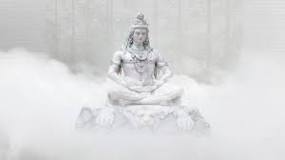
What is Lord Shiva Favourite food?
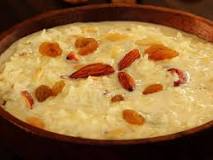
The Mahayogi loves kand-mool as per the shashtras. His favouries include bhang, dhatura, milk, thandai and sweets white in colour.
RATIONAL DISCUSSION-
Can music heal a person?
Answer-Musical Navik definately believes so. There are many physical attributes to sustain the claim. In some environment it can be felt and practically and physically proven.
Does raga contain gender?
What aroma relieves stress?
What is a calming mantra?
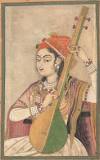
Who is the first song in India?
What is raga theory?
Which raga is most difficult?
Which is the most powerful raag?
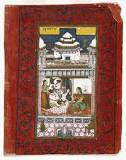
Bhairav is a Hindustani classical raga of Bhairav thaat. It is a sampurna raga that is traditionally performed in the morning and also as the beginning piece in concerts. It is the defining raga of its own Thaat.
Raga Kalingda in Hindustani and Ragam Mayamalavagowla in Carnatic music have the same scale as Raga Bhairav, although the moods they create can be quite different due to the way they are expounded.
According to Indian classical vocalist Pandit Jasraj, Bhairav is a "morning raga, and solemn peacefulness is its ideal mood."
It is grave in mood and suggests seriousness, introversion and devotional attitude.
RAAG BHAIRAV
That- BHAIRAV
Type-SAMPURNA
Time of day-Daybreak; Beginning of concerts (Sunrise)
Arohana- Sa Re Ga Ma Pa Dha Ni Sa'
Avarohana- Sa' Ni Dha Pa Ma Ga Re Sa
Pakad- Ga Ma Dha Dha Pa, Ga Ma Re Re Sa
Vadi
Dha
Samavadi
Re
Equivalent
- Mayamalavagowla
- Double harmonic scale
- Kalingda
- Gauri
- Ahir Bhairav
- Nat Bhairav Ramkali
6 MAIN Elements of a raaga EXPLAINED!
Arohana
Arohana, Arohanam or Aroha, in the context of Indian classical music, is the ascending scale of notes in a raga.[1] The pitch increases as we go up from Shadja (Sa) to the Taar Shadja (Sa), possibly in a crooked (vakra) manner.
Avarohana
An Avarohana, Avarohanam or Avaroha, in the context of Indian classical music, is the descending scale of any raga.[1] The notes descend in pitch from the upper tonic (taar shadja or Sa) down to the lower tonic, possibly in a crooked (vakra) manner.
Pakad
In Hindustani music, a pakad (Hindi: पकड़) is a generally accepted musical phrase (or set of phrases) thought to encapsulate the essence of a particular raga. The pakad contains the melodic theme of the raga, on listening to the pakad a person who knows the raga is usually able to identify it. In many cases, the ragas contain the same swaras (notes), then the pakad also contains information about gayaki or chalan (the way the notes are to be ordered and played/sung). Usually, the pakad is formed from short convolutions of the arohana and avarohana, while in some cases it is quite different from them. The pakad for a particular raga need not be unique, its sole purpose is to clarify what raga it is.
For example, here is a pakad for raga Yaman, a prominent raga from Hindustani music:
Ni* Re Ga Ma# Pa, Ma# Ga Re Sa. An important aspect of a Pakad is Laya. Lay essentially means time, but contextually, it means how time is spent. Lay helps us to place emphasis on specific notes by giving them longer playing time - this helps to properly space apart notes. Without spacing apart notes accordingly, a Raag will fail to show it’s true characteristics, and this is why a Pakad is important to truly understand a raag.
Chalan (music)
In Hindustani music, a Chalan is an extensive series of note patterns which summarises the development of a particular raga. It discloses the basic grammar of the raga and provides a treatment and melodic context of each tone.
Chalan is the movement of a raga or development of a raga while performing Alap. It may also refer to a Pakad of a raga. (Note: Chalan is mostly similar to the Pakad of a raga)
For example, the Chalan of the Kedar (raga) is सा म ग प मे (tivra) म रे सा |
Beneath are some Chalans of different ragas for better understanding:
- Bridabani Sarang - Ni Sa Re Ma Re Pa Ma Re Ni Sa
- Sohni - Sa Ni Dha, Ga Ma# Dha Ga Ma# Ga
- Ahir Bhairav - S r G M G M r ṇ Ḍ ṇ r S
Vadi, in both Hindustani classical music and Carnatic music, is the tonic (root) swara (musical note) of a given raga (musical scale).
"Vadi is the most sonant or most important note of a Raga." It does not refer to the most played note but it rather refers to a note of special significance. It is usually the swara which is repeated the greatest number of times, and often it is the swara on which the singer can pause for a significant time.
Vadi swara in a raga is like a king in a kingdom. The specialty of any raaga depends on vadi swara and because of this, the vadi swara is also called the Jeeva swara or the Ansha swara. A good artist uses vadi swara in different ways like singing vaadi swara again and again, starting a raga with vadi swara, to end a raaga with vadi swara, singing vadi swara many times in important places with different swaras or sometime singing vadi swara for a longer time in one breath.
Vadi swara is also helpful to identify the appropriate time for singing or playing a raga.
If the vadi swara of a raaga is from the purvanga part of the saptak i.e. “Sa Re Ga Ma”, then it is called purvanga vaadi raaga and usually the time for singing or playing purvanga vaadi raagas is from midnight to noon.
For example, ragas like Bhimpalasi, Pilu, Purvi, Marwa, Yaman, Bhoopali, and Bageshree etc. have purvanga vadi swara and so the time for singing and playing these ragas is from noon to midnight. (AFTER NOON 1200 to 2400 HRS)
In the same way, if the vaadi swara of a raaga is from the utranga part of the saptak i.e. “Ma Pa Dha Ni” then it is classed as a utraanga vaadi raaga and the time for singing or playing utraanga vaadi ragas is from midnight to noon. (2400 hrs to 1200 AM).
For example, ragas in Hindustani classical music like Bhairav, Bhairavi, Bilawal, Kalingada, Sohini, and Asavari etc. have utraanga vaadi swara and so the time for singing or playing these ragas is between midnight to noon. (2400 hrs to 1200 AM).
Vaadi swara, along with the Samavadi swara of a raga, usually brings out the uniqueness of the raga and its bhaava (mood) and rasa (emotion). i.e (Bhavna)
Samavadi
The Samavadi is the second-most prominent (though not necessarily second-most played) note of a raga in Indian classical music. The primary note of the raga is the vadi; the vadi and samvadi are in most cases a fourth or fifth apart.
A samavadi is a note of special significance. It is like the ministry to the monarch.(clarification needed) A performer will typically try to emphasize the samvadi along with the vadi when improvising on a certain raga. The vadi and samvadi can be crucial in defining the raga at hand, and in some cases two ragas with the same arohana and avrohana can be distinguished only by the prominence of their sonant[clarification needed] and consonant notes.
Which ragas of Hindustani music were created after 19th century?
Raag Hussaini Kanada - Ustad Bahadur Hussain Khan
Raag Hemant - Allauddin Khan
Raag Gunji Kanada - Pandit Vishnu Digambar Paluskar
Raag Jaiwant Todi - Maharana Jaiwant Singh Waghela
Raag Bagkauns - Maharana Jaiwant Singh Waghela
Raag Gyankali - Maharana Jaiwant Singh Waghela
Raag Pranavranjini - Omkarnath Thakur
Raag Ranjani Kalyan - Shrikrishna Narayan Ratanjankar
Raag Gopika Basant - Shrikrishna Narayan Ratanjankar
Raag Marga Bihag - Shrikrishna Narayan Ratanjankar
Raag Kedar Bahar - Shrikrishna Narayan Ratanjankar
Raag Sawani Kedar - Shrikrishna Narayan Ratanjankar
Raag Hansaranjani - Shrikrishna Narayan Ratanjankar
Raag Salagvarali - Shrikrishna Narayan Ratanjankar
Raag Jogkauns - Pandit Jagannath Buwa Purohit
Raag Amirkhani Kauns - Ustad Amir Khan
Raag Ahir Lalit - Pandit Ravi Shankar
Raag Nat Bhairav - Pandit Ravi Shankar
Raag Bairagi - Pandit Ravi Shankar
Raag Bairagi Todi - Pandit Ravi Shankar
Raag Bairagi Bhairav - Pandit Ravi Shankar
Raag Tilak Shyam - Pandit Ravi Shankar
Raag Monomanjari - Pandit Ravi Shankar
Raag Parameshwari - Pandit Ravi Shankar
Raag Jogeshwari - Pandit Ravi Shankar
Raag Purabi Kalyan - Pandit Ravi Shankar
Raag Kalashri - Pandit Bhimsen Joshi
Raag Chandranandan - Ustad Ali Akbar Khan
Raag Pancham Jogeshwari - Vishwanath Rao Ringe
Raag Hemashri - Vishwanath Rao Ringe
Raag Gandhi Malhar - Pandit Kumar Gandharva
Raag Shiv Bhatiyar - Pandit Kumar Gandharva
Raag Sindhura Jhinjhoti - Pandit Kumar Gandharva
Raag Madhsurja - Pandit Kumar Gandharva
Raag Sanjaari - Pandit Kumar Gandharva
Raag Mishravanti Jhinjhoti - Pandit Kumar Gandharva
Raag Utaraa Kalyan - Pandit Kumar Gandharva
Raag Shiv Abhogi - Pandit C. R. Vyas
Raag Dhanakoni Kalyan - Pandit C. R. Vyas
Raag Sagera - Pandit C. R. Vyas
Raag Shuddha Ranjini - Pandit C. R. Vyas
Raag Sanjogiya - Pandit C. R. Vyas
Raag Araj - Ustad Abdul Halim Jaffer Khan
Raag Gunaranjini - Dinkar Kaikini
Raag Hussaini Kanada - Ustad Yunus Hussain Khan
Raag Sahana Kanada - Ustad Yunus Hussain Khan
Raag Pat Bihag - Ustad Yunus Hussain Khan
Raag Tribhuvan Malhar - Jaysukhlal Shah
Raag Vibhavri - Amjad Ali Khan
Raag Swar Sameer - Amjad Ali Khan
Raag Kiran Ranjani - Amjad Ali Khan
Raag Chandra Dhwani - Amjad Ali Khan
Raag Hari Priya Kanada - Amjad Ali Khan
Raag Suhaag Bhairav - Amjad Ali Khan
Raag Amiri Todi - Amjad Ali Khan
Raag Lalita Dhwani - Amjad Ali Khan
Raag Shyamshri - Amjad Ali Khan
Raag Saraswati Kalyan - Amjad Ali Khan
Raag Priyadarshani - Amjad Ali Khan
Raag Shivanjali - Amjad Ali Khan
Raag Mangresh - Amjad Ali Khan
Raag Jawahar Manjari - Amjad Ali Khan
Raag Shantana - Amjad Ali Khan
Raag Kamalshri - Amjad Ali Khan
Raag Ganesh Kalyan - Amjad Ali Khan
Raag Subhalakshmi - Amjad Ali Khan
Raag Shyama Gouri - Amjad Ali Khan
Raag Aahuti - Amjad Ali Khan
Raag Rahat Kauns - Amjad Ali Khan
Raag Haafiz Kauns - Amjad Ali Khan
Raag Shyama Gouri - Amjad Ali Khan
Raag Saawan Malhar - Amjad Ali Khan
Raag Madhukauns - Chaitanya Kunte
Raag Neelkauns - Shri Pritam Bhattacharjee
and many many more.
The latest one is Saawan Malhar composed in the year 2008.
Madhukauns and Neelkauns were also composed in 21st century
About Melakartha Ragas in Carnatic Music System (INDIAN)
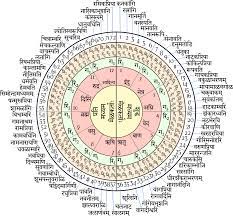


| Raga Number | Melakarta Raga Name | Arohana | Avarohna |
| 01. | kanakAngi | S R1 G1 M1 P D1 N1 S | S N1 D1 P M1 G1 R1 S |
| 02. | rathnAngi | S R1 G1 M1 P D1 N2 S | S N2 D1 P M1 G1 R1 S |
| 03. | gAnamUrthi | S R1 G1 M1 P D1 N3 S | S N3 D1 P M1 G1 R1 S |
| 04. | vanaspathi | S R1 G1 M1 P D2 N2 S | S N2 D2 P M1 G1 R1 S |
| 05. | mAnavathi | S R1 G1 M1 P D2 N3 S | S N3 D2 P M1 G1 R1 S |
| 06. | thAnarUpi | S R1 G1 M1 P D3 N3 S | S N3 D3 P M1 G1 R1 S |
| 07. | sEnAvathi | S R1 G2 M1 P D1 N1 S | S N1 D1 P M1 G2 R1 S |
| 08. | HanumathOdi | S R1 G2 M1 P D1 N2 S | S N2 D1 P M1 G2 R1 S |
| 09. | DhEnukA | S R1 G2 M1 P D1 N3 S | S N3 D1 P M1 G2 R1 S |
| 10. | nAtakapriya | S R1 G2 M1 P D2 N2 S | S N2 D2 P M1 G2 R1 S |
| 11. | kOkilapriya | S R1 G2 M1 P D2 N3 S | S N3 D2 P M1 G2 R1 S |
| 12. | rUpavathi | S R1 G2 M1 P D3 N3 S | S N3 D3 P M1 G2 R1 S |
| 13. | gAyakapriya | S R1 G3 M1 P D1 N1 S | S N1 D1 P M1 G3 R1 S |
| 14. | vakulAbharaNam | S R1 G3 M1 P D1 N2 S | S N2 D1 P M1 G3 R1 S |
| 15. | mAyAmALava gowLA | S R1 G3 M1 P D1 N3 S | S N3 D1 P M1 G3 R1 S |
| 16. | chakravAkam | S R1 G3 M1 P D2 N2 S | S N2 D2 P M1 G3 R1 S |
| 17. | sUryakAntam | S R1 G3 M1 P D2 N3 S | S N3 D2 P M1 G3 R1 S |
| 18. | HAtakAmbari | S R1 G3 M1 P D3 N3 S | S N3 D3 P M1 G3 R1 S |
| 19. | JankAradhvani | S R2 G2 M1 P D1 N1 S | S N1 D1 P M1 G2 R2 S |
| 20. | naTabhairavi | S R2 G2 M1 P D1 N2 S | S N2 D1 P M1 G2 R2 S |
| 21. | kIravANi | S R2 G2 M1 P D1 N3 S | S N3 D1 P M1 G2 R2 S |
| 22. | KaraHarapriya | S R2 G2 M1 P D2 N2 S | S N2 D2 P M1 G2 R2 S |
| 23. | gowrimanOHari | S R2 G2 M1 P D2 N3 S | S N3 D2 P M1 G2 R2 S |
| 24. | varuNapriya | S R2 G2 M1 P D3 N3 S | S N3 D3 P M1 G2 R2 S |
| 25. | mAraranjani | S R2 G3 M1 P D1 N1 S | S N1 D1 P M1 G3 R2 S |
| 26. | chArukeshi | S R2 G3 M1 P D1 N2 S | S N2 D1 P M1 G3 R2 S |
| 27. | sarasAngi | S R2 G3 M1 P D1 N3 S | S N3 D1 P M1 G3 R2 S |
| 28. | HarikAmbhOji | S R2 G3 M1 P D2 N2 S | S N2 D2 P M1 G3 R2 S |
| 29. | DhIrashankarAbharaNam | S R2 G3 M1 P D2 N3 S | S N3 D2 P M1 G3 R2 S |
| 30. | nAgAnandhini | S R2 G3 M1 P D3 N3 S | S N3 D3 P M1 G3 R2 S |
| 31. | yAgapriya | S R3 G3 M1 P D1 N1 S | S N1 D1 P M1 G3 R3 S |
| 32. | rAgavarDhani | S R3 G3 M1 P D1 N2 S | S N2 D1 P M1 G3 R3 S |
| 33. | gAngeyabhushani | S R3 G3 M1 P D1 N3 S | S N3 D1 P M1 G3 R3 S |
| 34. | vAgaDhIsvari | S R3 G3 M1 P D2 N2 S | S N2 D2 P M1 G3 R3 S |
| 35. | shUlini | S R3 G3 M1 P D2 N3 S | S N3 D2 P M1 G3 R3 S |
| 36. | chalanAta | S R3 G3 M1 P D3 N3 S | S N3 D3 P M1 G3 R3 S |
| 37. | sAlagam | S R1 G1 M2 P D1 N1 S | S N1 D1 P M2 G1 R1 S |
| 38. | jalArnavam | S R1 G1 M2 P D1 N2 S | S N2 D1 P M2 G1 R1 S |
| 39. | JAlavarALi | S R1 G1 M2 P D1 N3 S | S N3 D1 P M2 G1 R1 S |
| 40. | navanItham | S R1 G1 M2 P D2 N2 S | S N2 D2 P M2 G1 R1 S |
| 41. | pAvani | S R1 G1 M2 P D2 N3 S | S N3 D2 P M2 G1 R1 S |
| 42. | raGupriya | S R1 G1 M2 P D3 N3 S | S N3 D3 P M2 G1 R1 S |
| 43. | gavAmbodhi | S R1 G2 M2 P D1 N1 S | S N1 D1 P M2 G2 R1 S |
| 44. | bhavapriya | S R1 G2 M2 P D1 N2 S | S N2 D1 P M2 G2 R1 S |
| 45. | shubhapanthuvarALi | S R1 G2 M2 P D1 N3 S | S N3 D1 P M2 G2 R1 S |
| 46. | shadhvidha mArgiNi | S R1 G2 M2 P D2 N2 S | S N2 D2 P M2 G2 R1 S |
| 47. | suvarNAngi | S R1 G2 M2 P D2 N3 S | S N3 D2 P M2 G2 R1 S |
| 48. | dhivyAmaNi | S R1 G2 M2 P D3 N3 S | S N3 D3 P M2 G2 R1 S |
| 49. | dhavalAmbari | S R1 G3 M2 P D1 N1 S | S N1 D1 P M2 G3 R1 S |
| 50. | nAmanArAyaNi | S R1 G3 M2 P D1 N2 S | S N2 D1 P M2 G3 R1 S |
| 51. | kAmavardhini (Pantuvarali) | S R1 G3 M2 P D1 N3 S | S N3 D1 P M2 G3 R1 S |
| 52. | rAmapriya | S R1 G3 M2 P D2 N2 S | S N2 D2 P M2 G3 R1 S |
| 53. | gamanashrama | S R1 G3 M2 P D2 N3 S | S N3 D2 P M2 G3 R1 S |
| 54. | vishvAmbhari | S R1 G3 M2 P D3 N3 S | S N3 D3 P M2 G3 R1 S |
| 55. | shyAmaLAngi | S R2 G2 M2 P D1 N1 S | S N1 D1 P M2 G2 R2 S |
| 56. | shanmuKapriya | S R2 G2 M2 P D1 N2 S | S N2 D1 P M2 G2 R2 S |
| 57. | simHendra madhyamam | S R2 G2 M2 P D1 N3 S | S N3 D1 P M2 G2 R2 S |
| 58. | HemAvathi | S R2 G2 M2 P D2 N2 S | S N2 D2 P M2 G2 R2 S |
| 59. | DharmAvathi | S R2 G2 M2 P D2 N3 S | S N3 D2 P M2 G2 R2 S |
| 60. | nIthimathi | S R2 G2 M2 P D3 N3 S | S N3 D3 P M2 G2 R2 S |
| 61. | kAnthAmaNi | S R2 G3 M2 P D1 N1 S | S N1 D1 P M2 G3 R2 S |
| 62. | rishabhapriya | S R2 G3 M2 P D1 N2 S | S N2 D1 P M2 G3 R2 S |
| 63. | lathAngi | S R2 G3 M2 P D1 N3 S | S N3 D1 P M2 G3 R2 S |
| 64. | vAchaspathi | S R2 G3 M2 P D2 N2 S | S N2 D2 P M2 G3 R2 S |
| 65. | mEchakalyANi | S R2 G3 M2 P D2 N3 S | S N3 D2 P M2 G3 R2 S |
| 66. | chithrAmbari | S R2 G3 M2 P D3 N3 S | S N3 D3 P M2 G3 R2 S |
| 67. | sucharithra | S R3 G3 M2 P D1 N1 S | S N1 D1 P M2 G3 R3 S |
| 68. | jyothisvarUpiNi | S R3 G3 M2 P D1 N2 S | S N2 D1 P M2 G3 R3 S |
| 69. | dhAtuvardhani | S R3 G3 M2 P D1 N3 S | S N3 D1 P M2 G3 R3 S |
| 70. | nAsika bhUshaNi | S R3 G3 M2 P D2 N2 S | S N2 D2 P M2 G3 R3 S |
| 71. | kosalam | S R3 G3 M2 P D2 N3 S | S N3 D2 P M2 G3 R3 S |
| 72. | rasikapriya | S R3 G3 M2 P D3 N3 S | S N3 D3 P M2 G3 R3 |
CARNATIC MUSIC GLOSsARY (INDIAN MUSIC)
- Carnatic music terms are briefly described in this page. Major terms have their own separate article pages, while minor terms are defined/described here. The order of terms is from basic to related terms, rather than alphabetic.
- Contents
- Main terms
- 1.1 Nāda
- 1.1.1 Anahata Nāda
- 1.1.2 Ahata Nāda
- 1.2 Śruti
- 1.3 Sthayi
- 1.4 Swaram
- 1.5 Rāga
- 1.6 Ārōhanam
- 1.7 Avarōhanam
- 1.8 Melakartā
- 1.9 Asampūrna Melakartā
- 1.10 Chakra
- 1.11 Janya
- 1.12 Tālam
- 1.13 Ālāpana
- 1.14 Niraval
- 1.15 Kalpanaswaram
- 1.16 Tānam
- 1.17 Rāgamālika
- 1.18 Rāgam Tānam Pallavi
- 1.19 Viruttam
- 1.20 Manōdharma
- 1.21 Kalpita sangeetam
- 2 Swarams
- 2.1 Shadjam
- 2.2 Rishabham
- 2.3 Gāndhāram
- 2.4 Madhyamam
- 2.5 Panchamam
- 2.6 Dhaivatam
- 2.7 Nishādham
- 2.8 Anya swaram
- 2.9 Sthāi
- 2.10 Anga
- 2.11 Gamaka
- 2.12 Vādi
- 2.13 Samvādi
- 2.14 Vivādi
- 2.15 Anuvādi
- 3 Janthi rāgams
- 3.1 Prayōgam
- 3.2 Vishesha Prayōgam
- 3.3 Varjya
- 3.4 Vakram
- 3.5 Upānga
- 3.6 Bhāshānga
- 3.7 Nishādhāntya
- 3.8 Dhaivatāntya
- 3.9 Panchamāntya
- 3.10 Madhyama sruti
- 4 Swaram counts
- 4.1 Sampūrna rāgam
- 4.2 Shādava rāgam
- 4.3 Owdava rāgam
- 4.4 Svarantara rāgam
- 5 Tālam components
- 5.1 Jathi
- 5.2 Gati
- 5.3 Laghu
- 5.4 Dhrutham
- 5.5 Anudhrutham
- 5.6 Āvartanam
- 5.7 Graham
- 6 Tālams
- 6.1 Rūpaka tālam
- 6.2 Triputa tālam
- 6.3 Dhruva tālam
- 6.4 Matya tālam
- 6.5 Jhampa tālam
- 6.6 Ata tālam
- 6.7 Eka tālam
- 6.8 Ādhi tālam
- 6.9 Khanda chāpu tālam
- 6.10 Misra chāpu tālam
- 6.11 Desādhi tālam
- 7 Layā
- 7.1 Kāla
- 8 Learning exercises
- 8.1 Sarali varisai
- 8.2 Swarāvali
- 8.3 Janta varisai
- 8.4 Dhātu varisai
- 8.5 Alankāra
- 9 Types of composition
- 9.1 Geetham
- 9.2 Swarajati
- 9.3 Varnam
- 9.4 Keerthanam
- 9.5 Kriti
- 9.6 Thillana
- 10 Parts of a composition
- 10.1 Pallavi
- 10.2 Anupallavi
- 10.3 Charanam
- 10.4 Chittaswaram
- 10.5 Muktāyi swaram
- 11 Other
- 11.1 Tani avartanam
- 11.2 Tukkada
- 11.3 Avadhana Pallavi
- 11.4 Konnakol
- Main terms
- Nāda-Nāda refers to music or musical sound. It also refers to the tone of a musical instrument.
- Anahata Nāda-Anāhata Nāda refers to the naturally occurring sounds (literally not struck).
- Ahata Nāda-Ahata Nāda refers to generated sounds or sounds made by efforts of man (literally that which is heard). It is of 6 types. 1. Shareeraja - it emanates from the human throat. Example: vocal singing 2. Dhanuja - is born from string instruments. Example: Violin,veena etc.3. Vayuja - us born when air is passed through narrow pipe like instruments. Example: Flute, nadaswaram etc.4. Charmaja 5. Lohaja 6.Nakhaja
- Śruti-Śruti is musical pitch. It is considered to be equivalent to tonic of western music. This is the pitch at which the drone is set, which is usually played by a tambura.
- Sthayi- In Carnatic music, Sthayi refers to the octave. Madhyama sthayi refers to the middle octave, Tara sthayi refers to the upper octave and Mandra sthayi refers to the lower octave.
- Swaram-Swaram or Swara is a single note. Each swaram defines the position of note in relation to the Śruti.
- Rāga-A rāgam prescribes a set of rules for building a melody - very similar to the Western concept of mode. Different combination of swarams and swaram phrases form different rāgams.
- Ārōhanam-Ārōhanam of a ragam is the ascending scale of the rāgam. It describes the rules for singing ascending notes of a rāgam, including the swarams to use and swaram patterns that form the rāgam.
- Avarōhanam-Avarōhanam of a rāgam is the descending scale of the rāgam. It describes the rules for singing descending notes of a rāgam.
- Melakartā-A Melakartā rāgam is one which has all seven swarams, namely, Sa, Ri, Ga, Ma, Pa, Dha and Ni (sampoorna rāgam). The ārōhanam and avarōhanam of a melakartā ragam are strictly ascending and descending scales. It is also known as janaka rāgam (parent rāgam), because other rāgams are derived from it.
- Asampūrna Melakartā-One of the 72 parent rāgams first created by Venkatamakhin which did not have strict rules of ascending / descending scales, did not insist on inclusion of all 7 swaras nor disallow vakra prayogas (zig zag notes in scale).
- Chakra-A chakra consists of a group of 6 Melakartā rāgams, which differ from each other only in the Dhaivatham and Nishadham.
- Janya-A Janya rāgam is one which is derived from a Melakartā rāgam. It may have (a) a subset of the seven swarams Sa, Ri, Ga, Ma, Pa, Dha and Ni (varjya rāgam), (b) an external swaram (anya swaram) not found in its parent or (c) vakra prayōgam of swarams in Ārōhanam or Avarōhanam (zig-zag sequence of notes, instead of strictly ascending or descending scales).
- Tālam-Tālam refers to the rhythm cycle or beat cycle for a particular song.
- Ālāpana-Ālāpana is a preface to a song, which explores the rāgam of the song, without any lyrics. It is a slow improvisation with no tālam (rhythm).
- Niraval-Sāhitya vinyāsam/Niraval or Neraval is the repeated singing of one or two lines of a song, with improvised exposition in each repetition. Sāhitya vinyāsam in Tamil language is referred as Neraval.
- Kalpanaswaram-Kalpanaswaram literally means imagined swarams. It is the singing of swarams of the rāgam of a song, following the completion of the song. Though many phrases of the swarams may have been practiced, experienced artists may spontaneously play new phrases within the rāgam's rules - hence the term Kalpana. It is an improvisation of the rāgam, by singing the swarams, namely Sa, Ri, Ga, Ma, Pa, Dha and Ni.
- Tānam-Tānam is rhythmic/rhythm based improvisation of the rāgam. It is done with rhythm based syllables like tha, nam, thom and na. It is usually included as second part in a Rāgam Tānam Pallavi.
- Rāgamālika-Rāgamālika, which literally means garland of rāgams, is a composition that has different verses set to different rāgams. Rāgamālika swarams refers to singing of Kalpanaswarams in different rāgams.
- Rāgam Tānam Pallavi-Rāgam Tānam Pallavi is a rendition of Carnatic music which lends to total improvisation, in different forms. It consists of Rāgam Ālāpana (rāgam), Tānam and a Pallavi line. The pallavi line is sung many times in different speeds, different ranges of the rāgam and different octaves. This is usually followed by Kalpanaswarams, sometimes in multiple rāgams (rāgamālika).
- Viruttam-Viruttam is a devotional verse or phrase sung (without talam) in an impromptu choice of rāgam or rāgamālika usually before a song. The rāgam (or last rāgam in case of rāgamālika) is usually the same as that of the song that follows.
- Manōdharma-Manōdharma is the concept of impromptu or spontaneous improvisation, which is one of the important aspects of Carnatic music. There are many types of improvisations, like Rāgam Ālāpana, Thānam, Niraval, Viruttam and Kalpanaswaram.
- Kalpita sangeetam-Kalpita sangeetam is music that is already composed, learnt and practiced. It is opposite of Manodharma sangeetam, which complements Kalpita sangeetam.
- Swarams-The seven swarams in Carnatic music, then followed by other terms related to swaram.
- Shadjam-The first swaram in the scale is Shadjam (Sa). It is invariant and is always included in all ragams.
- Rishabham-The second swaram in the scale is Rishabham (Ri). It has three pitch possibilities, namely Suddha, Chathusruti and Shatsruti.
- Gāndhāram-The third swaram in the scale is Gāndhāram (Ga). It has three pitch possibilities, namely Suddha, Sādhārana and Antara.
- Madhyamam-The fourth swaram in the scale is Madhyamam (Ma). It has two pitch possibilities, namely Suddha and Prati.
- Panchamam-The fifth swaram in the scale is 'Panchamam' (Pa). It is invariant.
- Dhaivatam-The sixth swaram in the scale is Dhaivatam (Dha). It has three pitch possibilities, namely Suddha, Chathusruti and Shatshruti.
- Nishādham-The seventh swaram in the scale is Nishādham (Ni). It has three pitch possibilities, namely Suddha, Kaisiki and Kaakali.
- Anya swaram-Anya swaram in a janya rāgam is a swaram that is not found in its parent rāgam (melakartā rāgam). Anya means outside the set/group.
- Sthāi-Sthāyi refers to an octave of music. There are 5 sthāyis in Carnaatic music, namely,
- Anumandara (lowest),-Mandara (literally means chant, which means lower), Madhya (literally means middle),Taara (means higher) and Athitaara (meaning very high). Most artists sing over two octaves or two and a half octaves range (within Mandra, Madhya and Taara sthaayis).Very few can sing well in bigger ranges of 3 or more octaves.
- Anga-Anga means part. In the context of a rāgam's scale, the terms poorvaanga (meaning former part, in this case first-half) and uttaraanga (latter part, or second-half) are used. Sa, Ri, Ga and Ma notes in a scale are referred are poorvaanga, while Pa, Dha and Ni are referred as uttaraanga
- Gamaka-Gamaka is the term used for variations of the swarams in a scale. It can refer to the shake of the note, grace around the note, decoration or embellishment of the swaram. It is an integral part of most rāgams, as it is not arbitrary but is essential part of the structure/ scale.
- Vādi-Vādi swaram in a rāgam is the main/ primary swaram of importance in it. A vādi swaram is repeated quite often in a rendition.
- Samvādi-Samvādi swaram in a rāgam has a concordant effect with the vādi swaram. It has a good effect to the ear (melody or pleasing) along with the vādi. In Western music it is equivalent of the consonant.
- Vivādi-Vivādi swaram in a rāgam has a discordant effect with the vādi swaram in it. It may not have a pleasing effect when sounded together, but composers use appropriate phrases so that such discordant effect is skipped or avoided. In Western music it is equivalent of the dissonant.
- Anuvādi-Anuvādi swaram in a rāgam has neither concordant nor discordant effect with the vādi swaram.
- Janthi rāgams-
- Prayōgam-A musical notes phrase of a rāgam (series of swarams sung in a particular rāgam) is known as Prayōgam.
- Vishesha Prayōgam-Vishesha means special. Hence, important phrases of a rāgam are known as Vishesha Prayōgams.
- Varjya-Missing swarams in a janya rāgam, when derived from a melakartā rāgam are referred as varjya. For example, Rishabham and Panchamam are varjya in Hindolam when derived from Natabhairavi.
- Vakram-Swarams are said to be vakram in a rāgam, if either the Ārōhanam, Avarōhanam or both, do not follow a strictly ascending or descending order. They go up and down (example, 2 steps forward one step back). In such a rāgam, these swarams should always use the same order to give the unique melody of the rāgam.
- Upānga-A janya rāgam is Upānga if all the swarams in its scale are strictly derived from its melakartā rāgam (parent). There are no anya swarams (external swarams).
- Bhāshānga-A janya rāgam is Bhāshānga if an anya swaram is introduced in its scale, when derived from its melakartā rāgam (parent).
- Nishādhāntya-A janya rāgam is Nishādhāntya if the highest note that can be played is the Nishādham. The rules for such rāgams are that they should be played or sung within the single octave - Ni, Sa, Ri, Ga, Ma, Pa, Dha, Ni. Examples are Naadanaa makriya and Punnāgavarāli rāgams.
- Dhaivatāntya-A janya rāgam is Dhaivadhāntya if the highest note that can be played is the Dhaivatam. The rules for such rāgams are that they should be played or sung within the single octave - Dha, Ni, Sa, Ri, Ga, Ma, Pa, Dha. Example Kurinji rāgam.
- Panchamāntya-A janya rāgam is Panchamāntya if the highest note that can be played is the Panchamam. The rules for such rāgams are that they should be played or sung within the single octave - Pa, Dha, Ni, Sa, Ri, Ga, Ma, Pa. Example Navroj rāgam.
- Madhyama sruti-Tuning the sruti (tonic note) to Ma (and also changing Pa string of Tambura to Ma) is called Madhyama sruti. It is usually set for Panchamāntya, Dhaivadhāntya and Nishādhāntya rāgams.
- Swaram counts-The following terms are applicable to ascending scale (ārōhanam) of a rāgam, descending scale (avarōhanam) of a rāgam, or the rāgam as a whole.
- Sampūrna rāgam-Sampurna rāgam is a rāgam that has all seven swarams, namely, Sa, Ri, Ga, Ma, Pa, Dha and Ni.
- Shādava rāgam-Shādava rāgam is a rāgam that has only six of the seven swarams in its scale.
- Owdava rāgam-Owdava rāgam is a rāgam that has only five of the seven swarams in its scale. It is a pentatonic scale.
- Svarantara rāgam-Svaraantara rāagam is a rāgam that has only four of the seven swarams in its scale.
- Tālam components
- Jathi-Jathi of a tālam specifies beat count of the rhythm cycle. It specifically applies to laghu component(s) of the tālam and not necessarily to the entire tālam. The different jathis are tisra (three beats in lagu), chathusra (four), khanda (five), misra (seven) and sankeerna (nine).
- Gati-Gati of a tālam specifies sub-divisions of a beat in a composition. It is also referred as Nadai. Chathusra gati is the most common (four), followed by Tisra (three). Others are Khanda, Misra and Sankeerna.
- Laghu-Laghu is the component of a tālam which is the variant part. Its beat count is dependent on the jāti of the tālam. The action for counting includes a tap / clap, followed by a count of sub-beats of the full rhythm cycle. Note that a tisra jāti laghu is actually 1 clap and 2 counts = 3 beats.
- Dhrutham-Dhrutham is the component of a tālam which is invariant and includes only two beats. Its action includes a tap/clap, followed by a veechu (wave).
- Anudhrutham-Anudhrutham is the component of a tālam which is invariant and includes only one beat. Its action is a tap/clap.
- Āvartanam-Āvartanam of a tālam refers to one cycle of the tālam. Most tālams have at least 1 laghu, except for the rare tālams (see tālam page).
- Graham-Graham or Eduppu( Tamil) means start. Eduppu denotes the point within the Āvartanam of a tālam when a composition or stanza in a composition begins. Onru (one beat later, meaning second beat), Onrarai (one and half beat later, meaning between 2nd and 3rd beat) are common, other than Samam (meaning equal) which starts in synchronization with the beginning of a tālam.
- Tālams
- Rūpaka tālam-Rūpaka tālam refers to the group of tālams that consist of 1 dhrutam, followed by 1 lagu. Rūpaka tālam also refers to chathusra-jathi rūpaka tālam as a default (2 + 4 = 6 beats in an āvartanam).
- Triputa tālam-Triputa tālam refers to the group of tālams that consist of 1 laghu, followed by 2 dhrutams. Triputa tālam also refers to tisra-jathi triputa tālam as a default (3 + 2 + 2 = 7 beats in an āvartanam).
- Dhruva tālam-Dhruva tālam refers to the group of tālams that consist of 1 lagu, followed by 1 dhrutam, followed by two lagus. Dhruva tālam also refers to chathusra-jathi dhruva tālam as a default (4 + 2 + 4 + 4 = 14 beats in an āvartanam), unless a different jathi is specified.
- Matya tālam-Matya tālam refers to the group of tālams that consist of 1 lagu, followed by 1 dhrutam, followed by 1 lagu. Matya tālam also refers to chathusra-jathi matya tālam as a default (4 + 2 + 4 = 10 beats in an āvartanam).
- Jhampa tālam-Jhampa tālam refers to the group of tālams that consist of 1 lagu, followed by 1 anudhrutam, followed by 1 dhrutam. Jhampa tālam also refers to misra-jathi jhampa tālam as a default (7 + 1 + 2 = 10 beats in an āvartanam).
- Ata tālam-Ata tālam refers to the group of tālams that consist of 2 lagus, followed by 2 dhrutams. Ata tālam also refers to khanda-jathi ata tālam as a default (5 + 5 + 2 + 2 = 14 beats in an āvartanam).
- Eka tālam-Eka tālam refers to the group of tālams that consist of 1 lagu only. Eka tālam also refers to chathusra-jathi eka tālam as a default (4 beats in an āvartanam).
- Ādhi tālam-Ādhi tālam refers to chathusra-jathi triputa tālam (4 + 2 + 2 = 8 beats in an āvartanam), which is very common in Carnatic music. This is the equivalent of 8 beat/16 beat of Western music.
- Khanda chāpu tālam-Khanda chāpu refers to a tālam with 10 beat āvartanam (Khanda literally means 5) which does not fit into above classification of tālams.
- Misra chāpu tālam-Misra chāpu refers to a tālam with 14 beat āvartanam (Misra literally means 7) which does not fit into above classification of tālams.
- Desādhi tālam-Desādhi refers to ādhi tālam with (8 beat āvartanam), where the eduppu is one and a half beats from beginning of āvaratanam (onrarai).
- Layā-Layā is the tempo or speed of a song. Carnatic music does not define a fixed layā to songs, but traditionally some songs have been sung fast or slow and hence are categorised that way. Typical classification of layā includes Vilambitha (delayed or slow), Madhyama (medium) and Dhuritha (fast). The term Chowka is also used to denote an extra slow tempo and Adi-Dhuritha is used to denote an extra fast one.
- Kāla-Kāla refers to the change of tempo during a rendition of song, typically doubling up the speed. Onnaam kaalam is 1st speed, Irandaam kaalam is 2nd speed and so on. Irandaam kaalam fits in twice the number of aksharaas (notes) into the same beat, thus doubling the tempo. Sometimes, Kāla is also used similar to Layā, for example Madhyama Kālam or Chowka Kālam.
- Learning exercises
- Learning Carnatic music involves most of the following exercises, mostly in the order listed below.
- Sarali varisai-Sarali varisai is used to learn the swarams in the octave, usually in Māyāmālavagowla ragam. It is learnt in simple straight ascending and descending fashion and a few variations. It is also learnt in multiple speeds (kalams).
- Swarāvali-Avali means row or arrangement. Swarāvali are exercises with different arrangements of swarams. It is shortened and referred as Sarali, as in Sarali varisai described above.
- Janta varisai-Janta varisai are exercises used to learn the swarams in the octave in twin fashion (sa sa ri ri ga ga and so on) and a few other combinations. It is also usually learnt in.There are total of 7-8 swarams.Māyāmālavagowla rāgam.
- Dhātu varisai-Dhātu (Kannada) literally means jump. Dhātu varisai are exercises used to learn the swarams in zig-zag fashion, so that more control of the notes and different combinations are achieved. Example, sa ma ri ga, sa ri ga ma, and so on. Each of these exercises are set to different tālams, so that different rhythm aspects are learnt.
- Alankāra-Alankāra means beautiful arrangement of swarams. These exercises are groups or patterns of swarams, each of which are set to seven main tālams, so that rhythm aspect is also learnt together with different rāgams.
- Types of composition
- Geetham-Geetham means song or melody. Geethams are the first songs that are learnt. They are very short and are the first exercises where singing lyrics along with their swaram patterns are learnt.
- Swarajati-Swarajati lead to learning bigger songs / compositions after learning Geethams. They are set to different rāgams and lead towards learning varnams and kritis.
- Varnam-Varnam is a type of composition which is suited for vocal exercises of a wide variety of Carnatic music aspects, including slow and fast tempo of singing, both lyrics and swarams. It is the most complex of vocal exercises. In modern carnatic concerts, it is usually sung as a first song and is supposed to help warm-up.
- Keerthanam-Keerthanam or Kriti is the category of most compositions in Carnatic music. A concert consists mainly of Keerthanams with zero or one of Varnam, Rāgam Thānam Pallavi and Thillānā included in appropriate order.
- Kriti-For Kriti, see Keerthanam above.
- Thillana-Thillānā is a composition consisting of rhythm syllables, like Dheem, thom, tarana and thaani in first two stanzas, followed by a one or two line lyric. In instrumental performances, it is a melodic rhythmic piece.
- Parts of a composition
- Pallavi-Pallavi is the first verse in a composition, especially varnams, Keerthanams or Kritis.
- Anupallavi-Anupallavi is an optional verse that follows the pallavi in a composition, especially keerthanams or kritis.
- Charanam-Charanams are the verse(s) that follow the pallavi or anupallavi (if present).
- Chittaswaram-Chittaswarams are set swaram phrases (solfa passages), in a composition, usually a kriti, appended to enrich its beauty. It is sung at the end of the anupallavi and charanam.
- Muktāyi swaram-Muktāyi swarams are the swaram phrases (solfa passage) that occur after the anupallavi in tāna varnams and which serves as the concluding part of the pūrvanga (first part). This is more related to the songs for dance performances, like Bharatanatyam.
- Other
- Tani avartanam-Tani avartanam refers to the extended solo that is played by the percussionists in a concert.
- Tukkada-Tukkadaas are compositions played towards the end of Carnatic concerts.
- Avadhana Pallavi-Avadhana Pallavi is a classical form of performing a composition set to two different talas.
- Konnakol-Konnakol is the art of performing percussion syllables vocally.
Traditional Songs (LOK GEET) of india
Articles (LOK GEET OF INDIA)
Articles LORI's INDIA
Articles
Events
Russ India Tour | Mumbai Fri, 5–10 pm
This an event article, used for writing about and listing the events planned for the future on your website. You can edit all of this text from the Pages tab by clicking the edit button.
This an event article, used for writing about and listing the events planned for the future on your website. You can edit all of this text from the Pages tab by clicking the edit button.
This an event article, used for writing about and listing the events planned for the future on your website. You can edit all of this text from the Pages tab by clicking the edit button.
Events
The Dover Lane Music Conference is an annual Indian classical music festival held in the month of January at Nazrul Mancha, an outdoor auditorium in south Kolkata. The Dover Lane Music Conference is an all night concert attended by visitors from all over the world.
Testimonials OF MUSICIANS
Testimonials
HINDUSTANI CLASSICAL (BHIMSEN JOSHI & LATA MANGESHKAR)
HINDUSTANI CLASSICAL (BHIMSEN JOSHI)
HINDUSTANI CLASSICAL (BHIMSEN JOSHI)
Single Video (SARIT)
Music Player INDIAN CLASSICAL MUSIC (HINDUSTANI)
Music Player FUJIAN SONGS (Yè Xiànxiū)
Music Player carnatic music LessonS (Language-TELUGU)
Music Player (GYPSY-ROMANI MUSIC)
Music Player (mUSICAL nAVIK MUSIC)
Forum

Here you can find a great community for sharing new ideas and talking about day to day life.
F.A.Q
How many Raags are there in Indian Classical Music, Hindustani
Press

First Press Release
Musical Navik records his first song. Dilber Mere, Tum Jo Mere
Read More
Second Press Release
Musical Navik records his second song.
Read More
Third Press Release
"Musical Navik" launches his youtube Channel "Musical Navik"
Read More
YOU TUBE CHANNEL RELEASE
"Musical Navik" launches his YouTube music channel https://www.youtube.com/results?search_query=musical+navik
Read More
